BLOG
Find out the hottest updates on what is going on in today's tech and IT compass.

Get insight to keep you updated through our regular pieces

Cybersecurity sangat penting bagi software house karena melindungi data sensitif pelanggan dan perusahaan dari serangan cyber. Perusahaan software development harus menerapkan langkah-langkah keamanan yang kuat untuk mencegah pencurian data, kerugian finansial dan kerusakan reputasi yang dapat ditimbulkan oleh pelanggaran keamanan.
Bagi software house yang merupakan perusahaan software development, juga menangani data sensitif pelanggan, seperti informasi pribadi, data keuangan dan rahasia dagang.
Di era transformasi digital, software house Indonesia menjadi mitra kunci bisnis dalam mengembangkan solusi teknologi inovatif. Mereka membantu startup hingga perusahaan besar merancang sistem custom, aplikasi, atau integrasi platform untuk meningkatkan efisiensi dan daya saing.
Cybersecurity membantu melindungi data dari pencurian, akses tidak sah serta penyalahgunaan.
Di era digital yang semakin maju, cybersecurity telah menjadi salah satu isu yang paling penting. Sebagai hasil dari ketergantungan kita yang semakin meningkat pada teknologi, ancaman terhadap keamanan informasi digital juga semakin kompleks dan berbahaya. Keamanan dunia maya tidak hanya melibatkan perlindungan data pribadi tetapi juga menjaga integritas sistem dan jaringan yang digunakan oleh perusahaan dan organisasi.
Menghadapi ancaman yang terus berubah, pendekatan keamanan konvensional sering kali tidak cukup untuk memberikan perlindungan maksimal. Karena itulah Artificial Intelligence (AI) mulai diterapkan dalam keamanan cyber untuk membantu dalam deteksi, analisis dan respons terhadap serangan dengan lebih cepat dan akurat.
Cybersecurity adalah praktik perlindungan sistem, jaringan, dan data dari ancaman digital dapat menyebabkan pencurian informasi atau gangguan operasional. Dalam era digital yang serba terkoneksi, berbagai ancaman seperti peretasan, malware. dan serangan phising terus berkembang dengan metode yang semakin canggih.

Memilih software yang aman sangat penting untuk menjamin bahwa aplikasi, sistem, atau solusi digital yang Anda pakai tidak hanya fungsional tetapi juga terlindungi dari ancaman cyber.
Beberapa ciri-ciri dan standar penting software house aman adalah:
- Menerapkan Praktik Cybersecurity yang Baik
Software house Indonesia yang baik menerapkan kode aman (secure code practices), juga menerapkan pengetesan keamanan aplikasi (seperti penetration testing), serta memastikan enkripsi data selama transmisi dan penyimpanan.
- Sertifikasi dan Standar Keamanan
Software house Indonesia yang terpercaya biasanya mematuhi standar industri, seperti:- ISO/IEC 27001: Standar manajemen keamanan informasi,
- OWASP Top 10: Panduan menghindari celah keamanan umum,
- Compliance GDPR/UU PDP: Perlindungan data pribadi pengguna.
- Tim Keamanan Internal atau Mitra Keamanan
Memiliki tim khusus keamanan atau bekerja sama dengan pihak ketiga untuk:- Melakukan audit keamanan
- Mendeteksi kerentanan sejak awal pengembangan
- Memberikan pembaruan keamanan (security patch)
- Menggunakan Infrastruktur Cloud yang Aman
Software house Indonesia yang baik memilih cloud terpercaya seperti AWS, Google Cloud, atau Azure yang sudah memiliki sistem keamanan tingkat tinggi (termasuk firewall, enkripsi, dan pemantauan real-time)
- Pemantauan dan Logging
Sistem yang dibangun mencakup:- Log aktivitas pengguna
- Sistem deteksi anomali
- Monitoring real-time terhadap serangan atau akses ilegal.
- Pengujian dan Quality Assurance (QA) yang Komprehensif
Software house Indonesia yang aman tidak hanya melakukan pengujian fungsional tetapi juga melakukan security testing, load and stress testing untuk mencegah crash saat trafik tinggi, serta pengujian integrasi terhadap API atau sistem pihak ketiga
- Transparansi kepada Klien
Software house Indonesia yang profesional terbuka tentang teknologi yang digunakan, akses siapa saja yang memiliki hak ke data atau sistem, serta prosedur jika terjadi pelanggaran keamanan.
Teknologi AI dalam keamanan, khususnya cybersecurity berperan penting dalam mendeteksi, mencegah, dan merespon ancaman secara lebih cepat dan akurat. AI membantu sistem keamanan untuk belajar dan beradaptasi terhadap pola ancaman yang terus berkembang, meningkatkan efektivitas perlindungan. Artificial Intelligence (AI) mengacu pada penerapan algoritma cerdas dan teknik machine learning untuk meningkatkan deteksi, pencegahan, dan respons terhadap ancaman cyber.
AI memberdayakan sistem cybersecurity untuk menganalisis sejumlah besar data, mengidentifikasi pola, dan membuat keputusan yang tepat dengan kecepatan dan skala yang melampaui kemampuan manusia.
AI dalam cybersecurity merevolusi deteksi ancaman, mengotomatiskan respons, dan memperkuat manajemen kerentanan. Dengan menganalisis perilaku, mendeteksi phising, dan beradaptasi dengan ancaman baru, AI meningkatkan strategi keamanan cyber, memungkinkan pertahanan proaktif, dan menjaga data sensitif.
Penggunaan AI dalam cybersecurity memberikan keamanan proaktif, cepat, dan adaptif. Bagi software house Indonesia, ini bukan hanya soal melindungi sistem internal, tapi juga menjadi nilai jual strategis dalam menghadirkan solusi software yang aman dan terpercaya bagi klien.

Beberapa benefit penggunaan AI dalam cybersecurity khususnya di lingkungan software house Indonesia adalah:
- Deteksi Ancaman Real Time
Salah satu benefit terbesar AI adalah kemampuannya untuk mendeteksi ancaman cyber secara real time.
Dengan memantau lalu lintas jaringan dan perilaku pengguna AI mampu mengidentifikasi aktivitas yang mencurigakan atau anomali sebelum serangan terjadi. Sistem ini juga belajar dari pola serangan sebelumnya untuk meningkatkan deteksi ancaman baru,
- Machine Learning untuk Analisa Ancaman
Benefit lainnya yang bisa diperoleh adalah dengan machine learning, AI dapat mempelajari pola serangan dan memperbaiki algoritma deteksi ancaman secara berkelanjutan. Teknologi ini digunakan dalam analisis forensik pasca insiden untuk mengidentifikasi kelemahan sistem dan mencegah serangan serupa di masa depan.
- Otomatisasi Respon Insiden
Benefit berikutnya adalah AI mampu mengotomatisasi respon terhadap serangan, seperti memblokir akses pengguna yang mencurigakan atau menghentikan proses berbahaya sebelum kerusakan lebih lanjut terjadi. Ini mengurangi waktu respon yang krusial dalam menahan dampak serangan.
- Threat Hunting dengan AI
AI mendukung tim keamanan dalam melakukan threat hunting memberikan benefit yang krusial yakni pencarian aktif terhadap ancaman yang tidak terdeteksi oleh sistem keamanan biasa. Dengan analisis data yang besar dan kompleks, AI mampu mempercepat proses identifikasi ancaman tersembunyi.
Kendala teknis dan implementasi AI dalam cybersecurity berkisar dari masalah teknologi hingga lingkungan peraturan dinamis yang menghambat inisiatif AI.
Ada beberapa challenge utama terhadap inisiatif AI yang perlu diatasi oleh software house Indonesia sebagai penggiat software development, profesional keamanan cyber, pembuat kebijakan dan organisasi sebelum cybersecurity bertenaga AI berkembang untuk mengembangkan solusi AI yang lebih tangguh, andal, dan etis.
Berikut diantaranya beserta solusinya:
- Keterbatasan Data yang Relevan
Challenge pertama adalah AI membutuhkan data berkualitas tinggi dan bervariasi untuk belajar mendeteksi ancaman, namun faktanya data cybersecurity yang akurat sering sulit diakses, juga kurangnya dataset lokal (khusus Indonesia atau industri tertentu)
Solusi:- Bangun data pipeline internal untuk mengumpulkan dan mengklasifikasi log keamanan.
- Gunakan data open-source untuk pelatihan awal.
- Terapkan data anonymization agar aman untuk pemrosesan AI.
- False Positive dan False Negative
Challenge selanjutnya adalah AI bisa menghasilkan false positive, yaitu ancaman palsu yang membuat tim terganggu. AI juga bisa menghasilkan false negative, merupakan ancaman nyata yang tidak terdeteksi.
Solusi:- Gunakan pendekatan hybrid (AI+manusia) untuk verifikasi
- Lakukan fine-tuning model ML secara berkala berdasarkan feedback dari tim keamanan
- Terapkan threshold adaptif untuk pengambilan keputusan AI
- Biaya Implementasi dan Infrastruktur
Berikutnya adalah challenge dalam mengembangkan AI untuk keamanan cyber memerlukan investasi di server, storage, GPU, serta tim ahli AI dan cybersecurity.
Solusi:- Gunakan platform cloud security Ai (seperti AWS GuardDuty, Azure Sentinel)
- Mulai dari proyek kecil atau proof-of-concept terlebih dahulu
- Kolaborasi dengan startup AI lokal
- Kurangnya Talenta dan Keahlian Teknis
Challenge selanjutnya adalah masih terbatasnya talenta yang menguasai AI dan cybersecurity secara bersamaan.
Solusi:- Latih tim internal melalui workshop dan bootcamp khusus AI security
- Rekrut atau outsourcing ke konsultan AI/cybersecurity
- Gunakan alat AI yang user friendly dengan antarmuka visual
Cybersecurity adalah bidang penting yang penuh tantangan dalam dunia digital, semakin banyak informasi yang tersimpan dan diproses secara digital maka cybersecurity akan menjadi sangat penting. Setiap organisasi termasuk perusahaan, pemerintah, dan individu, bergantung pada teknologi digital untuk menyimpan dan memproses data, yang dapat mencakup data sensitif dan penting seperti data pribadi, data bisnis, dan data pemerintah.

Serangan cyber bisa mengakibatkan kehilangan data, kerusakan pada sistem dan infrastruktur, serta merusak reputasi bisnis, juga dapat berdampak pada keamanan nasional dan beberapa stabilitas politik di sebagian negara.
Dalam industri teknologi informasi dan software development, berikut masa depan AI dalam cybersecurity:
- Deteksi Ancaman Lebih Proaktif dan Prediktif
Dulu akan bersifat reaktif terhadap serangan cyber. Namun kini dan dimasa depan potensi serangan sebelum terjadi bisa lebih dulu diprediksi dan terdeteksi.
Dengan machine learning, AI akan menganalisis pola serangan historis, memprediksi celah keamanan di tahap awal pengembangan serta memberi rekomendasi pencegahan sebelum kode dirilis.
- Integrasi Penuh dalam CI/CD Pipeline
Di masa depan, AI akan menjadi bagian penting dari:- Code scanning otomatis
- Uji penetrasi virtual (AI-driven penetration testing)
- Audit compliance otomatis (misal GDPR, ISO)
Contohnya Ai dapat memberi alert saat mendeteksi library open-source yang rentan dalam proyek
software.
- Cybersecurity Otomatis dan Autonom
AI akan memungkinkan sistem keamanan yang:- Merespons ancaman secara otomatis
- Menambal (patch) celah keamanan tanpa campur tangan manusia
- Mengisolasi sistem secara cerdas saat ada intrusi
Sehingga di masa depan serangan zero-day bisa dihadapi dalam hitungan detik, bukan hari.
- AI vs AI: Perang Cyber Masa Depan
Penyerangan juga menggunakan AI untuk menyusun serangan cyber yang lebih canggih sehingga akan muncul AI Defender vs AI Attacker.
Implikasi: Industri AI yang responsif, adaptif, dan resilien, bukan hanya pintar.
- Kolaborasi Global dan Standar Baru
Akan muncul standar global baru dalam AI Security Ethics, Akan ada pula kolaborasi antara pemerintah,
perusahaan teknologi, dan akademisi untuk membangun AI cybersecurity yang bertanggung jawab.
Regulasi akan berkembang, misalnya:- UU Perlindungan AI (AI Act di Eropa)
- Standar audit keamanan AI
Dampak bagi software house Indonesia dan developer adalah:
- Lebih efisien: Banyak tugas keamanan akan diotomatisasi
- Lebih aman: Proyek software jadi lebih tahan terhadap serangan cyber
- Lebih kompetitif: Software House Indonesia dengan AI security akan dipercaya pasar global
- Lebih Fokus: Developer bisa fokus pada fitur dan inovasi, bukan hanya mitigasi resiko
Masa depan AI cybersecurity adalah era dimana keamanan bersifat prediktif, otomatis, dan kontekstual. Bagi industri software dan TI, integrasi AI dalam keamanan bukan lagi pilihan, melainkan keharusan untuk bertahan dan unggul di era yang semakin kompleks.
AI bukan hanya alat tambahan, tetapi kini menjadi komponen kunci dalam membangun sistem keamanan yang tangguh.
Bagi software house Indonesia, penerapan AI dalam cybersecurity memberikan:
- Deteksi ancaman yang lebih cepat
- Automasi respon insiden
- Pencegahan serangan yang lebih proaktif
- Keunggulan kompetitif dalam menawarkan solusi software yang aman dan terpercaya.
Namun keberhasilan implementasi bergantung pada strategi, kesiapan infrastruktur, dan kolaborasi tim multidisiplin.
Mengadopsi AI dalam cybersecurity bukanlah langkah instan, tetapi investasi jangka panjang yang akan memperkuat reputasi, keandalan, dan daya saing software house Anda.
Mulailah dari langkah kecil, konsisten berinovasi, dan bangun budaya keamanan berbasis teknologi cerdas.
BTS.id sebagai salah satu software house di Bandung, dan terbaik di Indonesia dapat memenuhi segala kebutuhan Anda di bidang IT hingga memberikan solusi bagi setiap permasalahan bisnis Anda, telah banyak dipilih oleh perusahaan-perusahaan besar Indonesia untuk membuat dan mengembangkan custom software sesuai dengan dengan kebutuhan mereka.
Konsultasikan permasalahan IT Anda pada ahlinya sekarang!

Pengguna teknologi memudahkan manusia dalam menjalani kehidupannya di berbagai sektor, terutama sektor bisnis. Salah satu jenis teknologi yang banyak dibutuhkan oleh pelaku bisnis adalah teknologi dalam bentuk perangkat lunak atau software.
Persaingan pasar yang semakin ketat, kebutuhan untuk meningkatkan efisiensi operasional, serta tuntutan untuk tetap relevan di tengah perkembangan teknologi menjadi isu utama yang harus dihadapi. Namun, dibalik tantangan ini terdapat berbagai solusi digital yang dapat membantu mereka meningkatkan efisiensi dan daya saing.
Solusi bisnis digital, yang seringkali diwujudkan melalui layanan dari software house Indonesia adalah kunci bagi perusahaan untuk beradaptasi dan berkembang di era digital.
Software house Indonesia menyediakan layanan custom software development dan solusi IT yang disesuaikan dengan kebutuhan spesifik setiap bisnis, membantu meningkatkan efisiensi, produktivitas, dan daya saing di pasar yang kompetitif.
Di era transformasi digital, software house Indonesia menjadi mitra kunci bisnis dalam mengembangkan solusi teknologi inovatif. Mereka membantu startup hingga perusahaan besar merancang sistem custom, aplikasi, atau integrasi platform untuk meningkatkan efisiensi dan daya saing.
Software house adalah perusahaan yang bergerak di bidang software development untuk berbagai kebutuhan bisnis. Mereka bertanggung jawab dalam merancang, membangun, dan mengelola aplikasi atau sistem yang membantu perusahaan meningkatkan efisiensi operasional. Dari aplikasi mobile hingga sistem berbasis cloud, software house menawarkan solusi teknologi yang disesuaikan dengan kebutuhan klien.
Custom software development adalah proses pembuatan solusi software yang dirancang khusus untuk memenuhi kebutuhan unik suatu organisasi atau individu.
Berbeda dengan software standar yang menawarkan fungsionalitas umum, custom software difokuskan pada personalisasi untuk keselarasan sempurna dengan proses operasional, strategi bisnis, dan kebutuhan teknologi.
Dalam dunia bisnis yang semakin digital, pemilihan software yang tepat dapat berdampak pada efisiensi operasional, produktivitas dan pertumbuhan perusahaan.
Dua pilihan utama yang sering dipertimbangkan adalah Custom Software (perangkat lunak kustom) dan SaaS (software as a Service). Keduanya memiliki keunggulan dan tantangan masing-masing, tergantung pada kebutuhan bisnis perusahaan Anda.
Software custom memberikan fleksibilitas dan kontrol penuh, tetapi membutuhkan investasi besar dan waktu pengembangan yang lama. Di sisi lain, Saas menawarkan solusi instan dengan biaya lebih terjangkau, tetapi dengan keterbatasan kustomisasi.
Custom software development menawarkan berbagai keunggulan dibandingkan software siap pakai, terutama dalam hal fleksibilitas, efisiensi, dan skalabilitas. Umumnya custom software dibuat berdasarkan analisis mendalam tentang proses bisnis, tantangan, dan tujuan perusahaan. Sistem ini kemungkinan tidak tersedia di software instan seperti Saas, sehingga custom development bisa menjadi solusi,
Biasanya perusahaan bekerja sama dengan software developer untuk menciptakan solusi yang benar-benar disesuaikan dengan workflow dan proses bisnis mereka.
Beberapa benefit custom software development adalah:
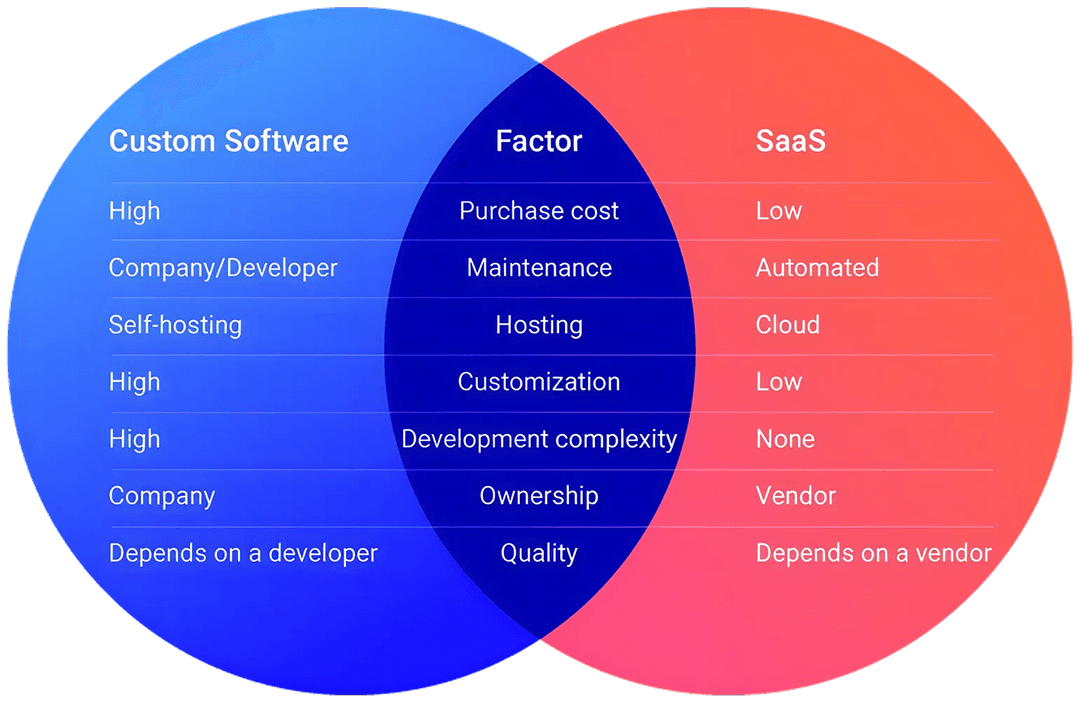
- Solusi yang Sepenuhnya Sesuai Dengan Kebutuhan
Custom software development dibuat khusus untuk menyesuaikan dengan workflow dan kebutuhan spesifik perusahaan.
Berbeda dari software siap pakai yang memiliki fitur standar untuk berbagai bisnis, salah satu benefit custom software memastikan semua fungsinya relevan dan efektif tanpa perlu penyesuaian tambahan. - Integrasi Lebih Mudah Dengan Sistem yang Sudah Ada
Benefit selanjutnya dari custom development adalah custom software dapat dikembangkan agar kompatibel dengan teknologi dan sistem yang sudah digunakan perusahaan.
Ini menghindari masalah kompatibilitas dan memastikan operasional berjalan lancar tanpa hambatan teknis akibat integrasi yang buruk. - Meningkatkan Produktivitas dan Efisiensi
Dengan fitur yang dirancang khusus, proses kerja menjadi lebih cepat dan efisien. Integrasi antar sistem lebih optimal, mengurangi pekerjaan manual, serta mempercepat akses dan pengolahan data, sehingga karyawan dapat fokus pada tugas yang lebih strategis, sehingga menjadi benefit tersendiri bagi perusahaan. - Kepemilikan Penuh dan Kontrol Total
Benefit selanjutnya dari custom development adalah Anda memiliki akses penuh ke source code (sumber kode), data, dan roadmap pengembangan tanpa tergantung pada penyedia software tertentu. - Keamanan Lebih Terjamin
Benefit yang tak kalah pentingnya adalah keamanan, karena dibuat khusus, sistem keamanan dapat disesuaikan dengan kebutuhan perusahaan, termasuk fitur enkripsi, autentikasi ganda, dan perlindungan data sensitif. Hal ini lebih aman dibanding software siap pakai yang sering menjadi target cyber crime karena digunakan secara luas.
Selain benefit dan keunggulan, berikut kekurangan dan tantangan dari custom software development adalah:
- Ketergantungan pada Vendor atau developer: Klien bisa menjadi tergantung pada vendor untuk pemeliharaan, update, atau troubleshooting. Resiko besar jika vendor tidak lagi tersedia atau memberikan dukungan.
- Resiko Kegagalan Proyek Lebih Tinggi: Tanpa manajemen proyek dan komunikasi yang baik maka bisa terjadi miskomunikasi antara pengguna bisnis dan tim teknis. Kemungkinan terjadi resiko produk akhir tidak sesuai harapan.
- Kompleksitas dalam Skalabilitas dan Integritas: Jika tidak dirancang dengan baik dari awal bisa berdampak dalam penambahan fitur atau integrasi baru bisa rumit dan mahal. Sementara skalabilitas bisa menjadi kendala teknis dan finansial di masa depan.
- Dukungan dan Pemeliharaan: Harus memiliki tim IT sendiri atau bergantung pada vendor untuk pemeliharaan.

Apa itu SaaS?
SaaS (Software as a Service) adalah software yang memungkinkan pengguna mengakses dan menggunakan aplikasi berbasis cloud melalui internet. Beberapa contoh adalah:
➢ CRM (Customer Relationship Management)
Membantu bisnis melacak interaksi pelanggan, mengelola prospek, menganalisis pipa penjualan dan menjalankan kampanye pemasaran yang efektif.
➢ SaaS Accounting
Menyediakan solusi perangkat lunak akuntansi berbasis cloud yang memungkinkan mengelola keuangan secara online.
➢ ERP (Enterprise Resource Planning)
Mengintegrasikan berbagai fungsi menjadi satu sistem lengkap untuk menyederhanakan proses di seluruh organisasi.
➢ HRIS (Human Resource Management System)
Untuk mengelola berbagai aspek sumber daya manusia dalam perusahaan.
Tidak seperti program traditional software lainnya, aplikasi SaaS tidak perlu diinstal di komputer Anda.
Harganya juga relatif lebih terjangkau karena Anda hanya membayar untuk figur yang Anda gunakan. Benefit terbesar dari aplikasi Saas adalah dapat diakses dari mana saja di dunia asalkan Anda memiliki koneksi internet. Layanan ini juga mempermudah perusahaan karena tidak membutuhkan maintenance.
SaaS cocok digunakan bagi startup atau perusahaan yang ingin membuat aplikasi tapi tidak mau direpotkan dengan berbagai server dan sejenisnya.
Beberapa kelebihan SaaS adalah:
- Biaya dan Investasi
Dari segi biaya, SaaS mempunyai benefit tersendiri, tergolong lebih hemat, dimana Anda tidak perlu melakukan maintenance server atau update karena dilakukan oleh penyedia layanan secara rutin.
Dengan menggunakan sistem subscribe, perusahaan hanya membayar sesuai jumlah pengguna dan fitur yang digunakan. Namun biaya ini bisa meningkat seiring pertumbuhan bisnis. - Kecepatan Implementasi
SaaS bisa langsung digunakan setelah berlangganan, sehingga cocok bagi bisnis yang membutuhkan solusi cepat tanpa perlu proses pengembangan. - Maintenance dan Update Otomatis
Semua pembaruan dan pemeliharaan dilakukan oleh penyedia Saas. - Akses Fleksibel
Bisa diakses dari mana saja selama ada koneksi internet.
Beberapa kekurangan yang perlu dipertimbangkan sebelum memilih SaaS adalah:
- Kustomisasi terbatas
SaaS umumnya didesain untuk kebutuhan umum. Akan sulit atau bahkan tidak mungkin untuk mengubah alur kerja atau fitur secara spesifik sesuai dengan kebutuhan bisnis yang unik. - Biaya Berkelanjutan
Meskipun biaya awal rendah, langganan bulanan/tahunan bisa menumpuk dalam jangka panjang. Jika kebutuhan bertambah (pengguna, fitur premium), biaya bisa meningkat signifikan. - Masalah Integrasi
SaaS mungkin tidak mendukung integrasi dengan sistem internal atau software lain yang digunakan perusahaan, sehingga bisa membutuhkan middleware atau solusi tambahan. - Potensi Downtime Tanpa Kendali
Jika terjadi gangguan server pada penyedia SaaS, Anda tidak bisa langsung mengatasinya. Hal ini dapat mempengaruhi operasional harian bisnis.
Menentukan apakah bisnis Anda sebaiknya menggunakan solusi kustom (custom software) atau SaaS (software as a Service) adalah keputusan strategis penting yang akan mempengaruhi efisiensi, biaya, dan skalabilitas jangka panjang.

Kapan Harus memilih Custom Software?
- Jika bisnis Anda memiliki kebutuhan unik yang tidak bisa dipenuhi oleh solusi Saas.
- Jika keamanan data menjadi prioritas utama.
- Jika Anda ingin solusi yang scalable tanpa batasan vendor.
- Jika anggaran memungkinkan investasi besar di awal untuk solusi jangka panjang.
Kapan Harus memilih SaaS?
- Jika Anda membutuhkan solusi cepat dengan biaya yang lebih rendah
- Jika bisnis Anda tidak memerlukan kustomisasi yang kompleks.
- Jika Anda ingin fokus pada bisnis tanpa harus mengelola sistem IT.
- Jika Anda menginginkan pemeliharaan dan update otomatis.
Memilih antara SaaS dan custom software bukan sekedar soal teknologi, tetapi keputusan strategis yang berdampak langsung pada efisiensi, pertumbuhan, dan daya saing bisnis Anda.
Tidak ada jawaban pasti apakah custom software atau SaaS yang lebih baik, karena semuanya tergantung pada kebutuhan bisnis Anda. Jika Anda menginginkan solusi yang benar-benar sesuai dengan proses bisnis dan memiliki anggaran yang cukup, custom software adalah pilihan terbaik.
Namun jika Anda menginginkan solusi cepat, hemat biaya, dan siap digunakan, maka SaaS bisa menjadi pilihan yang lebih praktis.
Custom software umumnya memang membutuhkan investasi besar karena proses pengembangannya melibatkan analisis bisnis yang mendalam, perancangan sistem yang disesuaikan, testing yang ketat, hingga integrasi yang optimal. Tetapi tentu saja sebanding dengan manfaat yang diberikan, seperti software yang dapat berkembang bersama bisnis, efisiensi yang lebih tinggi, serta kontrol penuh atas keamanan dan data.
Dengan custom software development, Anda tidak perlu lagi membayar biaya langganan berkepanjangan atau beradaptasi dengan batasan fitur dari SaaS.
Maka konsultasikan kebutuhan bisnis Anda dengan ahli teknologi atau software house yang terpercaya.
Pendekatan yang tepat akan mempercepat transformasi digital dan membantu Anda unggul dalam persaingan pasar yang terus berkembang.
Jika Anda masih bingung menentukan pilihan yang tepat, kami BTS.id dapat membantu Anda!
Kami menyediakan layanan custom software development yang disesuaikan dengan kebutuhan bisnis Anda.
BTS.id merupakan salah satu software house di Bandung, dan terbaik di Indonesia yang telah banyak dipilih oleh perusahaan-perusahaan besar Indonesia untuk membuat dan mengembangkan custom software sesuai dengan dengan kebutuhan mereka. Hal ini menjadikan software house developer BTS.id sebagai Technology Partner terbaik untuk membantu Anda menemukan solusi bisnis yang tepat untuk perusahan Anda.
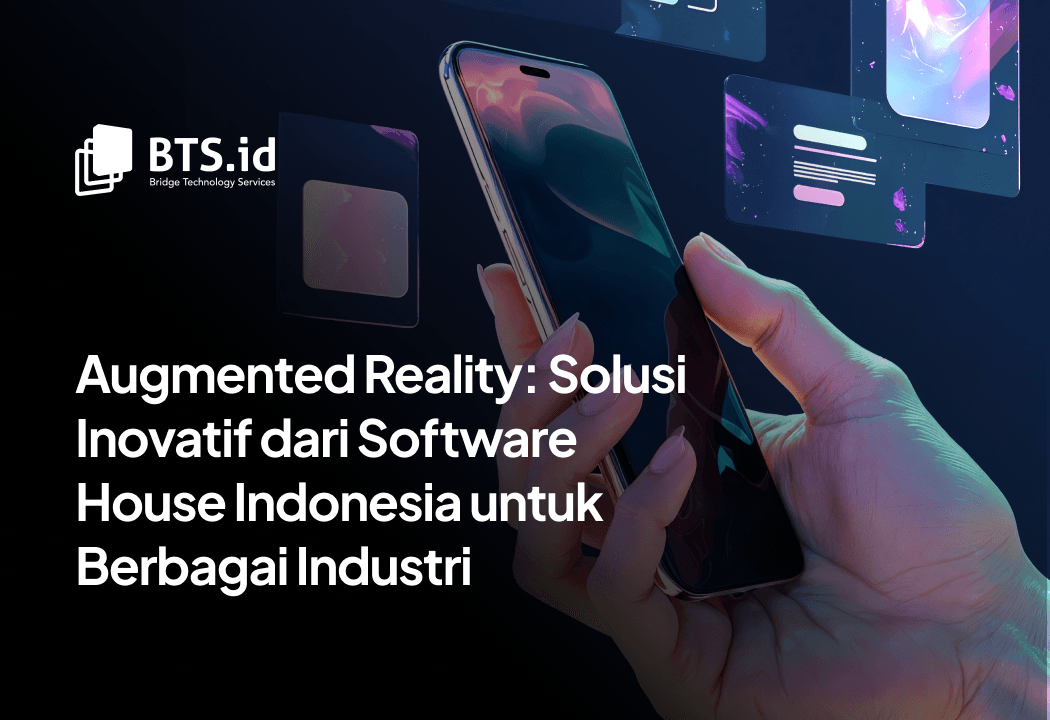
Apabila Anda saat ini berpikir untuk memanfaatkan teknologi ke dalam strategi bisnis atau layanan Anda, maka ada cukup banyak pilihan yang dapat Anda ambil untuk memenuhi kebutuhan tersebut.
Mengembangkan aplikasi atau software adalah kebutuhan penting bagi bisnis di era digital seperti sekarang ini. Software house Indonesia menjadi kunci penting dalam kesuksesan bisnis modern, dimana software house menciptakan solusi perangkat lunak inovatif, mengembangkab aplikasi yang relevan dengan kebutuhan pasar dan membantu bisnis dalam mengoptimalkan proses operasional mereka.
Melihat kebutuhan bisnis saat ini, software house menjadi pihak ketiga yang paling dibutuhkan, karena kemampuan mereka menyederhanakan aktivitas bisnis kepada klien, mulai dari pengenalan produk hingga transaksi.
Software house Indonesia menyediakan layanan software development baik aplikasi atau web, untuk kebutuhan berbagai kebutuhan bisnis, dimana software development merupakan suatu aspek penting dalam industri teknologi informasi (TI), yang merupakan jantung inovasi teknologi di berbagai sektor. Software development tidak hanya mencakup pembuatan aplikasi desktop saja, tetapi juga aplikasi mobile, situs web bahkan sistem operasi.
Saat ini kita sedang berada pada era informasi. Dalam tiga tahun terakhir telah banyak data dibuat sebelumnya. Bukan hanya pada jumlah data yang dibuat, tetapi juga bagaimana data tersebut meningkatkan kualitas pengambilan keputusan.
Disinilah koneksi cerdas menjadi relevan, informasi perlu dikumpulkan pada waktu yang tepat, pada titik yang tepat, dan ditampilkan dalam konteks yang tepat. Mesin dan manusia selalu terhubung pada era industri 4.0,sehingga proses industri menjadi meningkat.
Revolusi ini tidak hanya bergantung pada satu teknologi, tetapi beberapa teknologi. Salah satu teknologi ini adalah Augmented Reality (AR). Mari kita lihat bagaimana teknologi ini mempengaruhi revolusi industri 4.0.

Sudahkah Anda mendengar istilah teknologi bernama Augmented Reality?
Teknologi ini sebenarnya sudah sering ditemui dalam kehidupan sehari-hari dan sering digunakan dalam aplikasi yang terinstal pada smartphone.
Augmented Reality atau AR adalah teknologi yang memperoleh penggabungan secara real time terhadap digital konten yang dibuat oleh komputer dengan dunia nyata. Augmented Reality memperbolehkan pengguna melihat objek maya 2D atau 3D yang diproyeksikan terhadap dunia nyata.
Penerapan teknologi Augmented Reality dewasa ini kian pesat, sehingga semakin menguatkan posisinya dalam mendominasikan tren teknologi di tahun ini, dengan sederet nama besar seperti Microsoft, Amazon, Apple, Facebook, dan Google yang berkomitmen dalam penerapan dan pengembangannya.
Augmented Reality adalah versi dunia nyata yang dimodifikasi, yang dicapai melalui penggunaan teknologi. AR menggunakan aplikasi, konsol, layar, dan proyeksi untuk melapisi dan menggabungkan informasi digital dengan lingkungan dunia nyata.
Augmented Reality (AR) telah membuat perubahan visual pada lingkungan nyata atau menyempurnakan lingkungan tersebut dengan menambahkan informasi baru. AR dapat digunakan untuk berbagai keperluan termasuk permainan, visualisasi produk, iklan pemasaran, arsitektur dan desain rumah, pendidikan, kesehatan
serta manufaktur industri.
Teknologi telah membawa perubahan besar dalam dunia pendidikan. Dengan salah satu teknologi yang mulai mendapat perhatian dalam beberapa tahun terakhir adalah Augmented Reality (AR), AR menggabungkan elemen digital dengan dunia nyata, memungkinkan pengguna untuk melihat dan berinteraksi dengan objek
virtual dalam lingkungan fisik.
AR menghadirkan potensi besar dalam pendidikan, memungkinkan pembelajaran menjadi lebih interaktif, imersif, dan menarik bagi siswa. AR memiliki potensi besar dalam merevolusi cara belajar mengajar.
Berikut adalah beberapa manfaat utama yang dapat diperoleh dari penerapan AR dalam dunia pendidikan:
- Pembelajaran yang Lebih Interaktif dan Imersif
AR dengan kemampuannya membuat siswa dapat melihat dan berinteraksi dengan objek virtual, seperti model anatomi tubuh manusia, tata surya, dan bangunan bersejarah, dapat memutar dan memperbesar gambar untuk melihat lebih detail, dimana hal ini membuat proses belajar mengajar menjadi lebih menarik. Teknologi ini memberikan siswa gambaran yang lebih jelas dan mendalam dibandingkan hanya melalui gambar 2D di buku teks. Selain itu pelajaran seperti fisika dan kimia juga bisa lebih hidup dengan simulasi eksperimen langsung yang diproyeksikan ke dalam dunia nyata.
- Belajar Dimana Saja dan Kapan Saja
Dengan perangkat mobile yang mendukung AR, membuat AR tidak hanya terbatas pada ruang kelas saja. Siswa dapat belajar dimana saja dan kapan saja. Hal ini memberikan fleksibilitas bagi siswa untuk mengakses materi pelajaran di luar jam sekolah dan mengembangkan cara belajar yang lebih mandiri.
Contoh yang lainnya adalah aplikasi AR yang dirancang untuk pelajaran sejarah, membuat siswa dapat menjelajahi situs-situs bersejarah dan monumen penting tanpa harus melakukan perjalanan fisik.
Mereka dapat melihat rekonstruksi bangunan bersejarah, membaca informasi tambahan dan mempelajari detail arsitektur yang mungkin sulit diakses dalam kehidupan nyata.
- Meningkatkan Pemahaman Konsep yang Abstrak
Banyak mata pelajaran di sekolah yang mengajarkan konsep-konsep abstrak yang sulit dipahami oleh siswa, terutama jika hanya dijelaskan secara verbal atau melalui buku teks. Teknologi AR memungkinkan siswa untuk memvisualisasikan konsep-konsep ini dalam bentuk visual yang konkret dan mudah dipahami.
Contohnya dalam pelajaran matematika, AR dapat membantu memvisualisasikan bentuk geometri dalam 3D, memberikan siswa pengalaman visual yang membantu pemahaman mereka. Dalam pelajaran astronomi, AR dapat digunakan untuk menampilkan model tata surya yang interaktif, memungkinkan siswa untuk memahami hubungan antara planet, bulan, dan matahari dalam skala yang lebih realistis. Ini membantu siswa memvisualisasikan ukuran dan jarak benda langit dengan lebih baik dibandingkan hanya melihat diagram 2D.
- Mendukung Berbagai Gaya Belajar
Setiap siswa memiliki gaya belajar yang berbeda. Beberapa lebih suka belajar melalui teks, beberapa lebih suka visualisasi atau pembelajaran praktis. AR memberikan kesempatan untuk menggabungkan berbagai gaya belajar ini dalam satu platform. Siswa yang belajar dengan cara visual dapat memanfaatkan visualisasi 3D, sementara siswa yang suka eksplorasi mandiri dapat menggunakan AR untuk mengeksplorasi materi pelajaran secara lebih mendalam. Selain itu AR juga dapat disesuaikan dengan kecepatan belajar masing-masing siswa, memberikan mereka kendali lebih besar atas proses pembelajaran mereka.

Dengan dukungan teknologi dan investasi yang terus berkembang, AR berpotensi menjadi pilar penting dalam transformasi digital pada pelayanan kesehatan di Indonesia.
Penerapan AR dalam sektor kesehatan di Indonesia telah membawa perubahan positif, mulai dari peningkatan kualitas operasi bedah hingga edukasi kesehatan masyarakat, meningkatkan kualitas layanan medis, efisiensi operasional dan aksesibilitas pasien.
Berikut adalah beberapa penerapan dan dampaknya:
- Presisi Bedah yang Ditingkatkan
Teknologi AR memberikan visualisasi tiga dimensi secara real time terhadap anatomi pasien selama operasi. Ini memungkinkan para ahli bedah untuk melakukan prosedur dengan presisi dan akurasi yang lebih tinggi, dan dapat mengurangi resiko komplikasi. Informasi vital seperti CT scan atau gambar MRI dapat disematkan langsung ke tubuh pasien, memungkinkan pengambilan keputusan yang lebih baik selama operasi kompleks. Dengan AR, resiko dan tingkat komplikasi dapat diminimalkan karena para ahli bedah memiliki pemahaman mendalam terhadap struktur internal pasien.
- Pelatihan Medis dan Edukasi
AR telah mengubah paradigma pendidikan medis dengan menawarkan pengalaman pembelajaran yang mendalam. Mahasiswa dan profesional medis dapat menggunakan aplikasi AR untuk memvisualisasikan dan berlatih prosedur bedah, memeriksa model pasien virtual, serta mensimulasikan skenario medis. Ini tidak hanya meningkatkan keterampilan mereka tetapi juga memperdalam pemahaman terhadap konsep medis yang kompleks.
AR memungkinkan simulasi medis interaktif, memberikan pengalaman langsung kepada para pelajar.
Mereka dapat berlatih dalam lingkungan virtual yang mendekati situasi nyata, meningkatkan kesiapan mereka untuk menghadapi tantangan medis dunia nyata.
- Konsultasi Jarak Jauh dan Telemedia
Ar memungkinkan penyedia layanan kesehatan untuk melakukan konsultasi jarak jauh dengan perjanjian telemedia dengan pasien. Dengan menggunakan kacamata AR atau aplikasi khusus, dokter dapat memeriksa kondisi pasien, memberikan panduan dan membuat diagnosis yang terinformasi dari jarak jauh.
Dengan menggunakan AR dalam telemedis, pelayanan kesehatan dapat dioptimalkan, mengurangi beban sistem kesehatan dan memberikan akses yang lebih baik bagi pasien. Ini juga memungkinkan pertukaran informasi yang cepat antara penyedia layanan kesehatan dan pasien, mempercepat proses diagnosa dan perawatan.
- Rehabilitasi dan Terapi Fisik
Dalam ranah rehabilitasi dan terapi fisik, AR menawarkan terapi yang menarik dan disesuaikan.
Pasien dapat mengikuti rutinitas yang dipandu AR secara interaktif, meningkatkan motivasi dan kepatuhan terhadap rencana terapi. Dengan memberikan aspek interaktif dan terlibat dalam terapi, AR dapat meningkatkan hasil secara keseluruhan, sehingga pasien merasa lebih terlibat dalam proses pemulihan mereka, serta berkontribusi pada keberhasilan terapi dan pemeliharaan jangka panjang.
- Imaging Medis yang Akurat
AR meningkatkan imaging medis dengan menyematkan gambar diagnostik seperti sinar-X atau ultrasound langsung ke tubuh pasien selama pemeriksaan.
Overlay waktu nyata ini memberikan pandangan yang lebih komprehensif terhadap kondisi pasien, membantu mendeteksi anomali dan merencanakan perawatan dengan lebih efektif.
Augmented Reality (AR) juga tengah naik daun pada sektor ritel. Dengan melapisi informasi digital ke dunia fisik, AR menghadirkan proses belanja yang unik dan mendalam, yang mengubah lanskap ritel. Dari munculnya E-commerce hingga maraknya belanja melalui perangkat seluler, perusahaan telah berevolusi untuk memenuhi perubahan perilaku dan ekspektasi konsumen.
Teknologi AR memiliki potensi besar untuk meningkatkan pengalaman berbelanja dengan menyediakan perpaduan yang mulus antara dunia fisik dan digital. Teknologi ini memungkinkan konsumen untuk mencoba produk secara virtual, memvisualisasikan perabotan di rumah mereka sebelum membeli, atau bahkan berjalan-jalan di toko virtual hanya dari ruang keluarga mereka.
Manfaat AR untuk pengalaman pelanggan pada sektor ritel:
- Virtual Try-On
Pelanggan bisa “mencoba” produk secara virtual tanpa menyentuhnya, contohnya pada fashion, pelanggan dapat mencoba pakaian, sepatu, atau kacamata menggunakan kamera ponsel. Bahkan pelanggan juga bisa melihat hasil riasan seperti lipstick atau foundation di wajah secara real-time.
Beberapa brand besar seperti Sephora dan L’Oreal telah menggunakan AR untuk uji coba riasan wajah secara virtual.
- Visualisasi Produk di Rumah
Pelanggan dapat melihat bagaimana produk (furniture, TV, atau dekorasi) akan terlihat di ruangan mereka sendiri. IKEA menggunakan AR pada aplikasi IKEA Place untuk menempatkan furniture secara virtual di rumah pelanggan.
- Label Interaktif dan Informasi Tambahan
Dengan memindai produk, pelanggan bisa mengakses detail produk secara mendalam, video demonstrasi atau instruksi pengguna, bahkan ulasan pelanggan secara langsung. Hal ini membantu pelanggan untuk membuat keputusan lebih cepat.
- Navigasi di Dalam Toko (Indoor AR Navigation)
AR dapat memandu pelanggan menuju produk yang mereka cari di toko besar seperti supermarket dan pusat perbelanjaan.

Augmented Reality bukan hanya teknologi menarik, tetapi juga merupakan alat strategis untuk menciptakan pengalaman belanja yang cerdas, personal, dan menyenangkan. Pada era digital-first, AR bisa menjadi pembeda utama bagi brand ritel yang ingin unggul di pasar kompetitif.
Augmented Reality (AR) juga menawarkan banyak aplikasi inovatif dalam sektor pariwisata dan perhotelan, meningkatkan pengalaman wisatawan dan mempermudah berbagai proses. Contohnya tur virtual kamar hotel, check-in tanpa antrian, dan informasi interaktif tentang destinasi.
Teknologi AR hanyalah salah satu cara inovasi membawa pemasaran perjalanan dan pariwisata ke tingkat yang lebih tinggi. Teknologi ini tidak hanya mengubah pengalaman pelanggan, tetapi juga merevolusi sektor ini secara keseluruhan, dengan potensi penuh yang masih menunggu untuk dikembangkan.
Augmented Reality (AR) menawarkan manfaat yang signifikan bagi sektor pariwisata, terutama dengan smartphone di tangan kita. Beberapa diantaranya adalah:
- AR Mudah Diakses Melalui Perangkat Seluler
AR dapat dengan mudah diakses melalui perangkat seluler, serta berfungsi sebagai alat pemasaran yang ampuh untuk hotel, menyediakan konten interaktif yang membantu mempengaruhi keputusan wisatawan dan membangun kepercayaan dengan klien potensial. Para tamu dapat menjelajahi kamar dan fasilitas secara virtual bahkan sebelum melangkah masuk, cara yang sangat baik untuk mengkonversi pengunjung baru dan mengubah mereka menjadi pelanggan setia.
- AR Memungkinkan Calon Pelanggan Terlibat Langsung
AR memungkinkan calon pelanggan untuk terlibat dengan penawaran Anda dengan cara yang lebih menarik. AR bahkan mendorong pemesanan menit terakhir dengan memberikan informasi instan, seperti petunjuk arah hotel Anda.
Pada dasarnya, AR bertindak sebagai pemandu setiap saat di saku mereka, menawarkan fitur-fitur, dan membuat tempat-tempat wisata menjadi lebih menarik.
- Transportasi
Menjelajahi kota menjadi lebih menarik dengan AR. Aplikasi ini dapat menginformasikan tempat-tempat penting di sepanjang jalan dan menawarkan petunjuk arah dalam berbagai bahasa. Jika wisatawan tidak yakin dengan jalan yang akan mereka lalui, panah interaktif dapat memandu mereka, dan mereka dapat melihat pratinjau tujuan mereka sebelum tiba.
- Menjadikan Perjalanan Dapat Diakses oleh Semua Orang
AR dapat membuat perjalanan lebih mudah diakses. Bagi individu dengan keterbatasan mobilitas atau fisik, versi virtual destinasi wisata memungkinkan mereka menjelajahi tempat-tempat wisata hanya dari rumah mereka.
Implementasi Augmented Reality (AR) oleh software house Indonesia menghadapi berbagai tantangan, baik dari sisi teknis, bisnis, hingga ekosistem. Meskipun potensinya besar untuk sektor seperti edukasi, kesehatan, ritel, dan pariwisata, adopsinya masih belum masif.
Berikut adalah beberapa tantangan-tantangan utama sebagai berikut:
- Keterbatasan Infrastruktur dan Perangkat
Tidak semua perangkat pengguna mendukung (support) AR, spesifikasi kamera, sensor, atau prosesor terkadang tidak memadai. Selain itu jaringan internet di beberapa daerah terkadang belum stabil, dimana AR membutuhkan bandwidth tinggi dan latency rendah (terutama AR real-time). Hal ini berdampak tidak optimalnya pengalaman pengguna, sehingga membuat klien enggan berinvestasi lebih jauh.
- Kurangnya Talenta Spesialis AR
AR memerlukan keahlian khusus seperti pemrograman grafis 3D, pengolahan citra, pemodelan ruang, dan AI. BAnyak software house Indonesia belum memiliki tim khusus AR dan harus belajar dari awal, bahkan bergantung pada plugin siap pakai (seperti Vuforia, ARKit, ARCore). Hal ini dapat berdampak pada waktu dan biaya pengembangan meningkat, sehingga sulit bersaing dengan pemain luar negeri.
- Biaya Pengembangan yang Tinggi
Pembuatan konten AR (3D object, animasi, integrasi sensor) memerlukan waktu dan SDM lebih banyak dibandingkan aplikasi biasa. Klien lokal terutama UMKM dan instansi pemerintah, seringkali memiliki anggaran terbatas. Hal ini berdampak AR hanya diminati oleh perusahaan besar, dan akan membatasi skala pasar software house.
- Kurangnya Edukasi Pasar
Banyak calon pengguna belum memahami nilai tambah AR. AR hanya dianggap ‘gimmick’ atau terlalu futuristik, bukan solusi yang praktis. Maka dampaknya akan sulit menjual atau meyakinkan klien untuk berinvestasi, terutama di sektor tradisional.
- Masalah Standar dan Kompatibilitas
Tidak ada standar baku untuk integrasi Ar lintas platform (Android, iOS, web). Beberapa solusi AR belu terintegrasi baik dengan sistem lain seperti ERP, e-commerce, atau payment gateway. Hal ini akan berdampak pada implementasi teknis jadi lebih kompleks, memerlukan penyesuaian tambahan.
Augmented Reality (AR) memiliki potensi besar untuk mendorong transformasi digital di berbagai sektor industri di Indonesia. Dengan kemampuannya menggabungkan dunia fisik dan digital secara interaktif, AR mampu meningkatkan efisiensi, produktivitas, serta pengalaman pengguna baik dalam skala konsumen maupun industri.
Meskipun software house Indonesia mulai merambah teknologi AR, mereka harus menghadapi berbagai kendala, mulai dari keterbatasan teknis, pasar yang belum matang, hingga tantangan edukasi dan regulasi.
Dibutuhkan kolaborasi antara software house Indonesia, pemerintah dan sektor industri agar adopsi AR bisa tumbuh lebih cepat dan luas.
Dengan pendekatan yang tepat, Augmented Reality (AR) dapat menjadi motor penggerak industri 4.0 yang membawa Indonesia menuju masa depan yang lebih cerdas, efisien, dan kompetitif secara global.
Ingin memiliki teknologi AR yang dirancang khusus sesuai kebutuhan bisnis Anda?
BTS.id menyediakan layanan konsultasi untuk kebutuhan teknologi perusahaan Anda. BTS.id berisi tim dengan kombinasi skill teknis, komunikasi, dan kemampuan analisis bisnis yang mumpuni. BTS.id akan membantu Anda mengambil keputusan untuk proyek Anda kedepannya.
BTS.id merupakan salah satu software house di Bandung, dan terbaik di Indonesia yang telah banyak dipilih oleh perusahaan-perusahaan besar Indonesia untuk membuat dan mengembangkan custom software sesuai dengan dengan kebutuhan mereka. Hal ini menjadikan software house developer BTS.id sebagai Technology Partner terbaik untuk membantu Anda menemukan solusi bisnis yang tepat untuk perusahan Anda.
Hubungi tim BTS.id sekarang juga untuk dapat memiliki teknologi Augmented Reality (AR) yang sesuai kebutuhan bisnis Anda.

Melihat kebutuhan bisnis saat ini, software house menjadi pihak ketiga yang paling dicari karena mereka mampu menyederhanakan aktivitas bisnis kepada klien, mulai dari pengenalan produk hingga transaksi.
Software house Indonesia menjadi kunci penting dalam kesuksesan bisnis modern, dimana software house menciptakan solusi perangkat lunak inovatif, mengembangkan aplikasi yang relevan dengan kebutuhan pasar, dan membantu bisnis dalam mengoptimalkan proses operasional mereka.
Peran utama software house Indonesia adalah mengembangkan perangkat lunak (software development) sesuai dengan kebutuhan dan spesifikasi klien. Software house Indonesia merancang aplikasi dari awal atau memodifikasi software yang sudah ada untuk memenuhi kebutuhan bisnis klien.
Software development adalah proses kreatif dan juga teknis yang digunakan untuk merancang, membuat, menguji serta memelihara program pada komputer atau aplikasi yang memenuhi kebutuhan pengguna. Proses ini melibatkan banyak langkah dan metode untuk memastikan software yang dihasilkan tidak hanya fungsional, tetapi juga andal, aman dan mudah digunakan.
Software development merupakan salah satu aspek penting dalam industri teknologi informasi (TI), yang merupakan jantung dari inovasi teknologi di berbagai sektor.
Software development secara sederhana dapat dijelaskan sebagai proses pembuatan software dari awal hingga selesai, dimana dalam prosesnya melibatkan perancangan, pengkodean, pengujian dan pemeliharaan aplikasi atau program yang diharapkan mampu menyelesaikan masalah atau memenuhi kebutuhan pengguna.
Software development tidak hanya mencakup pembuatan aplikasi desktop saja, tetapi juga mencakup aplikasi mobile, situs web bahkan sistem operasi.
Software development biasanya bekerja sama dalam tim dan menggunakan berbagai alat serta bahasa pemrograman untuk menyelesaikan proyek. Dengan adanya software development, hampir setiap aspek kehidupan manusia saat ini dapat terhubung melalui teknologi, baik itu di berbagai bidang bisnis.
Dalam software development adalah hal umum jika proses pengembangan dilakukan dengan metodologi yang terstruktur. Ada beberapa metodologi populer yang digunakan dalam software development.
Saat memulai proyek software development pemilihan metodologi proyek menjadi krusial, yang sering kali menimbulkan perdebatan, karena melibatkan dua pendekatan populer yang telah dikenal luas, Sebagaimana sulitnya membuat dan memprioritaskan product backlog menentukan metode software development yang akan digunakan juga bukanlah hal yang mudah.
Setiap metodologi berusaha untuk memastikan bahwa software yang dikembangkan sesuai dengan requirement yang dibutuhkan. Setiap metode yang ada memiliki value proposition sendiri dan kelebihan serta kekurangannya masing-masing.
Berikut ini adalah penjelasan mengenai dua metodologi software development yang paling populer saat ini.
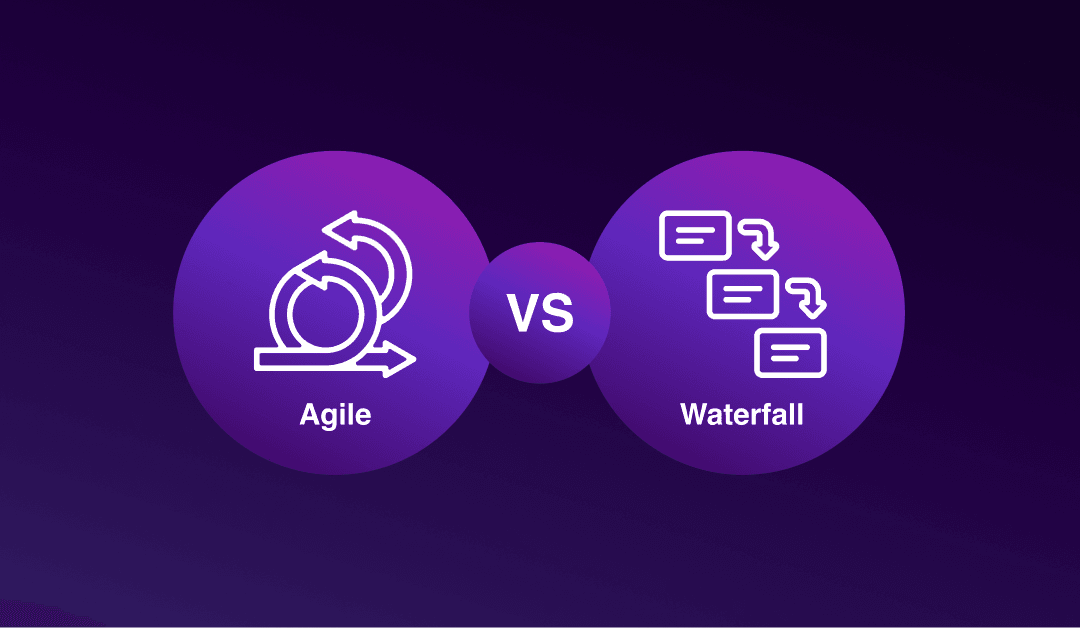
- Agile Methodology
Agile methodology merupakan pendekatan yang lebih fleksibel. Pengembangan dilakukan dalam iterasi yang lebih kecil, biasanya disebut sprint yang memungkinkan perubahan atau penyesuaian sepanjang proses pengembangan. Agile cocok untuk proyek yang dinamis dan membutuhkan adaptasi cepat terhadap feedback dari pengguna.
Agile methodology berfokus pada perencanaan yang adaptif, evolutionary dan improvement yang berkelanjutan melalui respon yang fleksibel terhadap perubahan. Tujuan akhir dari metode ini adalah release yang lebih cepat dengan resiko bugs/issue yang lebih sedikit.
- Waterfall Methodology
Waterfall methodology adalah pendekatan tradisional dalam software development, dimana setiap tahapan pengembangan diselesaikan secara berurutan. Setelah satu fase selesai, tim akan pindah ke fase berikutnya tanpa kembali ke fase sebelumnya. Model ini cocok untuk proyek yang sudah memiliki kebutuhan yang jelas dan stabil.
Waterfall methodology merupakan metode software development yang paling tua yang secara substansi mensimplifikasi proses software engineering ke dalam diagram proses linear dimana penyelesaian dari task sebelumnya sangat penting bagi developer untuk bisa mengerjakan pekerjaan yang lain.
Karakteristik dan Proses Kerja Agile Methodology
Melansir Wrike, Agile methodology adalah sebuah metode manajemen proyek yang berjalan dengan cara membaginya menjadi beberapa fase. Fase-fase tersebut diantaranya adalah penyusunan konsep, inisiasi dan analisis, desain konstruksi dan coding, percobaan dan implementasi.
Pada agile methodology, pekerjaan yang telah terbagi pada masing-masing pemangku jobdesk akan berjalan secara bersamaan, mulai dari proses perencanaan, eksekusi hingga evaluasi.
Sederhananya agile methodology adalah pendekatan pengembangan yang fleksibel dan berulang, fokus pada penyampaian nilai yang cepat dan berkelanjutan. Proses kerjanya melibatkan iterasi pendek (sprint), perencanaan yang berkelanjutan, dan pengujian yang terintegrasi. Karakteristiknya meliputi kemampuan beradaptasi terhadap perubahan, kolaborasi tim dan penyampaian produk yang berfungsi secara bertahap.
Secara detail berikut karakteristik Agile Methodology:
- Iterasi dan Incremental
Pengembangan dilakukan secara bertahap dalam siklus pendek (biasanya 1-4 minggu, disebut sprint) dimana setiap iterasi menghasilkan versi produk yang bisa digunakan. - Responsif Terhadap Perubahan
Perubahan kebutuhan pengguna bisa diakomodasi kapan saja, bahkan di akhir pengembangan. - Fokus pada Pengguna
Kebutuhan dan umpan balik pengguna menjadi acuan utama dalam menentukan prioritas pengembangan. - Pengiriman Produk Lebih Cepat
Agile methodology bertujuan menghasilkan nilai bisnis sejak dini dengan mengirimkan bagian produk lebih awal. - Transparansi Proses
Proses dan progres selalu terlihat dan bisa dipantau oleh semua pihak.

Proses Kerja Agile Methodology adalah sebagai berikut:
- Product Backlog
Daftar semua fitur dan kebutuhan produk dan diprioritaskan oleh product owner. - Sprint Planning
Tim memilih item dari backlog yang akan dikerjakan dalam sprint, kemudian menentukan tujuan sprint (sprint goal). - Sprint (Iterasi)
Masa pengerjaan selama 1-4 minggu, setiap hari dilakukan Daily Stand Up Meeting (rapat harian, max 15 menit) - Increment
Hasil kerja sprint adalah produk yang dapat digunakan (potentially shippable product) - Sprint Review
Tim mendemonstrasikan hasil sprint kepada stakeholder untuk mendapatkan masukan. - Sprint Retrospective
Evaluasi internal tim, apakah berjalan dengan baik, apa yang bisa ditingkatkan di sprint berikutnya.
Berikut adalah beberapa metode Agile yang paling umum digunakan:
- Scrum Methodology: Metode agile ini memiliki fokus tentang software development yang kompleks.
- Scaled Agile Framework (SAFe): Metode ini hadir khusus untuk perusahaan besar yang ingin memakai metode agile.
- Lean Software Development (LSD): Metode agile yang bertujuan untuk mengambangkan software memakai jumlah SDM yang minim.
- Kanban: Merupakan metode agile dengan proses dilakukan secara visual sehingga aktivitas flow kerja lebih terpantau. Visual ini disebut Kanban Board berupa papan virtual yang memiliki tiga tahap To Do, In Progress, dan Done.
- Extreme Programming (XP): Merupakan metode agile yang memiliki fokus utama pada sisi teknis software development yang menekankan pada praktik-praktik teknis kolaborasi yang intensif dalam tim sehingga dapat menghasilkan software berkualitas tinggi.
- Crystal Methodology: Metode yang lebih fokus pada kondisi tim yang bekerja dibandingkan pad tool atau proses. Fokus pada komunikasi tim, interaksi, dokumentasi, dan feedback. Dengan demikian, hasil pengembangan software yang dibuat lebih maksimal.
- Dynamic System Development Method (DSDM): Metode yang fokus pada keterlibatan seluruh anggota tim secara berkesinambungan untuk menghadirkan software yang bermanfaat secara nyata bagi dunia bisnis.
- Feature Driven Development (FDD): Metode yang berfokus untuk menyelesaikan satu fitur. Mirip dengan Scrum, tetapi setiap iterasinya hanya berdurasi 2-20 hari. Dengan demikian, fitur FDD skalanya lebih spesifik untuk bisa selesai tepat waktu.
Beberapa hal yang perlu Anda perhatikan adalah kelebihan dan tantangan masing-masing metode. Berikut ini adalah kelebihan dan tantangan Agile Methodology:
Kelebihan Agile Methodology:
- Fokus pada pengerjaan software, sehingga tidak perlu terlalu khawatir pada dokumentasi, setiap prosesnya bersifat inkremental sehingga meminimalisir resiko selama proses pengembangan.
- Berfokus pada keterlibatan klien pada setiap fase. Pendekatan yang adaptif sehingga dapat merespon perubahan requirement dengan sangat cepat dan efisien.
- Komunikasi yang berkelanjutan meningkatkan transparansi antar klien dan tim development.
- Feedback yang berkesinambungan akan meminimalisir resiko dengan signifikan
- Kualitas pengembangan dijamin terawat.
Implementasi Agile methodology tidak hanya melibatkan penerapan proses dan praktik baru, tetapi juga mendorong perubahan budaya dalam bisnis. Termasuk mengubah pola pikir, mendorong kolaborasi, dan merangkul pendekatan yang lebih adaptif dan responsif untuk menghasilkan produk.
Akan ada hambatan dan tantangan ketika perubahan yang diperkenalkan dalam sistem dan dapat menjadi kacau jika tidak ditangani. Implementasi Agile melibatkan transisi dari pendekatan manajemen dan pengembangan proyek yang tradisional dan seringkali kaku (seperti waterfall) ke metode yang lebih iteratif dan bertahap.
Tantangan Agile Methodology:
- Kurangnya Pemahaman Agile
Banyak tim atau perusahaan yang mengira Agile hanya berarti ‘cepat’ atau ‘tanpa dokumentasi’, sehingga tidak memahami prinsip dasar Agile seperti kolaborasi, iterasi, dan adaptasi. - Kurangnya Komitmen Stakeholder
Stakeholder seringkali tidak terlibat secara aktif dalam sprint review atau memberikan feedback, padahal keterlibatan mereka sangat penting untuk iterasi yang tepat sasaran. - Perubahan Budaya
Agile menuntut perubahan pola pikir dari top-down menjadi kolaboratif dan desentralisasi. Jika manajemen atau tim belum siap beradaptasi, resistensi akan muncul. - Tim Tidak Cross-Functional
Agile bekerja paling baik dengan tim lintas fungsi (developer, tester, UI/UX, dll). Jika tim terlalu terkotak atau tergantung pada departemen lain, kecepatan bisa terganggu. - Overload Meeting
Sprint planning, daily stand up, review, dan retrospective bisa terasa membebani jika tidak dijalankan secara efisien. - Perencanaan yang Lemah
Beberapa tim terlalu fokus pada fleksibilitas hingga mengabaikan perencanaan awal. Agile tetap butuh roadmap dan estimasi, meski bersifat adaptif. - Kurangnya Dokumentasi
Agile tidak anti-dokumentasi, tapi banyak tim terlalu longgar sehingga kehilangan jejak keputusan teknis atau kebutuhan bisnis.

Karakteristik dan Proses Kerja Waterfall Methodology
Waterfall methodology merupakan salah satu metode software development klasik yang sering digunakan dalam manajemen proyek teknologi informasi.
Dinamakan “Waterfall” (air terjun) karena pendekatannya yang terstruktur dan linier, dimana proses pengembangan dimulai dari fase awal bergerak ke fase berikutnya secara berurutan. Model ini dikembangkan oleh Dr. Winston W. Royce pada tahun 1970 dna sejak saat itu telah menjadi salah satu metode paling dikenal dalam software development.
Waterfall methodology memiliki karakteristik sebagai berikut:
- Urutan Fase yang Jelas: Proses dimulai dari fase kebutuhan, diikuti oleh desain, implementasi, pengujian, dan pemeliharaan.
- Dokumentasi Detail: Setiap fase memerlukan dokumentasi yang lengkap sebelum melanjutkan ke fase berikutnya.
- Pengendalian Perubahan yang Ketat: Perubahan dalam persyaratan atau desain dianggap sulit dan mahal untuk diterapkan setelah fase tertentu selesai.
Proses kerja Waterfall Methodology adalah sebagai berikut:
- Kebutuhan (Requirement Analysis): Mengumpulkan dan mendokumentasikan semua kebutuhan sistem yang diperlukan
- Desain (System Design): Merancang arsitektur, dan spesifikasi sistem berdasarkan kebutuhan yang telah dikumpulkan.
- Implementasi: Mengembangkan kode software sesuai dengan desain yang telah ditentukan.
- Pengujian (Testing): Menguji sistem untuk memastikan bahwa semua fungsionalitas telah bekerja sesuai spesifikasi.
- Maintenance: Menangani perbaikan bug dan perubahan setelah sistem diterapkan.
Berikut adalah kelebihan dan kekurangan Waterfall Methodology:
Kelebihan Waterfall Methodology:
- Struktur yang Jelas dan Teratur. Memudahkan perencanaan dan manajemen proyek dengan jadwal yang dapat diprediksi.
- Dokumentasi Lengkap: Menyediakan dokumentasi yang lengkap dan detail pada setiap fase.
- Kontrol Terhadap Perubahan: Mengurangi resiko perubahan yang tidak terkendali dengan pengendalian yang ketat.
- Kesesuaian untuk Proyek Kecil hingga Menengah: Efisien untuk proyek yang tidak rumit dengan ruang lingkup yang jelas dan perubahan minimal.
- Mengurangi Resiko Scope Creep: Karena semua kebutuhan harus didefinisikan di awal, kemungkinan perubahan mendadak atau perluasan ruang lingkup bisa diminimalisir.
Kekurangan Waterfall Methodology:
- Kurang Fleksibel: Sulit menangani perubahan kebutuhan setelah fase desain dimulai. Tidak cocok untuk proyek kompleks dan dinamis, Jika teknologi atau kebutuhan bisnis cepat berubah, metode ini menjadi kaku dan lambat beradaptasi.
- Resiko Keterlambatan: Jika terjadi kesalahan atau perubahan pada fase awal, maka bisa menyebabkan keterlambatan ke fase berikutnya.
- Pengujian Terlambat: Pengujian dilakukan setelah implementasi, yang mungkin menyebabkan masalah yang tidak terdeteksi lebih awal.
- Tidak Ada Produk yang Bisa Digunakan di Tengah Proyek: Tidak seperti Agile, Waterfall tidak menghasilkan produk bertahap (incremental), dan baru ada hasil nyata di akhir pengembangan.
- Dokumentasi Berat: Menekankan dokumentasi di setiap tahap, yang bisa menyita waktu dan menurunkan kecepatan pengembangan.
- Tidak bisa membuat software yang lain sampai seluruh proses waterfall selesai.
Waterfall methodology terbatas pada proyek yang bersifat stabil, terdefinisi dengan baik, dan tidak banyak berubah. Untuk proyek yang adaptif, interaktif, dan inovatif, pendekatan Agile lebih efektif.
Waterfall methodology cocok digunakan jika:
- Kebutuhan proyek sudah jelas dan tetap, spesifikasi tidak akan berubah sepanjang proyek.
- Proyek yang sifatnya sederhana, atau pendek seperti migrasi data, sistem internal sederhana, aplikasi dengan scope terbatas.
- Lingkungan terkontrol dan formal.
- Pengguna tidak perlu banyak terlibat selama proyek, klien hanya ingin hasil akhir tanpa terlalu banyak revisi atau interaksi di tengah proses berjalan,
- Waktu dan anggaran sudah tetap. Tidak ada ruang untuk improvisasi, cocok untuk proyek dengan kontrak tetap (fixed scope dan fixed price).
Agile Methodology cocok digunakan jika:
- Kebutuhan masih bisa berubah.
- Ingin mendapatkan feedback cepat dan berkala. Cocok jika klien ingin melihat proses terus menerus dan bisa ikut memberikan masukan setiap iterasi.
- Proyek kompleks dan tidak sepenuhnya terdefinisi di awal.
- Kolaborasi aktif antar tim dan stakeholder. Tim bekerja erat dengan klien dan pengguna selama proses pengembangan.
- Perlu adaptasi cepat terhadap perubahan pasar, misalnya aplikasi yang harus mengikuti tren user behavior atau teknologi.

Memilih metodologi software development yang tepat adalah faktor kunci keberhasilan proyek, terutama di lingkungan software house yang dinamis seperti di Indonesia. Tidak ada satu pendekatan yang cocok untuk
semua proyek.
Memilih metode software development membutuhkan waktu untuk riset dan perencanaan jangka panjang.
Mengetahui kekuatan dan kekurangan tim akan membantu dalam menentukan metode apa yang paling cocok untuk digunakan.
Pilihlah metode yang cocok untuk cara kerja dan kemampuan tim Anda, kemudian mempersempit opsi yang ada dengan membandingkan model mana yang paling baik untuk diberikan kepada klien dalam proyek yang ingin dikerjakan.
Apabila Anda masih belum yakin sepenuhnya mengenai metode mana yang cocok untuk Anda pakai dalam proyek yang sedang Anda kerjakan, BTS.id hadir sebagai solusi.
BTS.id menyediakan layanan konsuktasi untuk kebutuhan proyek perusahaan Anda. BTS.id berisi tim dengan kombinasi skill teknis, komunikasi, dan kemampuan analisis bisnis yang mumpuni. BTS.id akan membantu Anda mengambil keputusan untuk proyek Anda kedepannya.
BTS.id merupakan salah satu software house di Bandung, dan terbaik di Indonesia yang telah banyak dipilih oleh perusahaan-perusahaan besar Indonesia untuk membuat dan mengembangkan custom software sesuai dengan dengan kebutuhan mereka. Hal ini menjadikan software house developer BTS.id sebagai Technology Partner terbaik untuk membantu Anda menemukan solusi bisnis yang tepat untuk perusahan Anda.
Tertarik untuk konsultasi mengenai perbedaan Agile dan Waterfall untuk proyek Anda? Hubungi tim BTS.id sekarang juga !

Dunia pengembangan aplikasi terus berkembang seiring kemajuan teknologi. Kini, berbagai pendekatan telah muncul, dari pengembangan Low-Code, yang memungkinkan pengembangan aplikasi tanpa memerlukan keterampilan coding mendalam, hingga pengembangan Full-Code yang memberikan fleksibilitas tertinggi bagi developer berpengalaman.
Bagi startup dan perusahaan besar, memilih pendekatan yang tepat untuk pengembangan aplikasi sangat penting. Dua pilihan yang sering dihadapi adalah low code dan full code.
Aplikasi semakin populer karena kegunaan dan aksesibilitasnya. Namun dengan begitu banyak software development di luar sana, mungkin akan sulit untuk menentukan jenis pengembangan mana yang terbaik untuk perusahaan bisnis Anda. Ketika membangun platform Internet of Things (IoT), banyak yang merasa bingung memilih antara menggunakan low code platform atau full code development. Kedua pendekatan ini memiliki kelebihan dan kekurangannya masing-masing.
Dalam dunia pengembangan, pemilihan antara low code dan full code dapat menentukan seberapa efisien dan cepat aplikasi yang Anda buat.
Low code platform menawarkan kemudahan dalam pengembangan dengan lebih sedikit menulis kode.
Sementara full code development memberikan kebebasan dan kontrol penuh atas setiap aspek pengembangan aplikasi. Kedua pendekatan ini dapat digunakan untuk membangun platform, tetapi pilihan terbaik sangat bergantung pada kebutuhan proyek yang sedang dijalankan.
Low code vs full code adalah perbandingan antara dua pendekatan dalam software development, yang berbeda dari segi tingkat penulisan kode dan fleksibilitasnya.

Apa itu Low Code dan Apa itu Full Code?
Low code platform adalah pendekatan software yang memungkinkan pengguna untuk membangun aplikasi dengan sedikit menulis kode atau bahkan tanpa menulis kode sama sekali.
Dengan menggunakan low code platform, Anda bisa mempercepat pembuatan aplikasi tanpa harus menguasai keterampilan pemrograman mendalam.
Platform ini menawarkan antarmuka grafis yang memungkinkan anda drag-and-drop komponen aplikasi seperti database dan API, sehingga sangat cocok untuk prototyping cepat.
Sebaliknya, full code development adalah metode software development yang melibatkan penulisan seluruh kode aplikasi dari awal hingga selesai. Pendekatan ini memberikan fleksibilitas dan kontrol penuh kepada developer, memungkinkan mereka untuk menyesuaikan setiap detail dari aplikasi yang mereka buat, termasuk dalam membangun platform yang sangat kompleks dan spesifik. Jika Anda membutuhkan fungsionalitas yang sangat terperinci, full code adalah pilihan yang tepat.
Berikut ini adalah perbandingan kelebihan low code platform dan full code development:
- Kecepatan Pengembangan
Banyak orang memilih low code platform, karena proses software development bisa dilakukan lebih cepat dengan menggunakan antarmuka visual, Anda bisa menghindari banyak tahapan pemrograman manual yang memakan banyak waktu. Di sisi lain, full code development memerlukan waktu lebih lama karena menulis dan menguji setiap bagian kode.
- Kemudahan Penggunaan
Low code platform memungkinkan pengembangan tanpa memerlukan pengetahuan mendalam tentang kode. Hal ini sangat cocok untuk tim yang ingin fokus pada ide kreatif tanpa harus berurusan dengan kompleksitas teknis.
Sebaliknya full code development memerlukan pengalaman dan keterampilan pengkodean yang kuat untuk bisa mengelola dan mengembangkan secara efektif.
- Fleksibilitas dan Kustomisasi
Full code development memberikan kontrol penuh atas setiap aspek aplikasi, sehingga Anda bisa mengubah dan menyesuaikan platform sesuai dengan kebutuhan spesifik proyek Anda.
Low code platform lebih terbatas dalam hal ini karena fitur yang tersedia sering kali sudah ditentukan oleh platform yang digunakan.
- Kebutuhan Skill atau Kemampuan Teknis
Low code platform bisa digunakan oleh non programmer atau developer junior, serta banyak dokumentasi dan template yang dapat mempermudah adopsi,
Full code development membutuhkan developer yang berpengalaman dalam bahasa pemrograman dan cocok untuk tim teknis profesional.
- Biaya
Low code platform membutuhkan biaya awal lebih murah, karena proses pengembangan lebih cepat dan bisa dilakukan oleh tim kecil, dan cocok untuk perusahaan kecil hingga menengah atau tim dengan anggaran terbatas.
Full code development perlu biaya awal lebih besar, karena membutuhkan tim developer, infrastruktur, dan waktu pengembangan lebih lama namun hemat dalam jangka panjang jika sistem terus dikembangkan dan dimiliki sendiri (tanpa biaya lisensi)
- Integrasi Sistem
Dalam low code platform banyak platform yang mendukung integrasi out of the box (API, database populer, service cloud), namun bisa terbatas jika butuh integrasi dengan sistem legacy atau protokol khusus.
Untuk full code development integrasi tak terbatas, bisa dihubungkan ke sistem internal, database custom, atau protokol unik, namun membutuhkan waktu dan effort lebih tapi fleksibel.

Keunggulan dan kekurangan Low code dan Full code dalam software development:
- Low Code
- Keunggulan:
- Salah satu keunggulan utama low code platform adalah efisiensi dalam proses pengembangan karena memungkinkan developer membangun aplikasi dengan cepat tanpa harus menulis kode dari awal.
Platform ini juga menawarkan titik tinggi, sehingga dapat dikustomisasi sesuai dengan kebutuhan bisnis yang kompleks. - Low Code mendukung integrasi dengan sistem yang lebih besar, memungkinkan perusahaan untuk menghubungkan aplikasi mereka dengan berbagai layanan pihak ketiga.
- Kemampuan dalam mengakomodasi baik pengembang profesional maupun tim bisnis yang ingin terlibat dalam proses pengembangan.
- Biaya awal lebih rendah, tidak membutuhkan banyak developer berpengalaman. Platform biasanya sudah menyediakan hosting, database, autentifikasi, dan lain-lain sehingga efisien untuk bisnis kecil menengah atau perusahaan dengan sumber daya terbatas.
- Salah satu keunggulan utama low code platform adalah efisiensi dalam proses pengembangan karena memungkinkan developer membangun aplikasi dengan cepat tanpa harus menulis kode dari awal.
- Kekurangan:
- Meskipun menawarkan permulaan yang tinggi, low code tetap memerlukan keterampilan teknis dalam implementasinya sehingga tidak sepenuhnya dapat digunakan oleh non-developer.
- Ketergantungan pada platform low code juga bisa menjadi kendala karena perusahaan harus menyesuaikan diri dengan batasan yang diberikan oleh penyedia layanan.
- Dalam proyek yang sangat kompleks, penggunaan low code platform masih memerlukan intervensi developer untuk memastikan aplikasi berjalan sesuai dengan kebutuhan bisnis.
- Faktor lainnya adalah potensi masalah keamanan dan skalabilitas jika tidak dirancang dengan benar sejak awal.
- Kustomisasi terbatas, tampilan UI, flow data atau struktur database hanya bisa diubah dalam batas tertentu. Jika butuh integrasi spesifik atau algoritma unik, bisa sangat sulit (bahkan tidak bisa dilakukan sama sekali).
- Keunggulan:
- Full Code
- Keunggulan
- Full code development memiliki keunggulan fleksibilitas tanpa batas, bisa membangun fitur unik dan logika bisnis kompleks sesuai kebutuhan spesifik.
- Full code tidak terbatas pada kemampuan atau batasan platform pihak ketiga, dan sangat cocok untuk proyek yang memerlukan algoritma khusus, sistem real-time, AI, atau skala besar,
- Full code memiliki kontrol menyeluruh atas semua aspek aplikasi: arsitektur, performa, UI/UX, keamanan, dan deployment, serta dapat menyesuaikan struktur data, routing, autentikasi, enkripsi dan lainnya sesuai standar perusahaan.
- Developer bisa memilih sendiri stack teknologi, framework, dan layanan yang digunakan.
- Kekurangan
- Full code development memerlukan waktu pengembangan lebih lama. Semua komponen dibangun dari nol atau library open-source, mulai dari setup awal, database, logika bisnis, hingga tampilan semuanya perlu dikerjakan manual, sehingga tidak cocok untuk yang butuh hasil cepat atau prototipe instan.
- Full code membutuhkan tim dengan skill yang tinggi. Full code harus memiliki developer berpengalaman dalam berbagai bidang seperti backend, frontend, database, keamanan, deployment dan lainnya.
Kesalahan kecil dalam penulisan kode bisa menyebabkan bug atau celah keamanan. - Full code perlu biaya lebih untuk merekrut developer, arsitek sistem, UI/UX designer, dan tim DevOps, juga perlu investasi untuk infrastruktur seperti server, CI/CD tools, dan lainnya.
- Full code cocok untuk investasi jangka panjang, tapi kurang efisien jika hanya untuk solusi cepat atau satu kali pakai.
- Keunggulan
Software house Indonesia berperan penting dalam membantu bisnis memilih pendekatan software development yang tepat, baik full code development maupun low code platform. Software house Indonesia dapat memberikan saran, konsultasi dan pengalaman yang dibutuhkan untuk menentukan solusi yang paling sesuai dengan kebutuhan bisnis dan tujuan yang ingin dicapai. Software house Indonesia memiliki posisi strategis dalam membantu perusahaan untuk memilih metode pengembangan aplikasi yang efisien, sesuai anggaran, dan selaras dengan tujuan bisnis.
Berikut beberapa peranan software house Indonesia dalam memilih pendekatan yang tepat untuk bisnis Anda:
- Analisa Kebutuhan Bisnis Secara Mendalam
Sebelum menentukan pendekatan pengembangan, software house akan menggali tujuan bisnis dan masalah utama yang ingin diselesaikan dengan teknologi. Menilai kompleksitas fitur, target pengguna, dan kebutuhan jangka panjang. Menganalisa anggaran, waktu yang tersedia, dan tingkat urgensi. Dengan ini software house bisa merekomendasikan apakah low code platform sudah cukup atau perlu full code development untuk memenuhi kebutuhan.
- Menyesuaikan Solusi dengan Sumber Daya Perusahaan
Software house Indonesia akan mempertimbangkan:- Apakah klien memiliki tim IT internal atau bergantung penuh pada pihak eksternal.
- Seberapa besar kemampuan dan pengembangan lanjutan dari klien.
- Apakah bisnis klien akan terus berkembang (butuh sistem yang bisa di-scale atau dimodifikasi bebas)
Dengan demikian, software house bisa menyarankan pendekatan: - Low Code: jika klien ingin solusi cepat, murah dan mudah dipelihara.
- Full Code: jika klien butuh fleksibilitas tinggi dan sistem kompleks.
- Menyediakan Tim Teknis yang Sesuai dengan Pendekatan Terpilih
Jika klien memilih low code, software house Indonesia akan menyiapkan tim yang menguasai platform low code tertentu (misal: OutSystem, Microsoft Power Platform).
Jika klien memilih full code, software house akan menyiapkan developer yang ahli dalam teknologi yang relevan (misal: React, Node js, Laravel, Java, Python, dsb).
Hal ini penting agar pengembangan berjalan efisien dan hasilnya optimal.
- Memberikan Layanan Scalable dan Jangka Panjang
Software house Indonesia bisa menyusun roadmap teknologi sebagai berikut:- Mulai dari prototipe sederhana (low code) kemudian migrasi ke sistem penuh (full code) jika sistem perlu dikembangkan lebih jauh.
- Langsung membangun sistem kustom dengan full code jika dari awal sudah disiapkan untuk pertumbuhan besar.
Pendekatan bertahap ini membantu bisnis menghemat biaya tanpa kehilangan arah pengembangan.
Kapan harus memilih Low code atau full code untuk proyek Anda?
Berdasarkan kondisi nyata, kebutuhan bisnis dan tujuan jangka panjang dapat dijelaskan sebagai berikut:
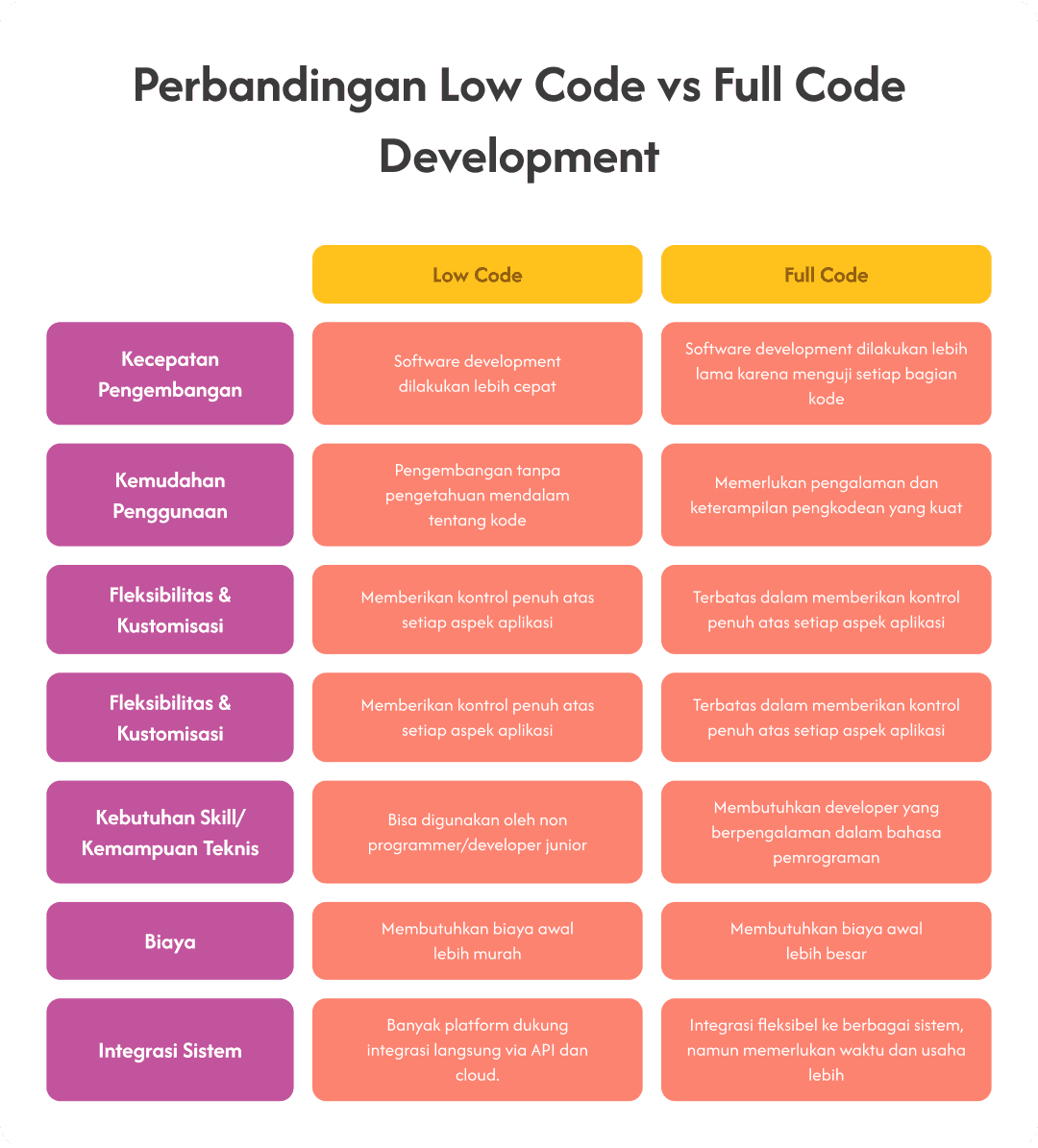
Pilih Low Code jika:
- Proyek butuh cepat jadi.
Cocok untuk prototipe, MVP atau validasi ide bisnis, dan bisa membangun aplikasi dalam hitungan hari atau minggu. - Anggaran terbatas, minim biaya pengembangan awal dan tidak perlu membentuk tim developer besar.
- Kebutuhan aplikasi sederhana, misal sistem approval internal, dashboard laporan, form digitalisasi dan lainnya, serta tidak membutuhkan logika bisnis yang rumit atau integral kompleks.
- Tidak ada tim developer internal, sehingga cocok untuk perusahaan yang tidak punya tim IT. Aplikasi tetap bisa dibangun dan dipelihara dengan bantuan vendor atau citizen developer.
- Skala penggunaan terbatas, aplikasi digunakan oleh tim kecil atau organisasi internal, sehingga tidak butuh skalabilitas tinggi atau performa maksimum.
- Butuh kolaborasi cepat antar tim IT dan non-IT, analisa bisnis, product owner atau manajer bisa ikutmerancang aplikasi langsung di platform visual.
Pilih Full Code jika:
- Aplikasi butuh kustomisasi tinggi dan fitur unik. Misal: e-commerce besar, sistem pembayaran, platform AI/ML, game atau aplikasi dengan aturan bisnis kompleks.
- Skalabilitas dan performa sangat penting, harus mampu melayani ribuan hingga jutaan pengguna dengan stabil.
- Standar keamanan tinggi, biasanya diperlukan untuk industri seperti fintech, healthtech, e-gov atau sistem data sensitif, memerlukan kontrol penuh atas enkripsi, autentikasi dan audit.
- Integrasi dengan sistem atau infrastruktur khusus, misal integrasi dengan ERP, SAP, IoT, mesin industri atau API kompleks, yang mana tidak bisa dilakukan secara fleksibel di low code platform.
- Perusahaan punya rencana teknologi jangka panjang, dimana sistem akan terus dikembangkan, diperluas an disesuaikan. Perlu kendali penuh atas arsitektur dan kode sumber (source code)
- Tim teknologi internal sudah siap, memiliki developer sendiri dan DevOps sendiri, sehingga mampu melakukan pengembangan, testing dan pemeliharaan berkelanjutan.
Dalam dunia bisnis yang semakin terdigitalisasi, keputusan dalam memilih pendekatan pengembangan aplikasi low code atau full code tidaklah bisa dilakukan sembarangan tanpa pertimbangan.
Setiap pilihan memiliki konsekuensi terhadap biaya, waktu, skalabilitas, keamanan dan masa depan sistem.
Disinilah peran software house Indonesia menjadi sangat penting. Software house Indonesia tidak hanya membangun aplikasi, tetapi juga bertindak sebagai konsultan teknologi strategis yang memahami kebutuhan spesifik industri lokal, keterbatasan sumber daya bisnis, dan arah pertumbuhan perusahaan.
Keputusan teknologi yang tepat akan menghemat waktu, biaya dan energi Anda. Keputusan tepat dimulai dari bekerja sama dengan partner teknologi yang tepat. Jika Anda masih ragu dalam memilih low code platform atau full code development, melibatkan software house Indonesia yang berpengalaman adalah langkah yang bijak dan cerdas untuk meminimalkan resiko dan memaksimalkan hasil.
BTS.id merupakan salah satu software house di bandung, dan terbaik di Indonesia yang telah banyak dipilih oleh perusahaan-perusahaan besar di Indonesia untuk membuat dan mengembangkan custom software sesuai dengan kebutuhan mereka. Hal ini menjadikan software developer BTS.id sebagai Technology Partner terbaik untuk membantu Anda menemukan solusi bisnis yang tepat untuk perusahaan Anda.
BTS.id menerapkan agile methodology dalam setiap layanan software development-nya untuk memastikan solusi yang adaptif, efisien, dan selaras dengan kebutuhan bisnis Anda. Pendekatan yang kolaboratif dan iteratif dari BTS.id dapat membantu perusahaan menghadirkan produk digital yang inovatif dan juga berkualitas tinggi.
Untuk mendapatkan solusi digital terbaik hanya BTS.id software company dan IT consultant terbaik untuk bisnis Anda.

Ketika Anda membahas tentang sistem development atau aplikasi dalam sebuah proyek, maka hal ini bukan merupakan perkara mudah. Dibutuhkan tim management yang super tangguh untuk mencapai tujuan proyek yang berhasil.
Banyak metode-metode yang tersedia dalam proses pengerjaan suatu proyek, dan tentu bukanlah tugas yang sederhana. Salah satu metode proyek yang sedang ramai menjadi perbincangan pada software house Indonesia adalah metode Agile.
Pernah mendengar istilah Agile sebelumnya?
Istilah ini mungkin terdengar teknis, tetapi sebenarnya konsep agile Agile cukup sederhana, dan kini banyak digunakan oleh software house Indonesia dalam software development mereka.
Agile methodology adalah metode software development yang kerap digunakan oleh software house Indonesia, yang dilakukan secara bertahap dan berulang. Dalam prosesnya, tim developer bekerja secara kolaboratif dan terorganisir untuk menemukan solusi terbaik.
Metode ini dinilai lebih cepat dan fleksibel dibandingkan cara konvensional, karena mampu menyesuaikan diri dengan perubahan yang terjadi selama proses pengembangan.
Agile methodology sendiri merupakan model software development dalam jangka pendek. Metode ini membutuhkan adaptasi yang cepat dalam mengatasi setiap perubahan yang dimungkinkan terjadi.
Nilai terpenting dari Agile methodology ini adalah memungkinkan sebuah tim dalam mengambil keputusan secara cepat, kualitas dan prediksi yang baik, serta memiliki potensi baik dalam menangani setiap perubahan yang ada.
Fleksibilitas adalah kunci dalam Agile methodology. Tim developer dituntut untuk responsif terhadap revisi atau ide dari klien. Dengan begitu, proses software development dapat menjadi lebih dinamis dan sesuai dengan kebutuhan pengguna.
Bagi developer, Agile membantu produktivitas karena setiap anggota tim dapat bekerja secara mandiri tanpa harus menunggu bagian lain selesai. Selain itu, metode ini juga membantu vendor menghemat biaya dan lebih fokus pada fitur yang dibutuhkan pengguna.
Agile bertujuan menghasilkan produk berkualitas tinggi dan bermanfaat bagi pengguna. Prosesnya dilakukan secara bertahap dan berulang, serta bisa disesuaikan dengan waktu dan biaya yang ada tanpa mengorbankan kualitas akhir.
Agile methodology bekerja dengan pendekatan iteratif dan inkremental, dimana proyek dibagi menjadi beberapa siklus kerja pendek yang disebut sprint. Setiap sprint berfokus pada penyelesaian sejumlah tugas prioritas yang harus menghasilkan deliverable yang siap diuji dan jika memungkinkan dapat dirilis.
Pendekatan ini memungkinkan tim untuk secara cepat beradaptasi terhadap perubahan, mengoptimalkan kinerja dan menjaga kualitas produk.
Agile methodology didasarkan pada prinsip-prinsip yang menekankan fleksibilitas, kolaborasi, dan perbaikan berkelanjutan dalam proses pengembangan. Agile berakar dari Manifesto Agile yang diperkenalkan pada tahun 2001 oleh sekelompok praktisi perangkat lunak.
Prinsip-prinsip dasar in tidak hanya menjadi landasan untuk pengambilan keputusan manajemen proyek tetapi juga mendorong tim untuk merespon perubahan dengan cepat dan terus meningkatkan kualitas produk.
Manifesto ini memuat 4 nilai utama dan 12 prinsip dasar.
4 Nilai utama Agile:
- Individu dan interaksi lebih penting daripada proses dan alat.
- Perangkat lunak yang berfungsi lebih penting daripada dokumentasi lengkap.
- Kolaborasi dengan pelanggan lebih penting daripada negosiasi kontrak.
- Merespons perubahan lebih penting daripada mengikuti rencana.
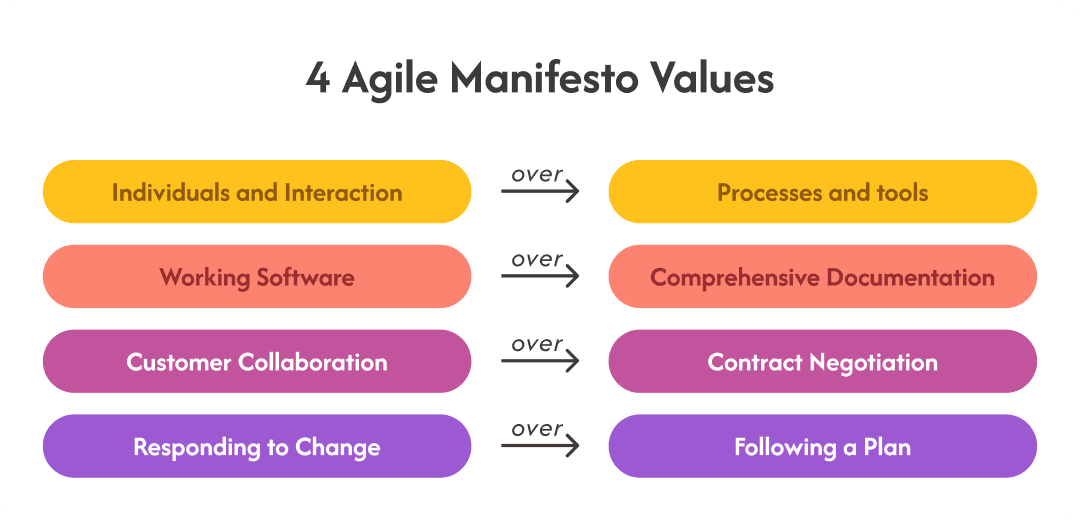
12 Prinsip dasar Agile:
- Kepuasan pelanggan melalui pengiriman software secara awal dan berkelanjutan.
- Menyambut perubahan kebutuhan, bahkan di tahap akhir pengembangan.
- Pengiriman software yang berfungsi secara berkala (mingguan atau bulanan)
- Kolaborasi yang erat antara bisnis dan tim developer sepanjang proyek.
- Membangun proyek di sekitar individu yang termotivasi dan memberi mereka dukungan yang dibutuhkan.
- Komunikasi langsung (face to face) adalah metode paling efektif dan efisien untuk menyampaikan informasi.
- Software yang berfungsi adalah ukuran utama dari kemajuan.
- Pengembangan berkelanjutan dengan kecepatan tetap oleh semua pihak yang terlibat.
- Perhatian terus menerus terhadap keunggulan teknis dan desain yang baik.
- Kesederhanaan adalah kunci dalam menghilangkan pekerjaan yang tidak perlu.
- Tim yang mampu mengorganisir diri sendiri menghasilkan arsitektur dan desain terbaik.
- Refleksi secara rutin, untuk meningkatkan efektivitas dan menyesuaikan perilaku tim.
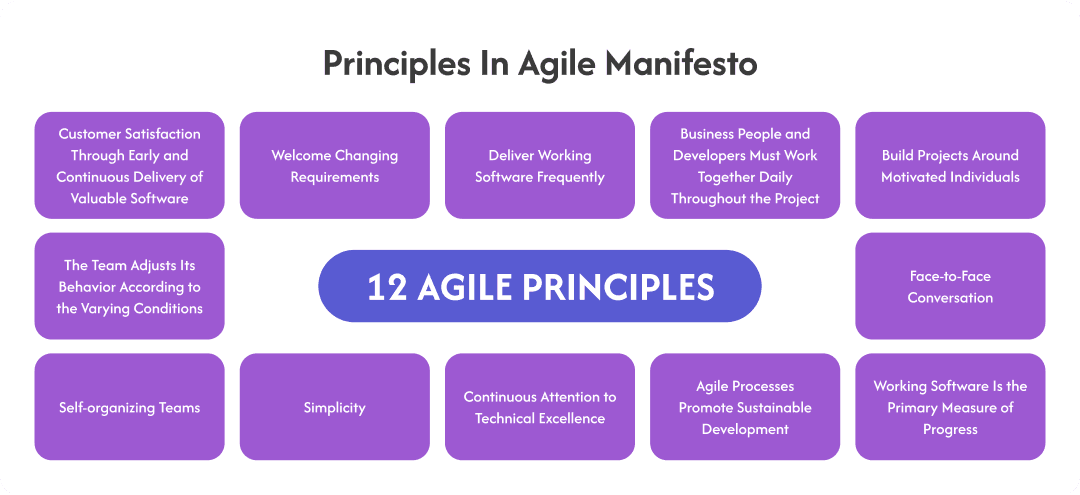
Salah satu prinsip utama dalam Agile methodology adalah Iterative Development (pengembangan iteratif), adalah suatu prinsip di mana produk dikembangkan melalui serangkaian siklus pendek atau iterasi, bukan sebagai satu proyek besar yang dikembangkan sekaligus dari awal hingga akhir.
Proyek dibagi menjadi bagian-bagian kecil yang disebut iterasi (biasanya berlangsung selama 1-4 minggu), dimana setiap iterasi mencakup fase perencanaan, desain, pengembangan, pengujian dan evaluasi.
Di akhir setiap iterasi dihasilkan versi produk yang bisa diuji atau bahkan digunakan ) working increment)
Tahap-tahapan Metode Agile
Tahap-tahapan Agile methodology diantaranya adalah:
- Product Backlog Creation
Daftar semua kebutuhan atau fitur yang ingin dikembangkan, disusun oleh product owner. Backlog ini bersifat dinamis, dan dapat berubah sesuai prioritas bisnis atau masukan pengguna.
- Sprint Planning
Tim memilih item dari product backlog untuk dikerjakan dalam satu iterasi (disebut sprint). Sprint biasanya berdurasi 1-4 minggu. Tim menetapkan tujuan sprint dan merencanakan pekerjaan secara rinci.
- Sprint Execution (Development)
Tim mulai mengembangkan fitur yang telah direncanakan. Aktivitas ini melibatkan desain, pengkodean, pengujian, dan dokumentasi. Prosesnya bersifat kolaboratif dan adaptif.
- Daily Stand Up (Daily Scrum)
Pertemuan singkat (sekitar 15 menit) setiap hari untuk menyampaikan progres, mengidentifikasi hambatan dan menyelaraskan pekerjaan tim.
- Sprint Review
Di setiap akhir sprint, tim melakukan demo hasil kerja kepada stakeholder untuk menerima umpan balik. Tujuannya adalah mengevaluasi apakah produk memenuhi kebutuhan pengguna.
- Sprint Retrospective
Refleksi internal tim untuk membahas apa yang berhasil, apa yang bisa ditingkatkan, dan bagaimana cara bekerja lebih baik di sprint berikutnya.
- Increment Delivery
Hasil dari sprint adalah increment, bagian dari produk yang berfungsi penuh. Idealnya setiap increment dapat dirilis ke pengguna jika diperlukan.
Dalam beberapa tahun terakhir pada software house Indonesia, fenomena Agile telah menjamur di berbagai perusahaan, baik itu swasta maupun perusahaan milik negara. Tren ini tidak hanya terlihat pada perusahaan teknologi besar, tetapi juga pada berbagai industri lainnya.
Apa yang memicu banyak perusahaan untuk beralih ke pendekatan Agile?
- Peningkatan adopsi teknologi selama pancemi COVID-19 telah mempercepat kebutuhan perusahaan untuk menjadi lebih adaptif dan responsif. Dalam situasi yang penuh ketidakpastian, seperti pandemi,
banyak aktivitas yang sebelumnya dilakukan secara fisik beralih ke platform digital. Contohnya berbelanja secara online, sekolah dan perkuliahan secara online, hingga konsultasi kesehatan secara online. Perusahaan bisnis telah menunjukkan kemampuan mereka untuk beradaptasi dengan cepat, memberikan layanan yang tetap optimal meskipun dalam kondisi yang berubah-ubah.
- Kehidupan modern yang dipenuhi dengan ketidakpastian menuntut perusahaan untuk lebih fleksibel.
Perusahaan yang tidak mampu beradaptasi dengan cepat terhadap perubahan lingkungan beresiko tertinggal.
Oleh karena itu Agile menjadi kunci untuk menghadapi tantangan ini, Agile transformation memungkinkan perusahaan untuk merespons perubahan dengan lebih cepat, meningkatkan efisiensi, dan tetap kompetitif di pasar.

Dalam dunia bisnis yang dinamis, kecepatan dan fleksibilitas menjadi kunci utama dalam pengembangan produk. Agile methodology hadir sebagai solusi yang memungkinkan tim untuk bekerja lebih adaptif, responsif, dan kolaboratif.
Dengan pendekatan berbasis iterasi dan umpan balik berkelanjutan, Agile membantu tim menghindari resiko besar dan memastikan produk yang dikembangkan selalu sesuai dengan kebutuhan pasar.
Berikut beberapa kelebihan utama dari metode Agile:
- Responsif Terhadap Perubahan
Agile dirancang untuk fleksibel, perubahan kebutuhan atau permintaan pelanggan dapat dimasukkan bahkan di tahap akhir proyek
- Umpan Balik Cepat
Melalui iterasi pendek dan demo rutin, tim mendapatkan masukan langsung dari pengguna atau stakeholder, sehingga dapat segera melakukan perbaikan.
- Kualitas Produk Lebih Tinggi
Pengujian dilakukan secara berkala selama proses, bukan hanya di akhir. Hal ini membantu mendeteksi dan memperbaiki bug lebih awal.
- Peningkatan Kolaborasi dan Komunikasi
Agile mendorong interaksi aktif antara tim developer , manajemen, dan pengguna, Daily stand up dan sprint review meningkatkan keterlibatan dan transparansi.
- Time to Market Lebih Cepat
Fitur yang sudah siap bisa dirilis lebih awal ke pasar, tanpa harus menunggu keseluruhan proyek selesai.
- Manajemen Resiko Lebih Cepat
Masalah dapat diidentifikasi dan diatasi lebih awal berkat pengembangan iteratif dan retrospektif rutin.
- Meningkatkan Kepuasan Klien
Karena klien dilibatkan secara aktif dan fitur dikirim secara bertahap, hasil akhirnya lebih sesuai kebutuhan dan harapan pengguna.
Meskipun Agile menawarkan banyak kelebihan dan manfaat, penerapannya tidak selalu mudah. Berikut beberapa tantangan utama yang sering dihadapi oleh tim dan perusahaan saat mengadopsi Agile methodology:
- Kesulitan dalam Perubahan Budaya dan Mindset
Agile menuntut perubahan cara berpikir, dari hirarki dan perencanaan jangka panjang menjadi kolaborasi, fleksibilitas dan iterasi cepat. Tidak semua perusahaan siap dengan perubahan ini.
- Keterlibatan Klien yang Konsisten
Agile sangat bergantung pada masukan berkelanjutan dari klien. Jika klien tidak tersedia atau tidak aktif berpartisipasi, hasilnya bisa tidak sesuai harapan.
- Kurangnya Dokumentasi yang Terstruktur
Karena Agile menekankan software yang berfungsi daripada dokumentasi, bisa jadi kurangnya dokumentasi menyulitkan tim baru atau saat maintenance di masa depan.
- Mengatasi Perubahan Scope yang Terlalu Sering
Salah satu prinsip Agile adalah merespons perubahan secara cepat, tetapi jika perubahan terjadi terlalu sering, tim bisa mengalami scope creep. Hal ini dapat menyebabkan kebingungan, kehilangan fokus, dan bahkan burnout karena tidak ada kejelasan dalam prioritas pekerjaan.
- Menjaga Konsistensi dalam Estimasi Waktu dan Biaya
Dalam Agile, estimasi waktu dan biaya sering kali dilakukan berdasarkan sprint dan iterasi pendek.
Namun variabilitas dalam kompleksitas tugas dan perubahan kebutuhan bisnis dapat membuat keterlambatan atau melebihi anggaran yang telah direncanakan.
Fleksibilitas dalam software development mengacu pada kemampuan proses pengembangan untuk beradaptasi terhadap perubahan kebutuhan, teknologi dan kondisi pasar tanpa mengorbankan kualitas produk atau efisiensi tim. Metodologi seperti Agile, Scrum, dan DevOps secara eksplisit dirancang untuk memaksimalkan fleksibilitas dalam pengembangan. Fleksibilitas adalah kunci untuk inovasi, terutama dalam proyek digital yang cepat berubah.
Berikut ini beberapa keuntungan yang bisa Anda dapatkan ketika menggunakan Agile methodology untuk software development:
- Fleksibilitas dalam Mengakomodasi Perubahan
Salah satu keunggulan utama Agile adalah kemampuannya untuk beradaptasi dengan perubahan kebutuhan selama proyek berlangsung. Perubahan yang muncul di tengah proses seringkali memakan biaya tinggi atau bahkan tidak memungkinkan pada pendekatan tradisionall. Namun Agile dirancang untuk memprioritaskan fleksibilitas, sehingga setiap perubahan dapat diintegrasikan dalam sprint berikutnya tanpa mengganggu alur kerja.
- Peningkatan Kualitas Software
Agile methodology mengutamakan pengujian yang dilakukan secara berkala sepanjang siklus pengembangan. Pengujian dalam setiap sprint dilakukan pada unit-unit kecil untuk memastikan bahwa kualitas tetap terjaga. Pendekatan ini meminimalkan resiko munculnya bug yang sulit diperbaiki di kemudian hari.
- Resiko Proyek Lebih Rendah
Masalah terdeteksi lebih awal, sehingga mengurangi resiko proyek gagal atau tidak sesuai ekspektasi.
Pembagian proyek menjadi sprint-sprint kecil dalam Agile dapat membantu mengidentifikasi resiko sejak tahap awal. Jika ada kendala yang muncul dalam satu sprint, masalah tersebut dapat segera diatasi tanpa mempengaruhi keseluruhan proyek.
- Transparansi Progress
Klien selalu tahu sejauh mana perkembangan proyek melalui sprint review atau demo rutin. Keterlibatan klien dalam proses pengembangan juga menciptakan hubungan yang lebih baik antara perusahaan dan klien. Pelanggan yang merasa didengar dan dihargai akan meningkatkan tingkat kepuasan dan loyalitas mereka.
- Kolaborasi yang Lebih Baik Antar Tim
Agile mempromosikan komunikasi yang aktif melalui daily stand up meetings. Pada sesi ini, setiap anggota tim berbagi progress, hambatan dan rencana kerja mereka, sehingga semua pihak tetap berada di jalur yang sama. Kolaborasi ini memastikan bahwa tidak ada informasi penting yang terlewatkan selama pengambangan.

Agile methodology memberikan fleksibilitas tinggi dan mendorong kolaborasi yang lebih baik dalam manajemen proyek, memungkinkan tim untuk beradaptasi dengan perubahan secara cepat.
Agile methodology menawarkan fleksibilitas, efisiensi dan kemampuan beradaptasi yang tidak dimiliki metode tradisional. Pendekatan ini memungkinkan perusahaan untuk dapat menghadapi tantangan pasar dengan lebih percaya diri dan menghasilkan software berkualitas tinggi dalam waktu singkat. Agile memungkinkan kolaborasi lebih erat antara tim developer dan pemangku kepentingan, sehingga kebutuhan bisnis dapat terpenuhi secara optimal.
Meskipun tantangan seperti perubahan scope yang sering serta kendala-kendala lainnya dapat muncul, pendekatan yang tepat serta budaya kerja yang mendukung akan membantu mengoptimalkan penerapan Agile untuk meningkatkan efisiensi dan inovasi dalam pengembangan produk maupun layanan.
BTS.id merupakan salah satu software house di bandung, dan terbaik di Indonesia yang telah banyak dipilih oleh perusahaan-perusahaan besar di Indonesia untuk membuat dan mengembangkan custom software sesuai dengan kebutuhan mereka. Hal ini menjadikan software developer BTS.id sebagai Technology Partner terbaik untuk membantu Anda menemukan solusi bisnis yang tepat untuk perusahaan Anda.
BTS.id menerapkan agile methodology dalam setiap layanan software development-nya untuk memastikan solusi yang adaptif, efisien, dan selaras dengan kebutuhan bisnis Anda. Pendekatan yang kolaboratif dan iteratif dari BTS.id dapat membantu perusahaan menghadirkan produk digital yang inovatif dan juga berkualitas tinggi.
Untuk mendapatkan solusi digital terbaik hanya BTS.id software company dan IT consultant terbaik untuk bisnis Anda.

Dalam dunia digital yang terus berkembang, software house menjadi salah satu komponen penting dalam pengembangan teknologi dan aplikasi. Seperti yang telah kita bahas sebelumnya, software house adalah perusahaan yang bergerak di bidang pengembangan perangkat lunak atau software development.

Fokus utama software house adalah menciptakan solusi digital seperti aplikasi, sistem informasi, hingga teknologi berbasis Artificial Intelligence (AI) sesuai kebutuhan klien atau pasar. Berbeda dengan perusahaan teknologi besar yang mungkin memiliki berbagai lini produk, software house lebih fokus pada custom software development.
Software house memainkan peran penting sebagai mitra dalam software development yang disesuaikan dengan kebutuhan bisnis atau organisasi klien, Mereka merancang, mengembangkan, dan memelihara aplikasi atau sistem, serta dapat memberikan konsultasi IT.
Beberapa peran utama software house adalah:
- Konsultasi dan Validasi Ide
Membantu klien untuk mengevaluasi apakah penerapan artificial intelligence (AI) tepat untuk permasalahan bisnis tertentu.
- Visibilitas Real Time
Sistem ERP menyajikan data dalam waktu nyata, memberikan visibilitas yang lebih baik ke dalam berbagai aspek bisnis. Hal ini memungkinkan manajemen untuk mengambil keputusan yang cepat dan terinformasi.
- Pengumpulan dan Pengolahan Data
Membantu mengatur pipeline data, mulai dari pengumpulan, pembersihan(cleaning), hingga anotasi, agar siap digunakan untuk pelatihan model AI.
- Pengembangan Model AI
Software house membangun dan melatih model AI sesuai kebutuhan proyek baik untuk prediksi, klasifikasi, rekomendasi, atau otomatisasi proses.
- Integrasi dan Deployment
Software house juga menangani integrasi model ke dalam sistem yang sudah ada, serta deployment ke server atau cloud untuk digunakan dalam skala produksi.
- Pemeliharaan dan Optimasi
Software house menyediakan layanan pemeliharaan sistem dan optimalisasi model AI secara berkala agar tetap akurat dan efisien, karena artificial intelligence bukan proyek sekali jadi.
Indonesia saat ini tengah memasuki fase penting dalam adopsi dan pengembangan kecerdasan buatan atau artificial intelligence (AI). Seiring meningkatnya transformasi digital di berbagai sektor, peran artificial intelligence (AI) menjadi semakin relevan dan strategis. Adanya lonjakan data, penetrasi internet yang tinggi, dan kebutuhan transformasi digital mendorong berbagai sektor mulai dari pemerintahan, pendidikan, kesehatan, hingga industri manufaktur untuk mengadopsi solusi berbasis AI. Dalam konteks AI development, software house berperan sebagai jembatan antara kebutuhan bisnis dan teknologi mutakhir.
Sumber daya manusia (SDM) adalah aset utama dalam industri software house. Di Indonesia, kualitas dan keahlian SDM di bidang teknologi khususnya dalam AI development mengalami perkembangan yang cukup signifikan dalam beberapa tahun terakhir.
SDM di software house Indonesia berasal dari berbagai latar belakang seperti ilmu komputer dan teknik informatika dari berbagai perguruan tinggi dalam dan luar negeri, data science dan artificial intelligence dari program-program bootcamp atau kursus profesional, self-taught developer yang aktif dalam komunitas open source dan proyek freelance.
Keahlian yang umumnya dimiliki oleh talenta di software house meliputi programming dan software engineering (Python, JavaScript, Go dll), machine learning dan deep learning, data engineering dan data analytics, DevOps dan cloud, serta UI/UX dan front-end development.
Artificial intelligence sudah mulai diterapkan di berbagai sektor di Indonesia, mulai dari logistik, SDM, pendidikan, dan keamanan siber. Penerapan artificial intelligence dapat meningkatkan efisiensi operasional dan memungkinkan bisnis untuk menyediakan produk AI yang dapat meningkatkan produktivitas klien. AI development telah membawa perubahan signifikan dalam berbagai aspek kehidupan. Dengan kemajuan teknologi, AI semakin canggih dan mampu melakukan tugas yang sebelumnya hanya bisa dilakukan oleh manusia. Perkembangan teknologi artificial intelligence di Indonesia tidak hanya sebatas adopsi, tetapi juga mulai masuk ke tahap inovasi.
Software house dan perusahaan-perusahaan bisnis semakin banyak menciptakan solusi berbasis AI yang sesuai dengan karakteristik masyarakat dan tantangan lokal. Seiring dengan kemajuan teknologi digital, artificial intelligence kini hadir sebagai bagian integral dalam kehidupan manusia.
Solusi berbasis AI yang dikembangkan software house Indonesia sangat beragam, beberapa di antaranya adalah:
- Chatbot cerdas untuk customer service
- Sistem rekomendasi produk dan konten
- Deteksi anomali dan fraud dalam sistem keuangan
- Pemrosesan bahasa alami untuk analisis opini pelanggan
- AI prediktif untuk logistik dan supply chain
Beberapa tren inovasi AI yang berkembang di Indonesia antara lain:
- AI untuk Layanan Pelanggan (Chatbot dan NLP)
Banyak perusahaan terutama di sektor perbankan, e-commerce dan layanan publik telah mengimplementasikan chatbot cerdas berbasis Natural Language Processing (NLP) berbahasa Indonesia. Beberapa contoh seperti penggunaan transformer models dalam BERT dan GPT untuk bahasa Indonesia, serta integrasi chatbot dengan sistem CRM dan WhatsApp Business API.
- Computer Vision untuk Bisnis dan Industri
Artificial Intelligence (AI) berbasis pengenalan gambar digunakan dalam berbagai sektor, seperti:
- Deteksi kualitas produk (pertanian dan perikanan)
- Monitoring produk pada pabrik manufaktur
- Verifikasi identitas (e-KYC) melalui pengenalan wajah
- Rekomendasi dan Analitik Cerdas
Sering digunakan dalam aplikasi belanja dan marketplace lokal (personalized recommendation), sistem pembelajaran daring (adaptive learning platform) dan Fintech (penilaian kredit berbasis AI/ML).
- AI untuk Energi dan Lingkungan
Beberapa inovasi mulai muncul dalam prediksi konsumsi energi, pemantauan kualitas udara dan air, hingga pemodelan banjir dan mitigasi bencana alam menggunakan artificial intelligence.
- AI Generatif (Generative AI)
Software house mulai bereksperimen dengan AI generatif untuk:
Solusi yang bisa diberikan software house:
- Otomatisasi konten (copywriting, design graphis)
- Pembuatan video pendek berbasis prompt
- AI voice cloning dalam bahasa lokal

Memilih software house Indonesia untuk mengembangkan solusi bisnis artificial intelligence maupun aplikasi digital lainnya memiliki sejumlah keunggulan strategis, terutama dari sisi biaya dan efisiensi operasional. Dibandingkan dengan software house di luar negeri, tarif jasa software development oleh software house Indonesia relatif lebih terjangkau. Hal ini terjadi karena beberapa faktor seperti biaya tenaga kerja berkualitas dengan harga lebih rendah, tidak ada biaya tambahan untuk konversi mata uang atau perbedaan hukum internasional dan hemat biaya komunikasi dan kolaborasi karena berada dalam satu wilayah waktu. Memanfaatkan kelebihan biaya dan efisiensi dari software house Indonesia bukan hanya langkah cerdas secara finansial, tetapi juga investasi strategis untuk pertumbuhan teknologi dan inovasi berkelanjutan di tanah air.
Dalam software development dan solusi berbasis AI, Indonesia telah menjadi salah satu destinasi populer untuk outsourcing layanan teknologi. Banyak perusahaan global, terutama dari Asia, Australia, Eropa dan Amerika Serikat mulai melirik software house Indonesia sebagai mitra teknologi mereka.
Beberapa keuntungan outsourcing ke Indonesia adalah:
- Biaya Tenaga Kerja yang Kompetitif
Salah satu alasan utama outsourcing ke indonesia adalah efisiensi biaya. Dengan kualitas tenaga kerja yang terus meningkat, perusahaan bisa mendapatkan hasil kerja yang setara atau bahkan lebih baik dibandingkan negara maju, tetapi dengan biaya yang jauh lebih rendah.
- Talenta Teknologi yang Berkualitas dan Adaptif
Indonesia memiliki populasi muda yang besar dan banyak, di antaranya menggeluti dunia teknologi. Talenta Indonesia dikenal cepat belajar dan menguasai teknologi baru, terbuka terhadap metode kerja internasional (Agile, remote collaboration) dan produktif dalam tim lintas budaya dan lintas zona waktu.
- Kemampuan Komunikasi yang Baik
Banyak profesional IT Indonesia memiliki kemampuan bahasa Inggris yang memadai, sehingga memudahkan komunikasi teknis maupun bisnis dengan klien luar negeri.
- Infrastruktur Digital yang Semakin Maju
Pertumbuhan startup, dukungan dari pemerintah, dan akses ke platform cloud global menjadikan Indonesia semakin siap mendukung proyek skala besar secara remote.
- Fleksibilitas dan Skala
Software house Indonesia umumnya fleksibel dalam model kerja, seperti dedicated team, project-based, dan Time and material yang memudahkan perusahaan asing untuk menyesuaikan kebutuhan dan skala proyek dengan anggaran yang tersedia.
Perkembangan industri teknologi termasuk artificial intelligence (AI), tidak lepas dari peran aktif pemerintah Indonesia dalam menciptakan ekosistem yang mendukung inovasi dan transformasi digital. Berbagai kebijakan, program, dan inisiatif telah diluncurkan untuk memperkuat fondasi nasional serta mendorong keterlibatan software house Indonesia.
Untuk mempercepat pertumbuhan industri TI dan menjadikan Indonesia sebagai pusat digital regional, pemerintah menerapkan sejumlah kebijakan pro-bisnis yang mendukung kemudahan berusaha, investasi dan inovasi di sektor ini.
Beberapa di antaranya adalah:
- Kemudahan Perizinan Berusaha Berbasis OSS
Melalui sistem Online Single Submission (OSS), pelaku usaha TI termasuk startup, software house, dan perusahaan teknologi asing dapat mengurus perizinan dengan lebih cepat, terintegrasi, dan transparan. Hal ini mengurangi hambatan administratif dalam mendirikan dan mengembangkan usaha.
- Peluang Investasi Asing di Sektor Digital
Pemerintah membuka lebar investasi asing untuk bidang teknologi digital melalui:
- Relaksasi daftar negatif investasi
- Kemudahan Penanaman Modal Asing (PMA)
- Fasilitasi Ekosistem Startup dan Software House
Melalui kementerian Kominfo, Kemenparekraf, dan BUMN seperti Telkom, pemerintah menyediakan inkubator dan akselerator digital, bantuan pendanaan tahap awal (early-stage funding), dan akses ke pasar pemerintah (melalui e-katalog dan LPSE). Hal ini membantu software house Indonesia bersaing dengan penyedia asing dan mendapatkan proyek strategis dalam negeri.

Dalam beberapa tahun terakhir, software house Indonesia semakin banyak dilibatkan dalam proyek-proyek pengembangan AI skala internasional. Hal ini mencerminkan pengakuan global terhadap kapabilitas teknis dan profesionalisme talenta di Indonesia, sekaligus menjadi indikasi bahwa Indonesia tak lagi hanya menjadi pasar teknologi, tapi juga kontributor aktif penciptanya.
Beberapa alasan mengapa software house Indonesia mulai dipercaya oleh klien global dalam proyek artificial intelligence antara lain:
- Kualitas kerja yang kompetitif dengan biaya lebih efisien
- Keahlian di bidang machine learning, NLP dan computer vision
- Kemampuan berkolaborasi dalam tim global, termasuk remote team
- Ketersediaan tenaga ahli yang menguasai framework modern seperti TensorFlow, PyTorch, Hugging Face, hingga MLOps
tools
Beberapa contoh bentuk kolaborasi global seperti:
- Outsourcing penuh: Software house Indonesia menjadi mitra pengembang utama untuk proyek AI asing
- Joint development: Proyek bersama antara perusahaan teknologi luar dan tim lokal
- Offshore R&D Center: Perusahaan luar negeri membangun pusat riset AI di Indonesia dengan tim lokal
- Pilot project untuk teknologi baru: Software house Indonesia menguji atau menyesuaikan teknologi AI agar cocok dengan pasar berkembang di Asia Tenggara
Meningkatnya kolaborasi internasional ini bukan hanya mendongkrak reputasi software house Indonesia, tetapi juga mempercepat alih teknologi dan standar global masuk ke dalam ekosistem AI lokal. Hal ini mendorong tumbuhnya talenta digital yang siap bersaing dan berkontribusi di tingkat dunia.
Dengan meningkatnya permintaan akan solusi digital dan kecerdasan buatan secara global, software house Indonesia memiliki peluang besar untuk menembus pasar internasional. Perpaduan antara kualitas SDM, biaya yang kompetitif, dan dukungan ekosistem membuat Indonesia semakin relevan di mata perusahaan teknologi dunia.
Beberapa peluang pasar global untuk software house Indonesia adalah sebagai berikut:
- Kebutuhan Global akan Layanan Hemat Biaya
Negara-negara maju di dunia menghadapi tantangan biaya tenaga kerja dan TI yang tinggi. Hal ini membuka peluang bagi software house dari negara berkembang dengan kualitas yang setara namun biaya lebih rendah seperti Indonesia, untuk menjadi alternatif strategis.
- Permintaan Spesifik untuk Pengembangan AI dan Big Data
Banyak perusahaan global mencari mitra teknologi yang mampu menangani:
- Machine learning pipeline
- Natural language processing (khususnya bahasa non-Inggris)
- Integrasi AI dengan sistem warisan (legacy systems)
- Data labelling dan pelatihan model AI
Software house Indonesia yang fokus pada niche ini memiliki keunggulan tersendiri dalam menembus pasar tersebut
- Pertumbuhan Sektor Digital Global Pasca-Pandemi
Pandemi COVID-19 mempercepat transformasi digital secara global, menciptakan lonjakan permintaan terhadap otomatisasi proses bisnis, layanan berbasis cloud dan Saas, dan sistem customer experience berbasis AI. Software house yang menawarkan solusi ini memiliki ekspor digital yang besar, terutama ke perusahaan yang ingin scaling teknologi mereka secara cepat.
- Platform Digital untuk Ekspor jasa TI
Peluang pasar global kini semakin terbuka melalui berbagai kanal seperti:
- Platform B2B internasional (Clutch, GoodFirms, Upwork Enterprise)
- Marketplace jasa TI global
- Partisipasi dalam event teknologi dunia (Web Summit, GITEX, CES)
- Kerja sama bilateral pemerintah untuk sektor digital
Dengan semakin banyaknya success story dari software house Indonesia yang berhasil go global, jalan menuju posisi sebagai pemain utama industri teknologi internasional terbuka lebar. Yang dibutuhkan kini adalah konsistensi kualitas, kemampuan branding, dan kesiapan menghadapi standar global.
Software house Indonesia telah berkembang menjadi mitra teknologi yang tak hanya andal secara teknis, tetapi juga inovatif, efisien, dan global-ready. Dengan kombinasi antara talenta lokal berkualitas, dukungan kebijakan pemerintah, serta reputasi yang terus tumbuh di pasar internasional bekerja sama dengan software house Indonesia dapat menjadi langkah strategis untuk keberhasilan proyek AI dan transformasi digital Anda. Kini adalah saat yang tepat untuk menjalin kemitraan yang saling menguntungkan dan membangun solusi masa depan bersama.
BTS.id merupakan salah satu software house di bandung, dan terbaik di Indonesia yang telah banyak dipilih oleh perusahaan-perusahaan besar di Indonesia untuk membuat dan mengembangkan custom software sesuai dengan kebutuhan mereka. Hal ini menjadikan software developer BTS.id sebagai Technology Partner terbaik untuk membantu Anda menemukan solusi bisnis yang tepat untuk perusahaan Anda.
Dimulai dari perencanaan hingga pengerjaan seluruh proyek dan mencakup setiap langkah proses inisiatif software development Anda, kami BTS.id dapat membantu Anda melalui inisiatif software development bisnis Anda.
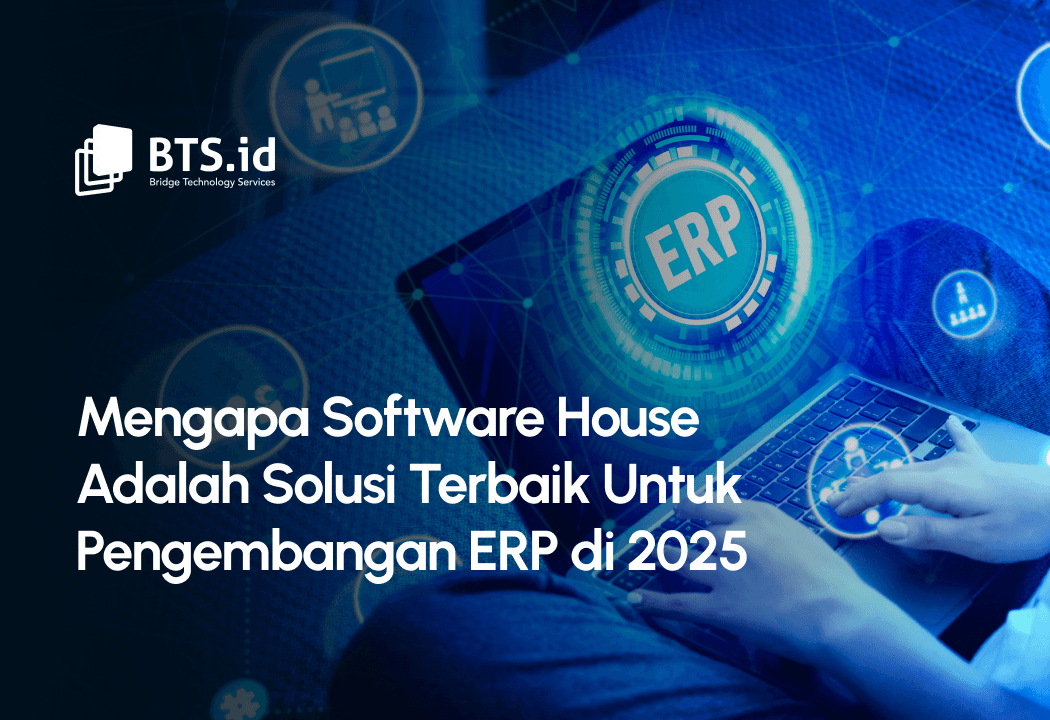
Dalam era digital yang terus berkembang, dunia bisnis menghadapi tuntutan yang semakin kompleks.
Mengelola berbagai aspek operasional, mulai dari keuangan hingga rantai pasokan, menjadi tantangan yang memerlukan pendekatan yang terintegrasi dan efisien. Di sinilah peran penting dari Enterprise Resource Planning (ERP) System muncul. Konsep sistem ERP dewasa ini telah menjadi sektor vital dalam dunia informasi teknologi.
Enterprise Resource Planning (ERP) adalah software atau perangkat lunak sistem informasi yang digunakan dalam operasional perusahaan dan manajemen perusahaan untuk mengelola dan mengotomatiskan seluruh bagian utama dari bisnis mereka, seperti produksi, distribusi, penjualan, logistik, akuntansi, keuangan, sumber daya manusia dan lainnya.
Sistem ERP adalah solusi perangkat lunak yang dirancang untuk mengintegrasikan, mengelola dan mengotomatisasi berbagai proses bisnis dalam satu sistem terpadu. Hal ini mencakup berbagai aspek, termasuk keuangan, produksi, manajemen rantai pasokan, SDM, dan banyak lagi.
Tujuannya adalah untuk meningkatkan efisiensi operasional, meningkatkan visibilitas, dan memungkinkan pengambilan keputusan yang lebih baik berdasarkan data real time.
Singkatnya ERP merupakan sistem yang dapat mengintegrasikan dan mengoptimalkan operasional perusahaan dalam satu perangkat lunak atau software.

Mengapa sistem ERP penting?
- Integrasi Proses Bisnis
Salah satu manfaat utama dari sistem ERP adalah kemampuannya untuk mengintegrasikan semua
departemen dan fungsi ke dalam satu sistem. Hal ini menghindari data yang terisolasi dan mengurangi
kesalahan manusia dalam transfer data manual.
- Visibilitas Real Time
Sistem ERP menyajikan data dalam waktu nyata, memberikan visibilitas yang lebih baik ke dalam
berbagai aspek bisnis. Hal ini memungkinkan manajemen untuk mengambil keputusan yang cepat dan
terinformasi.
- Efisiensi Operasional
Dengan mengotomatisasi proses bisnis dan mengurangi tugas manual yang repetitif, sistem ERP dapat
menghasilkan efisiensi yang signifikan. Hal ini membantu perusahaan menghemat waktu dan sumber
daya yang berharga.
- Skalabilitas
Sistem ERP dirancang untuk tumbuh seiring dengan bisnis. Hal ini dapat dengan mudah disesuaikan
dengan perubahan dalam skala operasi atau model bisnis tanpa perlu mengganti sistem sepenuhnya.
- Peningkatan Pengambilan Keputusan
Dengan akses mudah ke data dan laporan yang akurat, manajemen dapat membuat keputusan yang
lebih baik. Hal ini membantu mengarahkan bisnis ke arah yang benar dan meningkatkan kinerja
keseluruhan.
Bisnis semakin kompetitif. Semakin besar skala perusahaan maka akan semakin banyak divisi yang terlibat, sehingga membutuhkan sebuah sistem atau software untuk memudahkan proses operasional perusahaan.
Perusahaan yang memiliki software ERP bisa meningkatkan efisiensi operasional, mengurangi kesalahan akibat input manual, dan mendapatkan insight berbasis data sebelum mengambil Keputusan.
Dengan menggabungkan berbagai fungsi bisnis, seperti manajemen keuangan, persediaan, produksi dan sumber daya manusia, software ERP memberikan visibilitas menyeluruh dan kontrol yang kuat terhadap semua aspek operasional.
Menggunakan jasa software house memiliki banyak manfaat yang signifikan bagi bisnis dan proyek software Anda. Berikut adalah beberapa manfaat utamanya:
- Menghemat Waktu dan Biaya
Mengembangkan software secara in-house membutuhkan investasi yang besar dalam hal waktu, biaya
dan sumber daya manusia.
Dengan memakai jasa perusahaan software house, Anda dapat menghemat waktu dan biaya untuk
perekrutan dan pelatihan karena tim yang disediakan sudah terlatih dan siap bekerja.
- Berfokus pada Bisnis Inti Perusahaan Anda
Dengan mengalihdayakan software development ke software house, Anda dapat lebih fokus pada
aspek ini bisnis Anda tanpa terganggu oleh kompleksitas teknis dan manajemen proyek perangkat
lunak. Dengan ini Anda dapat mengalokasikan sumber daya dan perhatian pada pertumbuhan bisnis
dan strategi utama, dengan tetap memastikan bahwa core competencies Anda tetap menjadi prioritas.
- Manajemen Proyek yang Efisien
Dengan tim yang sudah berpengalaman mengelola dalam berbagai proyek software development,
software house Indonesia memiliki keahlian dalam manajemen proyek yang efisien. Mereka dapat
merencanakan, mengatur dan mengawasi proyek dengan baik sekaligus memastikan bahwa tugas
diselesaikan secara tepat waktu dan sesuai anggaran.
- Menjamin Kualitas dan Keahlian
Software house Indonesia terdiri atas tim profesional yang terampil dan berpengalaman dalam
berbagai teknologi dan bahasa pemrograman, mereka dapat dipercaya untuk memberikan solusi yang
tepat, berkualitas, dan inovatif sesuai dengan kebutuhan spesifik bisnis Anda.
Sistem ERP telah menjadi landasan untuk menyederhanakan operasi, meningkatkan manajemen data, dan mendorong pertumbuhan bisnis. Dalam perjalanan untuk memanfaatkan potensi penuh sistem ERP sering kali melibatkan keputusan penting: menyesuaikan atau tidak menyesuaikan.
Meskipun solusi software ERP menawarkan beragam fungsi, tidak ada sistem tunggal yang dapat secara sempurna memenuhi kebutuhan dan alur kerja untuk setiap bisnis.
Kustomisasi ERP merujuk pada penyesuaian sistem ERP agar selaras dengan kebutuhan dan persyaratan bisnis tertentu. Software ERP biasanya dilengkapi dengan serangkaian fitur dan modul standar yang dirancang untuk memenuhi berbagai industri dan proses bisnis.
Namun tentu saja setiap bisnis unik dan berbeda, dengan alur kerja, struktur data dan nuansa operasionalnya sendiri. Di sinilah kustomisasi berperan.
Meski manfaatnya begitu besar, pengembangan dan implementasi software ERP bukanlah tugas yang mudah.
Banyak perusahaan menghadapi berbagai tantangan teknis maupun non-teknis yang bisa menghambat adopsi sistem ini.
Berikut adalah tantangan-tantangan utama dalam pengembangan software ERP serta bagaimana software house mengatasinya.

- Biaya Implementasi yang Tinggi
Pengembangan dan implementasi software ERP membutuhkan investasi besar, baik untuk lisensi, infrastruktur, pelatihan, maupun konsultasi.
Sistem ERP adalah proyek besar yang mudah meleset dari anggaran atau timeline jika tidak direncanakan dengan matang.
Solusi yang bisa diberikan software house:
➢ Menggunakan metodologi Agile atau Scrum untuk pengembangan bertahap.
➢ Memberikan estimasi realistis dan fleksibel terhadap perubahan scope.
➢ Menyediakan dokumentasi dan pelaporan progress secara rutin.
➢ Mengoptimalkan open-source software ERP jika memungkinkan, sehingga biaya development dapat ditekan.
- Resistensi Terhadap Perubahan
Software ERP tentu akan mengubah cara kerja perusahaan secara signifikan. Karyawan yang terbiasa dengan sistem lama sering kali merasa tidak nyaman dengan perubahan, baik karena kurangnya pemahaman terhadap sistem baru maupun kekhawatiran bahwa sistem ERP akan membuat pekerjaan mereka menjadi lebih kompleks atau menggantikan peran mereka.
Bahkan ada kemungkinan manajer merasa khawatir karena ERP bisa memberikan transparansi lebih besar, sehingga kinerja mereka lebih mudah dievaluasi.
Solusi yang bisa diberikan software house:
➢ Menyelenggarakan pelatihan yang komprehensif agar karyawan bisa lebih cepat dan mudah beradaptasi dengan sistem baru.
➢ Melibatkan karyawan dalam proses perubahan sejak awal dan memberikan komunikasi yang jelas mengenai manfaat ERP bagi karyawan.
➢ Menyediakan dukungan teknis dan konsultasi selama masa transisi.
- Ketidakcocokan Antara Software dan Proses Bisnis
Tidak semua software ERP sesuai dengan kebutuhan spesifik perusahaan. Jika software ERP dipaksakan untuk mengikuti proses bisnis yang unik tanpa adanya kustomisasi, maka bisa menyebabkan ketidakefisienan dan resistensi dari pengguna.
Perusahaan sebaiknya melakukan Analisa sebelum memilih atau mengembangkan software ERP.
Gunakan juga software ERP yang fleksibel sehingga dapat disesuaikan dengan kebutuhan bisnis.
Solusi yang bisa diberikan software house:
➢ Membuat API atau middleware untuk menjembatani sistem baru dan lama.
➢ Melakukan data migrasi secara bertahap dan terencana.
➢ Melakukan audit integrasi untuk memastikan data sinkron dan tidak rusak.
- Keamanan dan Kepatuhan Regulasi
Sistem ERP menyimpan data sensitif perusahaan, termasuk informasi finansial, data pelanggan dan informasi strategis lainnya. Oleh karena itu, aspek keamanan harus menjadi prioritas utama, terutama dalam menghadapi ancaman serangan cyber yang semakin kompleks.
Solusi yang bisa diberikan software house:
➢ Mengimplementasikan enkripsi, otentikasi berlapis, dan role-based access control (RBAC).
➢ Melakukan penetration testing dan audit keamanan secara berkala.
➢ Menyediakan backup & disaster recovery.
- Membutuhkan Waktu dan Implementasi yang Lama
Software ERP biasanya memerlukan waktu implementasi yang cukup panjang, sehingga dapat mengganggu operasi bisnis perusahaan. Proyek sistem ERP yang tidak direncanakan dengan baik bisa tertunda dalam jangka waktu yang lama sehingga beresiko menimbulkan tambahan biaya.
Solusi yang bisa diberikan software house:
➢ Membuat perencanaan implementasi yang realistis dan menyiapkan tim proyek khusus.
➢ Menggunakan metodologi Agile untuk memastikan implementasi berjalan lebih fleksibel dan adaptif.
Tahun 2025 diprediksi menjadi era baru bagi sistem ERP, dengan berbagai inovasi teknologi yang semakin canggih. Sistem ERP yang dulu identik dengan sistem berat dan kaku, sekarang telah mulai berubah ke arah yang lebih fleksibel, cerdas, dan terintegrasi dengan teknologi baru.
Perusahaan akan semakin mengandalkan Artificial Intelligence (AI), cloud computing, dan otomatisasi untuk meningkatkan efisiensi operasional dan daya saing mereka.
Apa saja tren utama yang akan mendominasi dunia ERP pada tahun 2025?

- Kecerdasan Buatan (AI) Machine Learning (ML)
Teknologi AI dan machine learning akan semakin terintegrasi dalam sistem ERP, software ERP akan semakin pintar, memungkinkan analisis data yang lebih canggih, otomatisasi proses bisnis, dan peningkatan akurasi dalam prediksi pasar. Dengan AI, sistem ERP dapat mengoptimalkan manajemen rantai pasokan, mendeteksi tren keuangan, dan meningkatkan efisiensi operasional, prediksi permintaan stok, analisis keuangan otomatis, Chatbot untuk layanan internal (HR, IT), AI juga bantu dalam decision support sistem, bikin laporan yang bukan cuma angka tapi juga insight.
- Cloud ERP menjadi Standar Utama
ERP berbasis cloud akan semakin popular karena menawarkan fleksibilitas, efisiensi biaya, dan skalabilitas tinggi. Perusahaan yang beralih ke cloud ERP dapat menikmati akses data real-time dari mana saja, memudahkan pengambilan keputusan yang lebih cepat dan akurat.
- Akses Mobile dan UX yang Lebih Baik
ERP yang bisa diakses lewat mobile apps sudah menjadi keharusan.
Sistem ERP akan semakin fokus pada kemudahan penggunaan dengan antarmuka yang lebih intuitif, tampilan yang lebih user-friendly, serta aplikasi mobile yang memungkinkan akses lebih fleksibel bagi pengguna.
- Modular & Low-Code/No-Code Customization
Software ERP yang modular dan mudah dikustomisasi akan semakin diminati. Banyak vendor mulai support low-code/no-code tools guna kustomisasi tanpa coding yang berat.
Hal ini akan mempercepat deployment dan adaptasi sistem ERP ke proses bisnis yang berubah cepat.
- Sustainable dan ESG Tracking
Software ERP generasi baru mulai support pelacakan emisi karbon, konsumsi energi, dan inisiatif ESG (Environmental, Social, Governance). Perusahaan kini mulai menerapkan prinsip keberlanjutan dalam operasional mereka. Software ERP akan dilengkapi fitur pelacakan emisi karbon, pengelolaan limbah, dan transparansi rantai pasokan untuk membantu bisnis memenuhi standar standar Environmental, Social, and Governance (ESG).
- Fokus pada Keamanan dan Kepatuhan
Dengan semakin banyaknya data penting tersimpan dalam software ERP, maka isu keamanan menjadi prioritas, sehingga penting untuk menerapkan zero trust architecture, multi-factor authentication, dan regulasi compliance (misalnya GDPR atau PIPEDA).
Dalam era digital sekarang dan ke depan, software house Indonesia tidak hanya sekedar urusan coding, tapi bagaimana menjadi partner strategi bisnis yang baik. Menjadi partner inovasi digital untuk menemukan solusi teknologi terbaru, mengembangkan produk digital inovatif, serta mendorong transformasi digital perusahaan klien.
Software house Indonesia juga sebaiknya bersifat enabler ekosistem digital.
Bisnis tidak bisa dijalankan sendirian, melainkan butuh koneksi ke banyak platform dan layanan. Software house harus membangun sistem terbuka dan scalable. Integrasi API ke berbagai layanan eksternal, dan menyediakan interoperabilitas antar sistem.
Keputusan strategis dalam software development harus disesuaikan dengan tujuan bisnis, anggaran, dan kebutuhan teknologi. Dengan strategi yang tepat, software development dapat berjalan lebih efisien, aman, dan scalable. Serangkaian pilihan yang terkait dengan seluruh proses software development harus selaras dengan strategi bisnis perusahaan.
Kabar baiknya adalah dimulai dari perencanaan hingga pengerjaan seluruh proyek dan mencakup setiap langkah proses inisiatif software development Anda, kami BTS.id dapat membantu Anda melalui inisiatif pengembangan perangkat lunak bisnis Anda.
BTS.id merupakan salah satu software house di bandung, dan terbaik di Indonesia yang telah banyak dipilih oleh perusahaan-perusahaan besar di Indonesia untuk membuat dan mengembangkan custom software sesuai dengan kebutuhan mereka. Hal ini menjadikan software developer BTS.id sebagai Technology Partner terbaik untuk membantu Anda menemukan solusi bisnis yang tepat untuk perusahaan Anda.
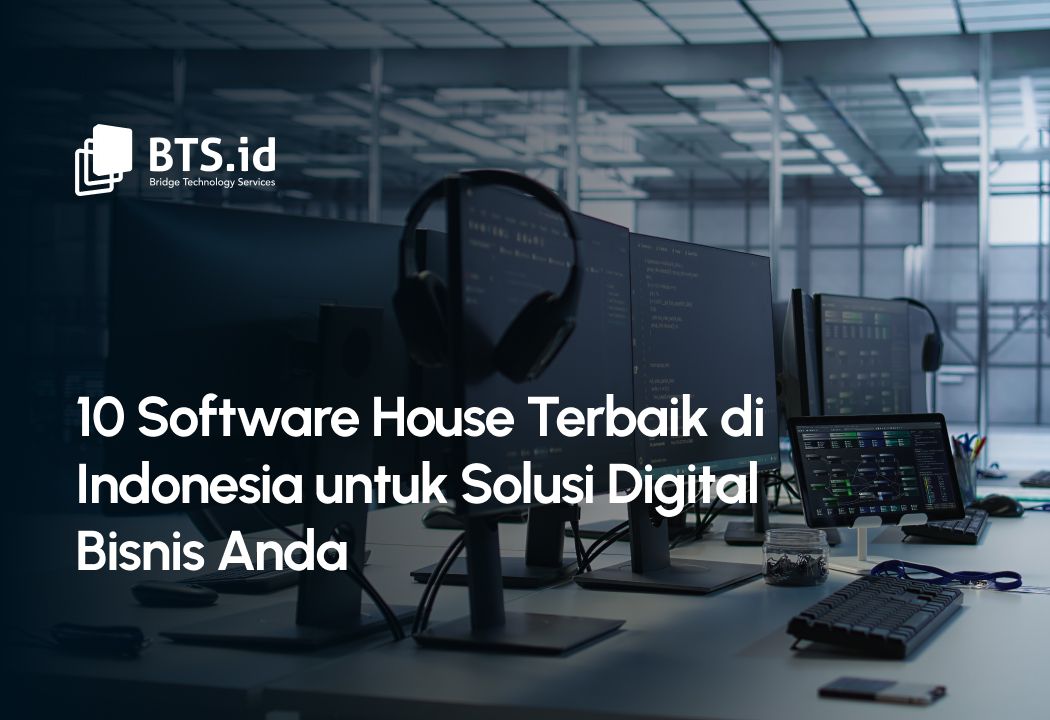
Melihat kebutuhan bisnis saat ini, software house menjadi pihak ketiga yang paling dicari karena mereka mampu menyederhanakan aktivitas bisnis kepada pelanggan, mulai dari pengenalan produk hingga transaksi.
Apabila Anda saat ini berpikir untuk memanfaatkan teknologi ke dalam strategi bisnis atau layanan Anda, maka ada cukup banyak pilihan yang dapat Anda ambil untuk memenuhi kebutuhan tersebut. Mengembangkan aplikasi atau software adalah kebutuhan penting bagi bisnis di era digital seperti sekarang.
Bisnis dari berbagai sektor mulai mengadopsi teknologi ini untuk mempercepat proses operasional, meningkatkan pengalaman pelanggan, dan memperluas jangkauan pasar. Namun pengembangan webb app yang berkualitas memerlukan keahlian khusus, di sinilah peran software house menjadi sangat penting.
Ada cukup banyak alasan yang mampu meyakinkan Anda bahwa software house tidak hanya membantu dalam membuat software yang Anda inginkan, tetapi juga bisa meningkatkan pemahaman Anda tentang pemanfaatan IT supaya bisnis dan layanan Anda dapat bergerak ke arah yang lebih baik lagi.

Secara singkat software house adalah perusahaan jasa software development sesuai kebutuhan dan keinginan klien. Banyak sekali software house di Indonesia, jika perusahaan Anda sedang mencari software house terbaik maka Anda perlu mencermati secara detail, karena hal ini menyangkut sebuah perusahaan.
Beberapa kriteria untuk memilih software house di Indonesia adalah sebagai berikut:
- Cek Portofolio
Hal pertama Ketika Anda memutuskan menggunakan jasa software house adalah mempelajari portofolio software house tersebut. Biasanya dalam portofolio akan dirincikan detail informasi para klien yang sudah ditangani. Anda sebaiknya teliti dalam melihat pengerjaa klien sebelumnya, bagus atau tidak. Bahkan untuk hal sederhana sekalipun seperti sudah berapa tahun software house tersebut berjalan, apakah baru atau sudah berkembang lama. Hal tersebut perlu dipikirkan juga, karena dengan memiliki jam terbang tinggi biasanya software house sudah paham betul apa yang harus dikerjakan.
- Memahami Kebutuhan Bisnis Perusahaan Anda
Sebagai klien, Anda menginginkan partner yang mengerti tujuan bisnis perusahaan Anda, bukan hanya sekedar mampu membuat aplikasi. Software house yang baik akan bertanya mendalam soal proses bisnis perusahaan Anda, kemudian bisa memberi masukan strategis bukan hanya teknis, serta mampu menyederhanakan solusi bukan membuat masalah semakin rumit.
- Transparansi Waktu dan Biaya
Sebagai klien Anda wajib tahu kapan project selesai, kemudian apa saja yang termasuk dan tidak termasuk dalam biaya, serta bagaimana progres akan dikelola.
- Komunikasi yang Mudah dan Responsif serta Fleksibilitas dan Sikap Kolaboratif
Software house yang baik harus cepat dalam merespons, memiliki PIC yang bisa diajak diskusi secara
rutin, serta komunikatif soal progres, kendala, dan solusi.
Software house yang baik akan fleksibel jika ada revisi, tidak kaku dan bisa berdiskusi serta solutif jika
ada perubahan kebutuhan.
Mulai dari software development hingga pengembangan website, software house menjadi mitra utama untuk mewujudkan transformasi digital. Berikut adalah rekomendasi software house Indonesia terpercaya yang siap membantu Anda:
- PT Intersolusi Teknologi Asia (BTS.id)
BTS.id adalah perusahaan Teknologi Informasi dan Komunikasi dengan pola pikir memungkinkan yang telah melayani sejak tahun 2008. BTS.id berbasis di Bandung, layanan BTS.id menjangkau seluruh kota dan lokasi di seluruh negeri.
Perusahaan ini membawa dan mempromosikan kreativitas dan keuletan yang menghasilkan kekuatan yang kuat dan kreatif yang tergabung dalam sebuah pusat kekeluargaan.
Layanan yang ditawarkan BTS.id adalah:
a. Comprehensive IT Manage Services
b. IT Outsourcing Services
c. UI/UX Outsourcing
d. Web and Mobile Development
e. Cloud Integration
f. Business Intelligence, Big Data
Beberapa keunggulan utama BTS.id (PT Intersolusi Teknologi Asia) sebagai software house
terkemuka di Indonesia:
• Pengalaman Sejak 2008
Didirikan pada tahun 2008 dan berbasis di Bandung, BTS.id telah melayani berbagai klien di seluruh Indonesia bahkan merambah ke manca negara. Pengalaman panjang ini mencerminkan stabilitas dan kepercayaan dari berbagai sektor industri.
• Spesialisasi di Berbagai Sektor Industri
BTS.id memiliki keahlian dalam berbagai sektor seperti keuangan, kesehatan, ritel, logistik dan sumber daya alam. Pendekatan ini memungkinkan mereka untuk memahami kebutuhan spesifik setiap industri dan memberikan solusi yang tepat.
• Layanan Komprehensif
BTS.id menawarkan berbagai layanan teknologi, termasuk custom software development, integrasi cloud, pengembangan ERP, dan layanan outsourcing IT. Mereja juga menyediakan solusi berbasis AI untuk mendukung pertumbuhan bisnis klien.
• Pendekatan Kolaboratif dan Inovatif
Dengan filosofi “to-make-it-possible mindset”, BTS.id mengedepankan kreativitas dan ketekunan dalam setiap proyek.
• Reputasi dan Kepercayaan Klien
BTS.id telah menjadi pilihan bagi banyak perusahaan besar di Indonesia untuk custom software development. Reputasi ini dibangun melalui dedikasi mereka dalam memberikan layanan berkualitas tinggi dan solusi yang disesuaikan dengan kebutuhan bisnis.
- Slash (Denpasar)
Spesialisai software house Indonesia ini adalah custom software development, pengembangan aplikasi mobile dan solusi digital.
Keunggulannya adalah memiliki tim yang berpengalaman dengan pendekatan agile dan telah mengerjakan berbagai proyek internasional.
- Badr Interactive (Depok)
Spesialisasi software house Indonesia ini adalah custom software development, big data, pelatihan IT, QA dan infrastruktur.
Keunggulannya telah menyelesaikan lebih dari 350 proyek dan dikenal karena fokus pada dampak sosial melalui teknologi.
- Mitrais (Denpasar)
Spesialisasi software house Indonesia ini adalah software development, layanan IT, dan solusi teknologi informasi lainnya.
Keunggulannya adalah didirikan pada tahun 1991, Mitrais memiliki pengalaman lebih dari 30 tahun dan telah melayani lebih dari 700 klien global.
- GITS.id (Bandung)
Spesialisasi software house Indonesia ini adalah mobile software development, web, dan solusi enterprise.
Keunggulannya adalah berbasis di Bandung, GITS.ID dikenal dengan tim yang solid dan telah mengerjakan berbagai proyek untuk klien besar di Indonesia.
- Kulkul Technology (Jakarta)
Spesialisasi software house Indonesia ini adalah custom software development, mobile software development dan solusi digital lainnya.
Keunggulannya adalah menawarkan layanan pendekatan yang fleksibel dan telah bekerja dengan berbagai startup serta perusahaan besar
- Ice House (Jakarta)
Spesialisasi software house Indonesia ini adalah mobile software development dan solusi digital.
Keunggulannya adalah telah mengerjakan berbagai proyek inovatif dan memiliki tim yang
berpengalaman dalam teknologi terkini.
- Sagara Technology (Jakarta)
Spesialisasi software house Indonesia ini adalah custom software development, mobile software development dan solusi teknologi informasi.
Keunggulannya adalah menawarkan layanan end-to-end dengan fokus pada kualitas dan kepuasan klien.
- Lizard Global
Spesialisasi software house Indonesia ini adalah custom software development dan solusi digital.
Keunggulannya adalah dikenal dengan pendekatan yang berorientasi pada hasil dan telah mengerjakan berbagai proyek internasional.
- Agile Technica
Spesialisasi software house Indonesia ini adalah custom software development dengan pendekatan agile.
Keunggulannya adalah menawarkan solusi yang cepat dan efisien dengan tim yang berpengalaman dalam berbagai teknologi.

Di tengah pesatnya transformasi digital, industri software development di Indonesia menunjukkan pertumbuhan yang sangat menjanjikan. Mulai dari startup hingga perusahaan besar semuanya kini mengandalkan teknologi untuk bersaing dan bertahan.
Industri IT terus berkembang pesat, dan transformasi akan semakin masif dalam kurun waktu 5–10 tahun ke depan. Bukan lagi sekedar pendukung operasional, IT telah menjadi motor utama pertumbuhan bisnis dan inovasi lintas sektor.
Arah dan tren masa depan industri IT bisa dicermati sebagai berikut:
- Artificial Intelligence (AI) dan Machine Learning (ML)
AI akan digunakan secara lebih luas , bukan hanya untuk chatbot, tapi juga prediksi bisnis, pengambilan keputusan otomatis, dan personalisasi pengalaman pengguna. Di Indonesia mulai menyusul tren global, termasuk dalam adopsi AI di sektor keuangan, logistik, dan pemerintahan.
- Migrasi ke Cloud dan Edge Computing
-Cloud akan menjadi default infrastruktur perusahaan.
-Edge computing akan populer di sektor IoT (Internet of Things), pabrik pintar, dan layanan real-time.
- Keamanan Siber Jadi Prioritas
Ancaman cyber semakin canggih, maka permintaan terhadap solusi cybersecurity, audit sistem dan proteksi data terus meningkat. Profesi seperti cybersecurity analyst dan ethical hacker akan semakin dicari.
- Internet of Things (IoT) dan Smart Devices
Dari rumah pintar, kendaraan otonom hingga pabrik otomatis, IT akan berperan besar dalam mengintegrasi dan mengelola jutaan perangkat secara efisien dan aman.
- Blockchain dan Teknologi Desentralisasi
Blockchain dan teknologi desentralisasi tidak hanya terbatas pada kripto saja, tapi juga dalam supply chain, sertifikasi digital, dan identitas digital. Potensi terbesar ada pada sektor public, logistik dan perbankan.
- Otomatisasi dan Hyperautomation
Penggunaan RPA (Robotic Process Automation) akan semakin luas, terutama di HR, finance dan operasional untuk tercapainya efisiensi kerja. Kombinasi AI + RPA akan mengubah banyak peran administratif.
Menurut PwC (2023), teknologi seperti Artificial Intelligence (AI), Cloud, dan internet of things (IoT) memiliki potensi besar untuk mengubah cara bisnis beroperasi.
Teknologi-teknologi ini tidak hanya meningkatkan efisiensi operasional, tetapi juga membuka peluang baru untuk inovasi produk dan layanan.
Gartner (2023) menambahkan bahwa teknologi-teknologi ini akan menjadi pemandu dalam pengambilan keputusan bisnis di masa depan, membantu bisnis menavigasi tantangan dan memanfaatkan peluang yang ada.

Untuk memahami lebih dalam tentang potensi teknologi masa depan dalam bisnis, berikut adalah beberapa inovasi teknologi yang siap mengubah bisnis:
- Extended Reality (XR)
Extended Reality (XR) menggabungkan elemen dari realitas virtual (VR), realitas tertambah (AR), dan realitas campuran (MR) untuk menciptakan pengalaman digital yang imersif. Bisnis dapat memanfaatkan XR untuk berbagai keperluan, mulai dari pelatihan karyawan hingga presentasi produk yang interaktif. Dengan XR, pelanggan dapat mencoba produk secara virtual sebelum membeli, meningkatkan keterlibatan dan kepuasan mereka.
- Komputasi Kuantum
Komputasi kuantum akan berdampak pada kemampuan memproses data dalam jumlah besar dengan kecepatan tinggi. Beberapa contoh adalah optimalisasi logistik, simulasi molekul di farmasi dan deteksi penipuan di sektor finansial.
- Blockchain dan Web3
Blockchain dan web3 akan membuat transparansi serta kemanan data dan desentralisasi dalam transaksi bisnis. Contohnya ada pada supply chain traceability, smart contracts, sistem loyalitas berbasis token.
- Robotika Generasi Baru
Robotika generasi baru akan mengotomatisasi proses fisik di industri logistis, manufaktur bahkan layanan. Beberapa contohnya adalah robot pengantar di warehouse, robot pelayan di restoran.
- Platform No-Code/Low-Code
Siapapun dalam perusahaan akan mampu membuat aplikasi atau automasi tanpa keahlian coding.
Contohnya adalah automasi jalur kerja internal dan dashboard analitik kustom.
Seiring perkembangan teknologi, bisnis harus terus beradaptasi dan memperbaharui strategi mereka. Dengan mengadopsi teknologi terbaru, bisnis dapat meningkatkan efisiensi, mengurangi biaya operasional dan menyediakan layanan yang lebih baik kepada pelanggan. Penting juga bagi bisnis untuk memiliki sumber daya
manusia yang kompeten dan siap menghadapi tantangan baru.
BTS.id merupakan salah satu software house di bandung, dan terbaik di Indonesia yang telah banyak dipilih oleh perusahaan-perusahaan besar di Indonesia untuk membuat dan mengembangkan custom software sesuai dengan kebutuhan mereka. Hal ini menjadikan software developer BTS.id sebagai Technology Partner terbaik untuk membantu Anda menemukan solusi bisnis yang tepat untuk perusahaan Anda.
BTS.id sebagai perusahaan yang mendorong transformasi digital hadir untuk memenuhi kebutuhan tersebut.
Kami memiliki cukup pengalaman dalam memimpin proyek untuk startup, serta terbuka untuk kerja sama mengenai konsep-konsep yang menarik. Kami akan dengan senang hati mendukung Anda dalam analisis teknis dan penganggaran, serta mengusulkan metode pemeliharaan dan dukungan teknis untuk perangkat lunak yang matang.
Hubungi kami, karena komunikasi adalah langkah pertama menuju kemitraan yang sukses.
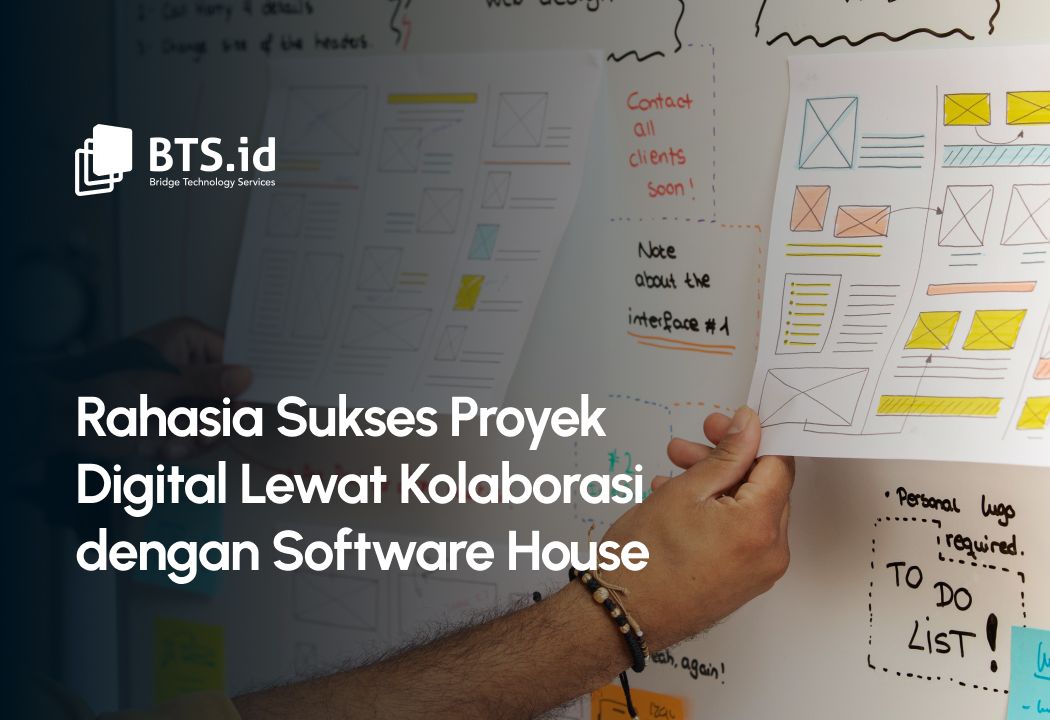
Di tengah pesatnya transformasi digital, banyak perusahaan berlomba membangun produk teknologi demi menjawab tantangan bisnis. Dalam era digital ini, kolaborasi dengan software house telah menjadi kunci penting dalam menciptakan produk digital yang inovatif dan sukses di pasar. Kolaborasi ini tidak hanya memungkinkan pertukaran ide yang kreatif dan dinamis tetapi juga mengoptimalkan sumber daya dan keahlian teknis untuk menghasilkan solusi yang efektif dan efisien.
Tapi membangun produk digital bukanlah perkara instan. Dibutuhkan strategi, perencanaan matang, dan eksekusi yang solid. Disinilah peran software house menjadi sangat penting. Namun kolaborasi saja tidak menjamin hasil yang sukses. Ada beberapa rahasia penting yang bisa menjadi pembeda antara proyek yang berhasil dan proyek yang stagnan di tengah jalan.
Membangun produk digital selain coding, dibalik aplikasi yang intuitif dan sistem yang andal, ada proses panjang yang melibatkan strategi bisnis, user experience, hingga manajemen resiko teknis. Sayangnya banyak proyek digital gagal karena kurangnya keahlian, arah yang tidak jelas, atau keterbatasan sumber daya internal. Bekerja sama dengan software house bisa menjadi kunci sukses proyek digital Anda. Tidak hanya dari sisi teknis, tapi juga dari pendekatan strategis menyeluruh.
Beberapa alasannya adalah sebagai berikut:
- Akses ke Tim Ahli Tanpa Harus Bangun dari Nol
Software house Indonesia biasanya memiliki tim lengkap mulai dari developer, UI/UX designer, project manager hingga QA tester, yang sudah terbiasa menangani berbagai jenis proyek digital. Dengan begitu Anda tidak perlu repot membentuk tim internal dari awal atau menghabiskan waktu untuk rekrutmen yang memakan waktu dan biaya.
- Pengalaman Lintas Proyek = Insight yang Bernilai
Tim software house Indonesia sering kali sudah menangani proyek di berbagai industri. Ini memberi mereka pemahaman yang kaya terhadap berbagai model bisnis, user behavior, dan solusi teknis yang tepat sasaran. Mereka bisa membantu Anda melihat potensi resiko sejak awal dan menyarankan solusi yang terbukti efektif.
- Lebih Cepat Capai Produk Siap Pakai (MVP)
Ingin segera meluncurkan produk versi awal (Minimum Viable Product)? Software house yang berpengalaman tahu cara memprioritaskan fitur penting dan membangun produk yang layak pakai dalam waktu yang efisien. Ini artinya Anda bisa mulai validasi pasar lebih cepat, dan mempercepat siklus iterasi.
- Skalabilitas Tanpa Ribet
Setelah produk dirilis dan mulai digunakan banyak pengguna, kebutuhan teknis Anda akan meningkat. Dengan software house, Anda bisa dengan mudah menskalakan tim atau menambahkan fitur baru tanpa harus membangun semuanya sendiri.
- Fokus Pada Bisnis, Bukan Masalah Teknis
Bekerja sama dengan software house Indonesia memungkinkan Anda dan tim internal untuk tetap fokus pada aspek bisnis, pemasaran, pengembangan relasi dengan pelanggan, hingga strategi jangka panjang. Sementara itu, software house menangani hal-hal teknis dan memastikan produk berjalan stabil dan optimal.
- Kemitraan Jangka Panjang yang Menguntungkan
Bukan hanya sekedar vendor, software house yang tepat akan bertindak sebagai mitra. Mereka tumbuh bersama Anda, ikut merespons kebutuhan pasar, dan terus meningkatkan performa produk seiring waktu. Kolaborasi ini bisa menjadi aset jangka panjang yang sangat berharga bagi transformasi digital perusahaan Anda.
Kolaborasi dengan software house Indonesia bukanlah pengeluaran, melainkan investasi. Dengan pendekatan yang tepat, Anda bukan hanya menghemat waktu dan biaya, tapi juga mendapatkan produk digital yang siap bersaing di pasar.
Saat Anda memutuskan untuk mengembangkan produk digital seperti aplikasi, website atau sistem internal, memilih software house yang tepat bisa jadi keputusan krusial. Pilihan ini akan sangat mempengaruhi kualitas produk, waktu pengerjaan, bahkan keberhasilan proyek secara keseluruhan.

Bagaimana cara memastikan Anda memilih partner teknologi yang benar-benar tepat?
- Pahami kebutuhan dan Tujuan Anda Terlebih Dahulu
Apa tujuan bisnis dari proyek Anda? Apa masalah yang ingin diselesaikan? Apakah Anda butuh MVP, full product, atau integrasi sistem? Seberapa cepat proyek harus selesai? Mengetahui kebutuhan Anda akan memudahkan dalam menyaring software house yang benar-benar relevan.
- Lihat Portofolio: Relevansi Lebih Penting dari Kuantitas
Selain melihat pada banyaknya proyek yang pernah dikerjakan, fokuslah pada:
• Apakah mereka pernah menangani proyek serupa?
• Apakah mereka pernah menangani proyek serupa?
• Bagaimana kualitas desain dan fungsionalitas dari produk yang mereka buat?
• Bagaimana kualitas desain dan fungsionalitas dari produk yang mereka buat?
Jika memungkinkan mintalah demo atau studi kasus. Dari sana Anda bisa menilai kualitas, kreativitas, dan pendekatan mereka terhadap solusi digital.
- Perhatikan Cara Mereka Berkomunikasi
Software house yang baik tidak hanya handal dalam segi teknis, tapi juga pandai mendengarkan dan menjelaskan. Poin-poin yang bisa Anda tanyakan adalah:
• Apakah mereka memahami kebutuhan bisnis Anda?
• Apakah mereka bisa menjelaskan hal teknis dengan Bahasa yang mudah dipahami?
• Apakah mereka responsive dan terbuka terhadap diskusi?
Karena komunikasi yang lancar akan sangat menentukan kenyamanan Anda selama proyek berjalan.
- Evaluasi Proses Kerja dan Pendekatan Proyek
Sebaiknya Anda mencari tahu, bagaimana mereka biasanya menjalankan proyek. Beberapa hal penting sebagai berikut:
• Apakah mereka menggunakan metode agile (sprint, iterasi)?
• Apakah ada project manager yang jadi contact point?
• Bagaimana cara mereka menangani revisi atau perubahan scope?
• Seberapa sering mereka memberikan update?
Proses kerja yang terstruktur akan membuat proyek Anda lebih aman dan terukur.
- Tinjau Kontrak dan Transparansi Biaya
Sebaiknya Anda meminta penjelasan sejak awal, untuk dapat memastikan hal-hal sebagai berikut:
• Ada proposal atau SOW (Statement of Work) yang jelas.
• Biaya dijelaskan secara transparan, baik secara fixed price maupun hourly
• Timeline, deliverables, dan ruang untuk revisi tertulis dengan rapi.
Karena kontrak yang baik melindungi kedua belah pihak, bukan hanya vendor.
Pilihlah software house yang bisa memahami bisnis Anda. Di luar kemampuan teknis, yang terpenting adalah memilih software house yang mengerti visi dan tujuan bisnis Anda. Mereka harus bisa berperan sebagai mitra yang membantu Anda mencapai hasil, bukan hanya menyelesaikan tugas semata.
Transformasi digital telah menjadi kata kunci dalam dunia bisnis modern. Proses ini melibatkan penggunaan teknologi digital untuk mengubah cara bisnis beroperasi dan memberikan nilai kepada pelanggan. Salah satu elemen penting transformasi digital adalah pengembangan perangkat lunak khusus atau custom software development.
Software development adalah proses membuat aplikasi atau sistem digital, mulai dari merancang, membangun, menguji, hingga memeliharanya. Tujuannya adalah menciptakan solusi teknologi yang bisa digunakan untuk memecahkan masalah atau meningkatkan efisiensi bisnis. Software development bisa dilakukan oleh tim internal perusahaan atau bekerja sama dengan software house sebagai mitra pengembang.
Transformasi bukan lagi pilihan, melainkan kebutuhan. Perusahaan dari berbagai sektor dituntut untuk bergerak cepat, adaptif, dan mampu menciptakan inovasi berbasis teknologi agar tetap relevan di pasar yang kompetitif.
Namun transformasi digital bukan hanya sekedar membeli sistem baru atau membuat aplikasi. Dibutuhkan pendekatan strategis, eksekusi teknis yang matang, dan adaptasi berkelanjutan. Disinilah peran software house menjadi sangat penting.
Berikut adalah beberapa peran penting software house Indonesia dalam transformasi digital:
- Pendorong Percepatan Transformasi Digital
Banyak perusahaan memiliki visi digital, tetapi terkendala sumber daya internal, keahlian teknis, atau bandwidth tim. Software house hadir sebagai mitra strategis yang mampu menerjemahkan kebutuhan bisnis menjadi solusi digital. Dapat membangun sistem dari nol atau mengintegrasikan teknologi baru serta dapat memberikan kecepatan eksekusi melalui tim ahli yang siap jalan. Dengan software house, perusahaan tidak perlu memulai dari nol atau menunggu tim internal siap.
- Solusi End to End: Dari Ide hingga Implementasi
Software house yang baik tidak hanya berfokus pada coding semata. Mereka mampu mendampingi proses transformasi digital dari awal hingga akhir, memvalidasi ide dan kebutuhan pengguna, desain UI/UX yang ramah pengguna, pengembangan dan pengujian sistem, maintenance, evaluasi dan memberikan dampak nyata.
- Inovasi Lebih Cepat Lewat Eksperimen Terukur
Salah satu kunci inovasi adalah kemampuan bereksperimen dengan cepat. Software house Indonesia memungkinkan perusahaan untuk membangun MVP (Minimum Viable Product) secara efisien, menerapkan pendekatan agile untuk iterasi cepat, mencoba solusi baru tanpa membebani tim internal. Dengan begitu, perusahaan bisa menguji ide lebih cepat dan menghindari kegagalan besar yang mahal.
- Adaptasi Teknologi Terbaru Tanpa Beban Belajar
Teknologi terus berkembang, AI, machine learning, cloud computing, blockchain, dan lainnya. Untuk perusahaan, mengikuti semua tren ini secara internal bisa jadi sulit. Software house biasanya sudah lebih dulu menguasai teknologi baru dan siap mengimplementasikannya sesuai konteks bisnis, Perusahaan pun bisa fokus pada core bisnis sambil terus berinovasi.
- Fleksibilitas dan Skalabilitas Tanpa Resiko Besar
Transformasi digital adalah perjalanan panjang, dan kebutuhan perusahaan bisa berubah sewaktuwaktu. Software house memberikan fleksibilitas seperti menyesuaikan kapasitas tim sesuai fase proyek, menambahkan fitur baru tanpa menambah struktur internal, mengurangi beban overhead dan resiko rekrutmen. Ini membuat inovasi jadi lebih scalable dan sustainable.
Transformasi digital dan inovasi bukanlah proses yang bersifat satu kali selesai, melainkan perjalanan panjang yang membutuhkan mitra strategis yang adaptif, visioner, dan eksekutor andal. Software house yang tepat tidak hanya menyelesaikan proyek. Mereka ikut tumbuh bersama Anda, memahami bisnis Anda, dan menjadi partner nyata dalam menciptakan inovasi yang berdampak. Bekerja sama dengan software house bisa menjadi langkah strategis dalam mempercepat transformasi digital perusahaan. Tapi seperti semua bentuk kolaborasi, pasti ada tantangan yang bisa muncul kapan saja, Apa saja tantangan yang kerap ditemui?

- Perbedaan ekspektasi antara Klien dan Vendor
Seringkali klien membayangkan hasil akhir yang berbeda dari apa yang dikembangkan oleh software house. Hal ini bisa terjadi karena ekspektasi tidak dijelaskan secara rinci di awal. Hal seperti ini bisa diatasi dengan memulai proyek dengan dokumen Scope of Work (SOW) yang jelas. Menggunakan prototype atau wireframe sejak awal untuk menyamakan persepsi. Kemudian melakukan review berkala di setiap milestone untuk memastikan keselarasan.
- Komunikasi yang Tidak Efektif
Kurangnya komunikasi atau miskomunikasi bisa menyebabkan keterlambatan, kesalahan teknis, bahkan frustasi di kedua pihak. Menjadwalkan pertemuan rutin (mingguan atau sprint-based) untuk evaluasi progress, kemudian menetapkan satu PIC dari masing-masing pihak agar komunikasi terarah, dapat menjadi cara untuk mengatasinya.
- Kurangnya Pemahaman Bisnis oleh Tim Teknis
Mengajak tim software house memahami latar belakang bisnis dan target pengguna, serta melibatkan mereka dalam diskusi strategi, bukan hanya urusan teknis, dan memilih partner yang terbiasa bekerja lintas industri dan berfikir strategis, bisa menjadi cara untuk mengatasi tantangan ini.
- Perubahan Scope Proyek (Scope Creep)
Terkadang klien ingin menambahkan fitur baru di tengah proyek. Jika tidak dikendalikan, hal ini bisa memperlambat pengerjaan dan pembengkakan biaya. Dengan menggunakan metode Agile, agar perubahan bisa dikelola dalam sprint, serta mendokumentasikan semua perubahan dan dampaknya terhadap timeline dan biaya, kemudian mendiskusikan prioritas, mana yang harus dikerjakan sekarang mana yang bisa ditunda, akan dapat mengatasi tantangan tersebut.
- Kekhawatiran Terhadap Kualitas dan Keamanan Produk
Sering sekali klien khawatir apakah software yang dibuat cukup aman, stabil, dan scalable. Untuk mengatasinya bisa dengan meminta software house menjelaskan standar kualitas, dan praktik keamanan mereka, kemudian memastikan ada proses QA testing dan code review dalam alur kerja mereka. Kemudian tanyakan apakah mereka menerapkan best practice seperti CI/CD. Backup, dan monitoring.
Semua kolaborasi pasti punya tantangan. Tapi dengan komunikasi terbuka, dokumentasi yang rapi dan sikap saling percaya, Anda bisa mengubah tantangan menjadi peluang untuk membangun produk digital yang lebih kuat dan relevan. Software house yang tepat bisa menjadi partner strategis dalam perjalanan digitalisasi bisnis Anda. Tapi seperti semua kemitraan, hasil terbaik hanya bisa tercapai bila ada kepercayaan, komunikasi terbuka, dan komitmen dua arah. Bukan hanya tentang apa yang mereka kerjakan, tapi bagaimana Anda membangun kerja sama yang saling menguatkan.
Keputusan strategis dalam software development harus disesuaikan dengan tujuan bisnis, anggaran, dan kebutuhan teknologi. Dengan strategi yang tepat, software development dapat berjalan lebih efisien, aman, dan scalable. Serangkaian pilihan yang terkait dengan seluruh proses software development ini, harus selaras dengan strategi bisnis perusahaan.
BTS.id merupakan salah satu software house di bandung, dan terbaik di Indonesia yang telah banyak dipilih oleh perusahaan-perusahaan besar di Indonesia untuk membuat dan mengembangkan custom software sesuai dengan kebutuhan mereka. Hal ini menjadikan software developer BTS.id sebagai Technology Partner terbaik untuk membantu Anda menemukan solusi bisnis yang tepat untuk perusahaan Anda.
BTS.id memiliki cukup pengalaman dalam memimpin proyek untuk startup, serta terbuka untuk kerja sama mengenai konsep-konsep yang menarik. Kami akan dengan senang hati mendukung Anda dalam analisis teknis dan penganggaran, serta mengusulkan metode pemeliharaan dan dukungan teknis untuk perangkat lunak yang matang. Hubungi kami, karena komunikasi adalah langkah pertama menuju kemitraan yang sukses.
WHAT’S ON TODAY TECH SCENE
BRIDGE TECHNOLOGY SERVICES

AI Cybersecurity: Solusi Masa Depan untuk Software House Melawan Ancaman Cyber
Cybersecurity sangat penting bagi software house karena melindungi data sensitif pelanggan dan perusahaan dari serangan cyber. Perusahaan software development harus menerapkan langkah-langkah keamanan yang kuat untuk mencegah pencurian data, kerugian finansial dan kerusakan reputasi yang dapat ditimbulkan oleh pelanggaran keamanan.
Bagi software house yang merupakan perusahaan software development, juga menangani data sensitif pelanggan, seperti informasi pribadi, data keuangan dan rahasia dagang.
Di era transformasi digital, software house Indonesia menjadi mitra kunci bisnis dalam mengembangkan solusi teknologi inovatif. Mereka membantu startup hingga perusahaan besar merancang sistem custom, aplikasi, atau integrasi platform untuk meningkatkan efisiensi dan daya saing.
Cybersecurity membantu melindungi data dari pencurian, akses tidak sah serta penyalahgunaan.
Di era digital yang semakin maju, cybersecurity telah menjadi salah satu isu yang paling penting. Sebagai hasil dari ketergantungan kita yang semakin meningkat pada teknologi, ancaman terhadap keamanan informasi digital juga semakin kompleks dan berbahaya. Keamanan dunia maya tidak hanya melibatkan perlindungan data pribadi tetapi juga menjaga integritas sistem dan jaringan yang digunakan oleh perusahaan dan organisasi.
Menghadapi ancaman yang terus berubah, pendekatan keamanan konvensional sering kali tidak cukup untuk memberikan perlindungan maksimal. Karena itulah Artificial Intelligence (AI) mulai diterapkan dalam keamanan cyber untuk membantu dalam deteksi, analisis dan respons terhadap serangan dengan lebih cepat dan akurat.
Cybersecurity adalah praktik perlindungan sistem, jaringan, dan data dari ancaman digital dapat menyebabkan pencurian informasi atau gangguan operasional. Dalam era digital yang serba terkoneksi, berbagai ancaman seperti peretasan, malware. dan serangan phising terus berkembang dengan metode yang semakin canggih.

Memilih software yang aman sangat penting untuk menjamin bahwa aplikasi, sistem, atau solusi digital yang Anda pakai tidak hanya fungsional tetapi juga terlindungi dari ancaman cyber.
Beberapa ciri-ciri dan standar penting software house aman adalah:
- Menerapkan Praktik Cybersecurity yang Baik
Software house Indonesia yang baik menerapkan kode aman (secure code practices), juga menerapkan pengetesan keamanan aplikasi (seperti penetration testing), serta memastikan enkripsi data selama transmisi dan penyimpanan.
- Sertifikasi dan Standar Keamanan
Software house Indonesia yang terpercaya biasanya mematuhi standar industri, seperti:- ISO/IEC 27001: Standar manajemen keamanan informasi,
- OWASP Top 10: Panduan menghindari celah keamanan umum,
- Compliance GDPR/UU PDP: Perlindungan data pribadi pengguna.
- Tim Keamanan Internal atau Mitra Keamanan
Memiliki tim khusus keamanan atau bekerja sama dengan pihak ketiga untuk:- Melakukan audit keamanan
- Mendeteksi kerentanan sejak awal pengembangan
- Memberikan pembaruan keamanan (security patch)
- Menggunakan Infrastruktur Cloud yang Aman
Software house Indonesia yang baik memilih cloud terpercaya seperti AWS, Google Cloud, atau Azure yang sudah memiliki sistem keamanan tingkat tinggi (termasuk firewall, enkripsi, dan pemantauan real-time)
- Pemantauan dan Logging
Sistem yang dibangun mencakup:- Log aktivitas pengguna
- Sistem deteksi anomali
- Monitoring real-time terhadap serangan atau akses ilegal.
- Pengujian dan Quality Assurance (QA) yang Komprehensif
Software house Indonesia yang aman tidak hanya melakukan pengujian fungsional tetapi juga melakukan security testing, load and stress testing untuk mencegah crash saat trafik tinggi, serta pengujian integrasi terhadap API atau sistem pihak ketiga
- Transparansi kepada Klien
Software house Indonesia yang profesional terbuka tentang teknologi yang digunakan, akses siapa saja yang memiliki hak ke data atau sistem, serta prosedur jika terjadi pelanggaran keamanan.
Teknologi AI dalam keamanan, khususnya cybersecurity berperan penting dalam mendeteksi, mencegah, dan merespon ancaman secara lebih cepat dan akurat. AI membantu sistem keamanan untuk belajar dan beradaptasi terhadap pola ancaman yang terus berkembang, meningkatkan efektivitas perlindungan. Artificial Intelligence (AI) mengacu pada penerapan algoritma cerdas dan teknik machine learning untuk meningkatkan deteksi, pencegahan, dan respons terhadap ancaman cyber.
AI memberdayakan sistem cybersecurity untuk menganalisis sejumlah besar data, mengidentifikasi pola, dan membuat keputusan yang tepat dengan kecepatan dan skala yang melampaui kemampuan manusia.
AI dalam cybersecurity merevolusi deteksi ancaman, mengotomatiskan respons, dan memperkuat manajemen kerentanan. Dengan menganalisis perilaku, mendeteksi phising, dan beradaptasi dengan ancaman baru, AI meningkatkan strategi keamanan cyber, memungkinkan pertahanan proaktif, dan menjaga data sensitif.
Penggunaan AI dalam cybersecurity memberikan keamanan proaktif, cepat, dan adaptif. Bagi software house Indonesia, ini bukan hanya soal melindungi sistem internal, tapi juga menjadi nilai jual strategis dalam menghadirkan solusi software yang aman dan terpercaya bagi klien.

Beberapa benefit penggunaan AI dalam cybersecurity khususnya di lingkungan software house Indonesia adalah:
- Deteksi Ancaman Real Time
Salah satu benefit terbesar AI adalah kemampuannya untuk mendeteksi ancaman cyber secara real time.
Dengan memantau lalu lintas jaringan dan perilaku pengguna AI mampu mengidentifikasi aktivitas yang mencurigakan atau anomali sebelum serangan terjadi. Sistem ini juga belajar dari pola serangan sebelumnya untuk meningkatkan deteksi ancaman baru,
- Machine Learning untuk Analisa Ancaman
Benefit lainnya yang bisa diperoleh adalah dengan machine learning, AI dapat mempelajari pola serangan dan memperbaiki algoritma deteksi ancaman secara berkelanjutan. Teknologi ini digunakan dalam analisis forensik pasca insiden untuk mengidentifikasi kelemahan sistem dan mencegah serangan serupa di masa depan.
- Otomatisasi Respon Insiden
Benefit berikutnya adalah AI mampu mengotomatisasi respon terhadap serangan, seperti memblokir akses pengguna yang mencurigakan atau menghentikan proses berbahaya sebelum kerusakan lebih lanjut terjadi. Ini mengurangi waktu respon yang krusial dalam menahan dampak serangan.
- Threat Hunting dengan AI
AI mendukung tim keamanan dalam melakukan threat hunting memberikan benefit yang krusial yakni pencarian aktif terhadap ancaman yang tidak terdeteksi oleh sistem keamanan biasa. Dengan analisis data yang besar dan kompleks, AI mampu mempercepat proses identifikasi ancaman tersembunyi.
Kendala teknis dan implementasi AI dalam cybersecurity berkisar dari masalah teknologi hingga lingkungan peraturan dinamis yang menghambat inisiatif AI.
Ada beberapa challenge utama terhadap inisiatif AI yang perlu diatasi oleh software house Indonesia sebagai penggiat software development, profesional keamanan cyber, pembuat kebijakan dan organisasi sebelum cybersecurity bertenaga AI berkembang untuk mengembangkan solusi AI yang lebih tangguh, andal, dan etis.
Berikut diantaranya beserta solusinya:
- Keterbatasan Data yang Relevan
Challenge pertama adalah AI membutuhkan data berkualitas tinggi dan bervariasi untuk belajar mendeteksi ancaman, namun faktanya data cybersecurity yang akurat sering sulit diakses, juga kurangnya dataset lokal (khusus Indonesia atau industri tertentu)
Solusi:- Bangun data pipeline internal untuk mengumpulkan dan mengklasifikasi log keamanan.
- Gunakan data open-source untuk pelatihan awal.
- Terapkan data anonymization agar aman untuk pemrosesan AI.
- False Positive dan False Negative
Challenge selanjutnya adalah AI bisa menghasilkan false positive, yaitu ancaman palsu yang membuat tim terganggu. AI juga bisa menghasilkan false negative, merupakan ancaman nyata yang tidak terdeteksi.
Solusi:- Gunakan pendekatan hybrid (AI+manusia) untuk verifikasi
- Lakukan fine-tuning model ML secara berkala berdasarkan feedback dari tim keamanan
- Terapkan threshold adaptif untuk pengambilan keputusan AI
- Biaya Implementasi dan Infrastruktur
Berikutnya adalah challenge dalam mengembangkan AI untuk keamanan cyber memerlukan investasi di server, storage, GPU, serta tim ahli AI dan cybersecurity.
Solusi:- Gunakan platform cloud security Ai (seperti AWS GuardDuty, Azure Sentinel)
- Mulai dari proyek kecil atau proof-of-concept terlebih dahulu
- Kolaborasi dengan startup AI lokal
- Kurangnya Talenta dan Keahlian Teknis
Challenge selanjutnya adalah masih terbatasnya talenta yang menguasai AI dan cybersecurity secara bersamaan.
Solusi:- Latih tim internal melalui workshop dan bootcamp khusus AI security
- Rekrut atau outsourcing ke konsultan AI/cybersecurity
- Gunakan alat AI yang user friendly dengan antarmuka visual
Cybersecurity adalah bidang penting yang penuh tantangan dalam dunia digital, semakin banyak informasi yang tersimpan dan diproses secara digital maka cybersecurity akan menjadi sangat penting. Setiap organisasi termasuk perusahaan, pemerintah, dan individu, bergantung pada teknologi digital untuk menyimpan dan memproses data, yang dapat mencakup data sensitif dan penting seperti data pribadi, data bisnis, dan data pemerintah.

Serangan cyber bisa mengakibatkan kehilangan data, kerusakan pada sistem dan infrastruktur, serta merusak reputasi bisnis, juga dapat berdampak pada keamanan nasional dan beberapa stabilitas politik di sebagian negara.
Dalam industri teknologi informasi dan software development, berikut masa depan AI dalam cybersecurity:
- Deteksi Ancaman Lebih Proaktif dan Prediktif
Dulu akan bersifat reaktif terhadap serangan cyber. Namun kini dan dimasa depan potensi serangan sebelum terjadi bisa lebih dulu diprediksi dan terdeteksi.
Dengan machine learning, AI akan menganalisis pola serangan historis, memprediksi celah keamanan di tahap awal pengembangan serta memberi rekomendasi pencegahan sebelum kode dirilis.
- Integrasi Penuh dalam CI/CD Pipeline
Di masa depan, AI akan menjadi bagian penting dari:- Code scanning otomatis
- Uji penetrasi virtual (AI-driven penetration testing)
- Audit compliance otomatis (misal GDPR, ISO)
Contohnya Ai dapat memberi alert saat mendeteksi library open-source yang rentan dalam proyek
software.
- Cybersecurity Otomatis dan Autonom
AI akan memungkinkan sistem keamanan yang:- Merespons ancaman secara otomatis
- Menambal (patch) celah keamanan tanpa campur tangan manusia
- Mengisolasi sistem secara cerdas saat ada intrusi
Sehingga di masa depan serangan zero-day bisa dihadapi dalam hitungan detik, bukan hari.
- AI vs AI: Perang Cyber Masa Depan
Penyerangan juga menggunakan AI untuk menyusun serangan cyber yang lebih canggih sehingga akan muncul AI Defender vs AI Attacker.
Implikasi: Industri AI yang responsif, adaptif, dan resilien, bukan hanya pintar.
- Kolaborasi Global dan Standar Baru
Akan muncul standar global baru dalam AI Security Ethics, Akan ada pula kolaborasi antara pemerintah,
perusahaan teknologi, dan akademisi untuk membangun AI cybersecurity yang bertanggung jawab.
Regulasi akan berkembang, misalnya:- UU Perlindungan AI (AI Act di Eropa)
- Standar audit keamanan AI
Dampak bagi software house Indonesia dan developer adalah:
- Lebih efisien: Banyak tugas keamanan akan diotomatisasi
- Lebih aman: Proyek software jadi lebih tahan terhadap serangan cyber
- Lebih kompetitif: Software House Indonesia dengan AI security akan dipercaya pasar global
- Lebih Fokus: Developer bisa fokus pada fitur dan inovasi, bukan hanya mitigasi resiko
Masa depan AI cybersecurity adalah era dimana keamanan bersifat prediktif, otomatis, dan kontekstual. Bagi industri software dan TI, integrasi AI dalam keamanan bukan lagi pilihan, melainkan keharusan untuk bertahan dan unggul di era yang semakin kompleks.
AI bukan hanya alat tambahan, tetapi kini menjadi komponen kunci dalam membangun sistem keamanan yang tangguh.
Bagi software house Indonesia, penerapan AI dalam cybersecurity memberikan:
- Deteksi ancaman yang lebih cepat
- Automasi respon insiden
- Pencegahan serangan yang lebih proaktif
- Keunggulan kompetitif dalam menawarkan solusi software yang aman dan terpercaya.
Namun keberhasilan implementasi bergantung pada strategi, kesiapan infrastruktur, dan kolaborasi tim multidisiplin.
Mengadopsi AI dalam cybersecurity bukanlah langkah instan, tetapi investasi jangka panjang yang akan memperkuat reputasi, keandalan, dan daya saing software house Anda.
Mulailah dari langkah kecil, konsisten berinovasi, dan bangun budaya keamanan berbasis teknologi cerdas.
BTS.id sebagai salah satu software house di Bandung, dan terbaik di Indonesia dapat memenuhi segala kebutuhan Anda di bidang IT hingga memberikan solusi bagi setiap permasalahan bisnis Anda, telah banyak dipilih oleh perusahaan-perusahaan besar Indonesia untuk membuat dan mengembangkan custom software sesuai dengan dengan kebutuhan mereka.
Konsultasikan permasalahan IT Anda pada ahlinya sekarang!

Custom Software vs SaaS: Pilih Solusi Terbaik untuk Bisnis Anda
Pengguna teknologi memudahkan manusia dalam menjalani kehidupannya di berbagai sektor, terutama sektor bisnis. Salah satu jenis teknologi yang banyak dibutuhkan oleh pelaku bisnis adalah teknologi dalam bentuk perangkat lunak atau software.
Persaingan pasar yang semakin ketat, kebutuhan untuk meningkatkan efisiensi operasional, serta tuntutan untuk tetap relevan di tengah perkembangan teknologi menjadi isu utama yang harus dihadapi. Namun, dibalik tantangan ini terdapat berbagai solusi digital yang dapat membantu mereka meningkatkan efisiensi dan daya saing.
Solusi bisnis digital, yang seringkali diwujudkan melalui layanan dari software house Indonesia adalah kunci bagi perusahaan untuk beradaptasi dan berkembang di era digital.
Software house Indonesia menyediakan layanan custom software development dan solusi IT yang disesuaikan dengan kebutuhan spesifik setiap bisnis, membantu meningkatkan efisiensi, produktivitas, dan daya saing di pasar yang kompetitif.
Di era transformasi digital, software house Indonesia menjadi mitra kunci bisnis dalam mengembangkan solusi teknologi inovatif. Mereka membantu startup hingga perusahaan besar merancang sistem custom, aplikasi, atau integrasi platform untuk meningkatkan efisiensi dan daya saing.
Software house adalah perusahaan yang bergerak di bidang software development untuk berbagai kebutuhan bisnis. Mereka bertanggung jawab dalam merancang, membangun, dan mengelola aplikasi atau sistem yang membantu perusahaan meningkatkan efisiensi operasional. Dari aplikasi mobile hingga sistem berbasis cloud, software house menawarkan solusi teknologi yang disesuaikan dengan kebutuhan klien.
Custom software development adalah proses pembuatan solusi software yang dirancang khusus untuk memenuhi kebutuhan unik suatu organisasi atau individu.
Berbeda dengan software standar yang menawarkan fungsionalitas umum, custom software difokuskan pada personalisasi untuk keselarasan sempurna dengan proses operasional, strategi bisnis, dan kebutuhan teknologi.
Dalam dunia bisnis yang semakin digital, pemilihan software yang tepat dapat berdampak pada efisiensi operasional, produktivitas dan pertumbuhan perusahaan.
Dua pilihan utama yang sering dipertimbangkan adalah Custom Software (perangkat lunak kustom) dan SaaS (software as a Service). Keduanya memiliki keunggulan dan tantangan masing-masing, tergantung pada kebutuhan bisnis perusahaan Anda.
Software custom memberikan fleksibilitas dan kontrol penuh, tetapi membutuhkan investasi besar dan waktu pengembangan yang lama. Di sisi lain, Saas menawarkan solusi instan dengan biaya lebih terjangkau, tetapi dengan keterbatasan kustomisasi.
Custom software development menawarkan berbagai keunggulan dibandingkan software siap pakai, terutama dalam hal fleksibilitas, efisiensi, dan skalabilitas. Umumnya custom software dibuat berdasarkan analisis mendalam tentang proses bisnis, tantangan, dan tujuan perusahaan. Sistem ini kemungkinan tidak tersedia di software instan seperti Saas, sehingga custom development bisa menjadi solusi,
Biasanya perusahaan bekerja sama dengan software developer untuk menciptakan solusi yang benar-benar disesuaikan dengan workflow dan proses bisnis mereka.
Beberapa benefit custom software development adalah:

- Solusi yang Sepenuhnya Sesuai Dengan Kebutuhan
Custom software development dibuat khusus untuk menyesuaikan dengan workflow dan kebutuhan spesifik perusahaan.
Berbeda dari software siap pakai yang memiliki fitur standar untuk berbagai bisnis, salah satu benefit custom software memastikan semua fungsinya relevan dan efektif tanpa perlu penyesuaian tambahan. - Integrasi Lebih Mudah Dengan Sistem yang Sudah Ada
Benefit selanjutnya dari custom development adalah custom software dapat dikembangkan agar kompatibel dengan teknologi dan sistem yang sudah digunakan perusahaan.
Ini menghindari masalah kompatibilitas dan memastikan operasional berjalan lancar tanpa hambatan teknis akibat integrasi yang buruk. - Meningkatkan Produktivitas dan Efisiensi
Dengan fitur yang dirancang khusus, proses kerja menjadi lebih cepat dan efisien. Integrasi antar sistem lebih optimal, mengurangi pekerjaan manual, serta mempercepat akses dan pengolahan data, sehingga karyawan dapat fokus pada tugas yang lebih strategis, sehingga menjadi benefit tersendiri bagi perusahaan. - Kepemilikan Penuh dan Kontrol Total
Benefit selanjutnya dari custom development adalah Anda memiliki akses penuh ke source code (sumber kode), data, dan roadmap pengembangan tanpa tergantung pada penyedia software tertentu. - Keamanan Lebih Terjamin
Benefit yang tak kalah pentingnya adalah keamanan, karena dibuat khusus, sistem keamanan dapat disesuaikan dengan kebutuhan perusahaan, termasuk fitur enkripsi, autentikasi ganda, dan perlindungan data sensitif. Hal ini lebih aman dibanding software siap pakai yang sering menjadi target cyber crime karena digunakan secara luas.
Selain benefit dan keunggulan, berikut kekurangan dan tantangan dari custom software development adalah:
- Ketergantungan pada Vendor atau developer: Klien bisa menjadi tergantung pada vendor untuk pemeliharaan, update, atau troubleshooting. Resiko besar jika vendor tidak lagi tersedia atau memberikan dukungan.
- Resiko Kegagalan Proyek Lebih Tinggi: Tanpa manajemen proyek dan komunikasi yang baik maka bisa terjadi miskomunikasi antara pengguna bisnis dan tim teknis. Kemungkinan terjadi resiko produk akhir tidak sesuai harapan.
- Kompleksitas dalam Skalabilitas dan Integritas: Jika tidak dirancang dengan baik dari awal bisa berdampak dalam penambahan fitur atau integrasi baru bisa rumit dan mahal. Sementara skalabilitas bisa menjadi kendala teknis dan finansial di masa depan.
- Dukungan dan Pemeliharaan: Harus memiliki tim IT sendiri atau bergantung pada vendor untuk pemeliharaan.

Apa itu SaaS?
SaaS (Software as a Service) adalah software yang memungkinkan pengguna mengakses dan menggunakan aplikasi berbasis cloud melalui internet. Beberapa contoh adalah:
➢ CRM (Customer Relationship Management)
Membantu bisnis melacak interaksi pelanggan, mengelola prospek, menganalisis pipa penjualan dan menjalankan kampanye pemasaran yang efektif.
➢ SaaS Accounting
Menyediakan solusi perangkat lunak akuntansi berbasis cloud yang memungkinkan mengelola keuangan secara online.
➢ ERP (Enterprise Resource Planning)
Mengintegrasikan berbagai fungsi menjadi satu sistem lengkap untuk menyederhanakan proses di seluruh organisasi.
➢ HRIS (Human Resource Management System)
Untuk mengelola berbagai aspek sumber daya manusia dalam perusahaan.
Tidak seperti program traditional software lainnya, aplikasi SaaS tidak perlu diinstal di komputer Anda.
Harganya juga relatif lebih terjangkau karena Anda hanya membayar untuk figur yang Anda gunakan. Benefit terbesar dari aplikasi Saas adalah dapat diakses dari mana saja di dunia asalkan Anda memiliki koneksi internet. Layanan ini juga mempermudah perusahaan karena tidak membutuhkan maintenance.
SaaS cocok digunakan bagi startup atau perusahaan yang ingin membuat aplikasi tapi tidak mau direpotkan dengan berbagai server dan sejenisnya.
Beberapa kelebihan SaaS adalah:
- Biaya dan Investasi
Dari segi biaya, SaaS mempunyai benefit tersendiri, tergolong lebih hemat, dimana Anda tidak perlu melakukan maintenance server atau update karena dilakukan oleh penyedia layanan secara rutin.
Dengan menggunakan sistem subscribe, perusahaan hanya membayar sesuai jumlah pengguna dan fitur yang digunakan. Namun biaya ini bisa meningkat seiring pertumbuhan bisnis. - Kecepatan Implementasi
SaaS bisa langsung digunakan setelah berlangganan, sehingga cocok bagi bisnis yang membutuhkan solusi cepat tanpa perlu proses pengembangan. - Maintenance dan Update Otomatis
Semua pembaruan dan pemeliharaan dilakukan oleh penyedia Saas. - Akses Fleksibel
Bisa diakses dari mana saja selama ada koneksi internet.
Beberapa kekurangan yang perlu dipertimbangkan sebelum memilih SaaS adalah:
- Kustomisasi terbatas
SaaS umumnya didesain untuk kebutuhan umum. Akan sulit atau bahkan tidak mungkin untuk mengubah alur kerja atau fitur secara spesifik sesuai dengan kebutuhan bisnis yang unik. - Biaya Berkelanjutan
Meskipun biaya awal rendah, langganan bulanan/tahunan bisa menumpuk dalam jangka panjang. Jika kebutuhan bertambah (pengguna, fitur premium), biaya bisa meningkat signifikan. - Masalah Integrasi
SaaS mungkin tidak mendukung integrasi dengan sistem internal atau software lain yang digunakan perusahaan, sehingga bisa membutuhkan middleware atau solusi tambahan. - Potensi Downtime Tanpa Kendali
Jika terjadi gangguan server pada penyedia SaaS, Anda tidak bisa langsung mengatasinya. Hal ini dapat mempengaruhi operasional harian bisnis.
Menentukan apakah bisnis Anda sebaiknya menggunakan solusi kustom (custom software) atau SaaS (software as a Service) adalah keputusan strategis penting yang akan mempengaruhi efisiensi, biaya, dan skalabilitas jangka panjang.

Kapan Harus memilih Custom Software?
- Jika bisnis Anda memiliki kebutuhan unik yang tidak bisa dipenuhi oleh solusi Saas.
- Jika keamanan data menjadi prioritas utama.
- Jika Anda ingin solusi yang scalable tanpa batasan vendor.
- Jika anggaran memungkinkan investasi besar di awal untuk solusi jangka panjang.
Kapan Harus memilih SaaS?
- Jika Anda membutuhkan solusi cepat dengan biaya yang lebih rendah
- Jika bisnis Anda tidak memerlukan kustomisasi yang kompleks.
- Jika Anda ingin fokus pada bisnis tanpa harus mengelola sistem IT.
- Jika Anda menginginkan pemeliharaan dan update otomatis.
Memilih antara SaaS dan custom software bukan sekedar soal teknologi, tetapi keputusan strategis yang berdampak langsung pada efisiensi, pertumbuhan, dan daya saing bisnis Anda.
Tidak ada jawaban pasti apakah custom software atau SaaS yang lebih baik, karena semuanya tergantung pada kebutuhan bisnis Anda. Jika Anda menginginkan solusi yang benar-benar sesuai dengan proses bisnis dan memiliki anggaran yang cukup, custom software adalah pilihan terbaik.
Namun jika Anda menginginkan solusi cepat, hemat biaya, dan siap digunakan, maka SaaS bisa menjadi pilihan yang lebih praktis.
Custom software umumnya memang membutuhkan investasi besar karena proses pengembangannya melibatkan analisis bisnis yang mendalam, perancangan sistem yang disesuaikan, testing yang ketat, hingga integrasi yang optimal. Tetapi tentu saja sebanding dengan manfaat yang diberikan, seperti software yang dapat berkembang bersama bisnis, efisiensi yang lebih tinggi, serta kontrol penuh atas keamanan dan data.
Dengan custom software development, Anda tidak perlu lagi membayar biaya langganan berkepanjangan atau beradaptasi dengan batasan fitur dari SaaS.
Maka konsultasikan kebutuhan bisnis Anda dengan ahli teknologi atau software house yang terpercaya.
Pendekatan yang tepat akan mempercepat transformasi digital dan membantu Anda unggul dalam persaingan pasar yang terus berkembang.
Jika Anda masih bingung menentukan pilihan yang tepat, kami BTS.id dapat membantu Anda!
Kami menyediakan layanan custom software development yang disesuaikan dengan kebutuhan bisnis Anda.
BTS.id merupakan salah satu software house di Bandung, dan terbaik di Indonesia yang telah banyak dipilih oleh perusahaan-perusahaan besar Indonesia untuk membuat dan mengembangkan custom software sesuai dengan dengan kebutuhan mereka. Hal ini menjadikan software house developer BTS.id sebagai Technology Partner terbaik untuk membantu Anda menemukan solusi bisnis yang tepat untuk perusahan Anda.

Augmented Reality: Solusi Inovatif dari Software House Indonesia untuk Berbagai Industri
Apabila Anda saat ini berpikir untuk memanfaatkan teknologi ke dalam strategi bisnis atau layanan Anda, maka ada cukup banyak pilihan yang dapat Anda ambil untuk memenuhi kebutuhan tersebut.
Mengembangkan aplikasi atau software adalah kebutuhan penting bagi bisnis di era digital seperti sekarang ini. Software house Indonesia menjadi kunci penting dalam kesuksesan bisnis modern, dimana software house menciptakan solusi perangkat lunak inovatif, mengembangkab aplikasi yang relevan dengan kebutuhan pasar dan membantu bisnis dalam mengoptimalkan proses operasional mereka.
Melihat kebutuhan bisnis saat ini, software house menjadi pihak ketiga yang paling dibutuhkan, karena kemampuan mereka menyederhanakan aktivitas bisnis kepada klien, mulai dari pengenalan produk hingga transaksi.
Software house Indonesia menyediakan layanan software development baik aplikasi atau web, untuk kebutuhan berbagai kebutuhan bisnis, dimana software development merupakan suatu aspek penting dalam industri teknologi informasi (TI), yang merupakan jantung inovasi teknologi di berbagai sektor. Software development tidak hanya mencakup pembuatan aplikasi desktop saja, tetapi juga aplikasi mobile, situs web bahkan sistem operasi.
Saat ini kita sedang berada pada era informasi. Dalam tiga tahun terakhir telah banyak data dibuat sebelumnya. Bukan hanya pada jumlah data yang dibuat, tetapi juga bagaimana data tersebut meningkatkan kualitas pengambilan keputusan.
Disinilah koneksi cerdas menjadi relevan, informasi perlu dikumpulkan pada waktu yang tepat, pada titik yang tepat, dan ditampilkan dalam konteks yang tepat. Mesin dan manusia selalu terhubung pada era industri 4.0,sehingga proses industri menjadi meningkat.
Revolusi ini tidak hanya bergantung pada satu teknologi, tetapi beberapa teknologi. Salah satu teknologi ini adalah Augmented Reality (AR). Mari kita lihat bagaimana teknologi ini mempengaruhi revolusi industri 4.0.

Sudahkah Anda mendengar istilah teknologi bernama Augmented Reality?
Teknologi ini sebenarnya sudah sering ditemui dalam kehidupan sehari-hari dan sering digunakan dalam aplikasi yang terinstal pada smartphone.
Augmented Reality atau AR adalah teknologi yang memperoleh penggabungan secara real time terhadap digital konten yang dibuat oleh komputer dengan dunia nyata. Augmented Reality memperbolehkan pengguna melihat objek maya 2D atau 3D yang diproyeksikan terhadap dunia nyata.
Penerapan teknologi Augmented Reality dewasa ini kian pesat, sehingga semakin menguatkan posisinya dalam mendominasikan tren teknologi di tahun ini, dengan sederet nama besar seperti Microsoft, Amazon, Apple, Facebook, dan Google yang berkomitmen dalam penerapan dan pengembangannya.
Augmented Reality adalah versi dunia nyata yang dimodifikasi, yang dicapai melalui penggunaan teknologi. AR menggunakan aplikasi, konsol, layar, dan proyeksi untuk melapisi dan menggabungkan informasi digital dengan lingkungan dunia nyata.
Augmented Reality (AR) telah membuat perubahan visual pada lingkungan nyata atau menyempurnakan lingkungan tersebut dengan menambahkan informasi baru. AR dapat digunakan untuk berbagai keperluan termasuk permainan, visualisasi produk, iklan pemasaran, arsitektur dan desain rumah, pendidikan, kesehatan
serta manufaktur industri.
Teknologi telah membawa perubahan besar dalam dunia pendidikan. Dengan salah satu teknologi yang mulai mendapat perhatian dalam beberapa tahun terakhir adalah Augmented Reality (AR), AR menggabungkan elemen digital dengan dunia nyata, memungkinkan pengguna untuk melihat dan berinteraksi dengan objek
virtual dalam lingkungan fisik.
AR menghadirkan potensi besar dalam pendidikan, memungkinkan pembelajaran menjadi lebih interaktif, imersif, dan menarik bagi siswa. AR memiliki potensi besar dalam merevolusi cara belajar mengajar.
Berikut adalah beberapa manfaat utama yang dapat diperoleh dari penerapan AR dalam dunia pendidikan:
- Pembelajaran yang Lebih Interaktif dan Imersif
AR dengan kemampuannya membuat siswa dapat melihat dan berinteraksi dengan objek virtual, seperti model anatomi tubuh manusia, tata surya, dan bangunan bersejarah, dapat memutar dan memperbesar gambar untuk melihat lebih detail, dimana hal ini membuat proses belajar mengajar menjadi lebih menarik. Teknologi ini memberikan siswa gambaran yang lebih jelas dan mendalam dibandingkan hanya melalui gambar 2D di buku teks. Selain itu pelajaran seperti fisika dan kimia juga bisa lebih hidup dengan simulasi eksperimen langsung yang diproyeksikan ke dalam dunia nyata.
- Belajar Dimana Saja dan Kapan Saja
Dengan perangkat mobile yang mendukung AR, membuat AR tidak hanya terbatas pada ruang kelas saja. Siswa dapat belajar dimana saja dan kapan saja. Hal ini memberikan fleksibilitas bagi siswa untuk mengakses materi pelajaran di luar jam sekolah dan mengembangkan cara belajar yang lebih mandiri.
Contoh yang lainnya adalah aplikasi AR yang dirancang untuk pelajaran sejarah, membuat siswa dapat menjelajahi situs-situs bersejarah dan monumen penting tanpa harus melakukan perjalanan fisik.
Mereka dapat melihat rekonstruksi bangunan bersejarah, membaca informasi tambahan dan mempelajari detail arsitektur yang mungkin sulit diakses dalam kehidupan nyata.
- Meningkatkan Pemahaman Konsep yang Abstrak
Banyak mata pelajaran di sekolah yang mengajarkan konsep-konsep abstrak yang sulit dipahami oleh siswa, terutama jika hanya dijelaskan secara verbal atau melalui buku teks. Teknologi AR memungkinkan siswa untuk memvisualisasikan konsep-konsep ini dalam bentuk visual yang konkret dan mudah dipahami.
Contohnya dalam pelajaran matematika, AR dapat membantu memvisualisasikan bentuk geometri dalam 3D, memberikan siswa pengalaman visual yang membantu pemahaman mereka. Dalam pelajaran astronomi, AR dapat digunakan untuk menampilkan model tata surya yang interaktif, memungkinkan siswa untuk memahami hubungan antara planet, bulan, dan matahari dalam skala yang lebih realistis. Ini membantu siswa memvisualisasikan ukuran dan jarak benda langit dengan lebih baik dibandingkan hanya melihat diagram 2D.
- Mendukung Berbagai Gaya Belajar
Setiap siswa memiliki gaya belajar yang berbeda. Beberapa lebih suka belajar melalui teks, beberapa lebih suka visualisasi atau pembelajaran praktis. AR memberikan kesempatan untuk menggabungkan berbagai gaya belajar ini dalam satu platform. Siswa yang belajar dengan cara visual dapat memanfaatkan visualisasi 3D, sementara siswa yang suka eksplorasi mandiri dapat menggunakan AR untuk mengeksplorasi materi pelajaran secara lebih mendalam. Selain itu AR juga dapat disesuaikan dengan kecepatan belajar masing-masing siswa, memberikan mereka kendali lebih besar atas proses pembelajaran mereka.

Dengan dukungan teknologi dan investasi yang terus berkembang, AR berpotensi menjadi pilar penting dalam transformasi digital pada pelayanan kesehatan di Indonesia.
Penerapan AR dalam sektor kesehatan di Indonesia telah membawa perubahan positif, mulai dari peningkatan kualitas operasi bedah hingga edukasi kesehatan masyarakat, meningkatkan kualitas layanan medis, efisiensi operasional dan aksesibilitas pasien.
Berikut adalah beberapa penerapan dan dampaknya:
- Presisi Bedah yang Ditingkatkan
Teknologi AR memberikan visualisasi tiga dimensi secara real time terhadap anatomi pasien selama operasi. Ini memungkinkan para ahli bedah untuk melakukan prosedur dengan presisi dan akurasi yang lebih tinggi, dan dapat mengurangi resiko komplikasi. Informasi vital seperti CT scan atau gambar MRI dapat disematkan langsung ke tubuh pasien, memungkinkan pengambilan keputusan yang lebih baik selama operasi kompleks. Dengan AR, resiko dan tingkat komplikasi dapat diminimalkan karena para ahli bedah memiliki pemahaman mendalam terhadap struktur internal pasien.
- Pelatihan Medis dan Edukasi
AR telah mengubah paradigma pendidikan medis dengan menawarkan pengalaman pembelajaran yang mendalam. Mahasiswa dan profesional medis dapat menggunakan aplikasi AR untuk memvisualisasikan dan berlatih prosedur bedah, memeriksa model pasien virtual, serta mensimulasikan skenario medis. Ini tidak hanya meningkatkan keterampilan mereka tetapi juga memperdalam pemahaman terhadap konsep medis yang kompleks.
AR memungkinkan simulasi medis interaktif, memberikan pengalaman langsung kepada para pelajar.
Mereka dapat berlatih dalam lingkungan virtual yang mendekati situasi nyata, meningkatkan kesiapan mereka untuk menghadapi tantangan medis dunia nyata.
- Konsultasi Jarak Jauh dan Telemedia
Ar memungkinkan penyedia layanan kesehatan untuk melakukan konsultasi jarak jauh dengan perjanjian telemedia dengan pasien. Dengan menggunakan kacamata AR atau aplikasi khusus, dokter dapat memeriksa kondisi pasien, memberikan panduan dan membuat diagnosis yang terinformasi dari jarak jauh.
Dengan menggunakan AR dalam telemedis, pelayanan kesehatan dapat dioptimalkan, mengurangi beban sistem kesehatan dan memberikan akses yang lebih baik bagi pasien. Ini juga memungkinkan pertukaran informasi yang cepat antara penyedia layanan kesehatan dan pasien, mempercepat proses diagnosa dan perawatan.
- Rehabilitasi dan Terapi Fisik
Dalam ranah rehabilitasi dan terapi fisik, AR menawarkan terapi yang menarik dan disesuaikan.
Pasien dapat mengikuti rutinitas yang dipandu AR secara interaktif, meningkatkan motivasi dan kepatuhan terhadap rencana terapi. Dengan memberikan aspek interaktif dan terlibat dalam terapi, AR dapat meningkatkan hasil secara keseluruhan, sehingga pasien merasa lebih terlibat dalam proses pemulihan mereka, serta berkontribusi pada keberhasilan terapi dan pemeliharaan jangka panjang.
- Imaging Medis yang Akurat
AR meningkatkan imaging medis dengan menyematkan gambar diagnostik seperti sinar-X atau ultrasound langsung ke tubuh pasien selama pemeriksaan.
Overlay waktu nyata ini memberikan pandangan yang lebih komprehensif terhadap kondisi pasien, membantu mendeteksi anomali dan merencanakan perawatan dengan lebih efektif.
Augmented Reality (AR) juga tengah naik daun pada sektor ritel. Dengan melapisi informasi digital ke dunia fisik, AR menghadirkan proses belanja yang unik dan mendalam, yang mengubah lanskap ritel. Dari munculnya E-commerce hingga maraknya belanja melalui perangkat seluler, perusahaan telah berevolusi untuk memenuhi perubahan perilaku dan ekspektasi konsumen.
Teknologi AR memiliki potensi besar untuk meningkatkan pengalaman berbelanja dengan menyediakan perpaduan yang mulus antara dunia fisik dan digital. Teknologi ini memungkinkan konsumen untuk mencoba produk secara virtual, memvisualisasikan perabotan di rumah mereka sebelum membeli, atau bahkan berjalan-jalan di toko virtual hanya dari ruang keluarga mereka.
Manfaat AR untuk pengalaman pelanggan pada sektor ritel:
- Virtual Try-On
Pelanggan bisa “mencoba” produk secara virtual tanpa menyentuhnya, contohnya pada fashion, pelanggan dapat mencoba pakaian, sepatu, atau kacamata menggunakan kamera ponsel. Bahkan pelanggan juga bisa melihat hasil riasan seperti lipstick atau foundation di wajah secara real-time.
Beberapa brand besar seperti Sephora dan L’Oreal telah menggunakan AR untuk uji coba riasan wajah secara virtual.
- Visualisasi Produk di Rumah
Pelanggan dapat melihat bagaimana produk (furniture, TV, atau dekorasi) akan terlihat di ruangan mereka sendiri. IKEA menggunakan AR pada aplikasi IKEA Place untuk menempatkan furniture secara virtual di rumah pelanggan.
- Label Interaktif dan Informasi Tambahan
Dengan memindai produk, pelanggan bisa mengakses detail produk secara mendalam, video demonstrasi atau instruksi pengguna, bahkan ulasan pelanggan secara langsung. Hal ini membantu pelanggan untuk membuat keputusan lebih cepat.
- Navigasi di Dalam Toko (Indoor AR Navigation)
AR dapat memandu pelanggan menuju produk yang mereka cari di toko besar seperti supermarket dan pusat perbelanjaan.

Augmented Reality bukan hanya teknologi menarik, tetapi juga merupakan alat strategis untuk menciptakan pengalaman belanja yang cerdas, personal, dan menyenangkan. Pada era digital-first, AR bisa menjadi pembeda utama bagi brand ritel yang ingin unggul di pasar kompetitif.
Augmented Reality (AR) juga menawarkan banyak aplikasi inovatif dalam sektor pariwisata dan perhotelan, meningkatkan pengalaman wisatawan dan mempermudah berbagai proses. Contohnya tur virtual kamar hotel, check-in tanpa antrian, dan informasi interaktif tentang destinasi.
Teknologi AR hanyalah salah satu cara inovasi membawa pemasaran perjalanan dan pariwisata ke tingkat yang lebih tinggi. Teknologi ini tidak hanya mengubah pengalaman pelanggan, tetapi juga merevolusi sektor ini secara keseluruhan, dengan potensi penuh yang masih menunggu untuk dikembangkan.
Augmented Reality (AR) menawarkan manfaat yang signifikan bagi sektor pariwisata, terutama dengan smartphone di tangan kita. Beberapa diantaranya adalah:
- AR Mudah Diakses Melalui Perangkat Seluler
AR dapat dengan mudah diakses melalui perangkat seluler, serta berfungsi sebagai alat pemasaran yang ampuh untuk hotel, menyediakan konten interaktif yang membantu mempengaruhi keputusan wisatawan dan membangun kepercayaan dengan klien potensial. Para tamu dapat menjelajahi kamar dan fasilitas secara virtual bahkan sebelum melangkah masuk, cara yang sangat baik untuk mengkonversi pengunjung baru dan mengubah mereka menjadi pelanggan setia.
- AR Memungkinkan Calon Pelanggan Terlibat Langsung
AR memungkinkan calon pelanggan untuk terlibat dengan penawaran Anda dengan cara yang lebih menarik. AR bahkan mendorong pemesanan menit terakhir dengan memberikan informasi instan, seperti petunjuk arah hotel Anda.
Pada dasarnya, AR bertindak sebagai pemandu setiap saat di saku mereka, menawarkan fitur-fitur, dan membuat tempat-tempat wisata menjadi lebih menarik.
- Transportasi
Menjelajahi kota menjadi lebih menarik dengan AR. Aplikasi ini dapat menginformasikan tempat-tempat penting di sepanjang jalan dan menawarkan petunjuk arah dalam berbagai bahasa. Jika wisatawan tidak yakin dengan jalan yang akan mereka lalui, panah interaktif dapat memandu mereka, dan mereka dapat melihat pratinjau tujuan mereka sebelum tiba.
- Menjadikan Perjalanan Dapat Diakses oleh Semua Orang
AR dapat membuat perjalanan lebih mudah diakses. Bagi individu dengan keterbatasan mobilitas atau fisik, versi virtual destinasi wisata memungkinkan mereka menjelajahi tempat-tempat wisata hanya dari rumah mereka.
Implementasi Augmented Reality (AR) oleh software house Indonesia menghadapi berbagai tantangan, baik dari sisi teknis, bisnis, hingga ekosistem. Meskipun potensinya besar untuk sektor seperti edukasi, kesehatan, ritel, dan pariwisata, adopsinya masih belum masif.
Berikut adalah beberapa tantangan-tantangan utama sebagai berikut:
- Keterbatasan Infrastruktur dan Perangkat
Tidak semua perangkat pengguna mendukung (support) AR, spesifikasi kamera, sensor, atau prosesor terkadang tidak memadai. Selain itu jaringan internet di beberapa daerah terkadang belum stabil, dimana AR membutuhkan bandwidth tinggi dan latency rendah (terutama AR real-time). Hal ini berdampak tidak optimalnya pengalaman pengguna, sehingga membuat klien enggan berinvestasi lebih jauh.
- Kurangnya Talenta Spesialis AR
AR memerlukan keahlian khusus seperti pemrograman grafis 3D, pengolahan citra, pemodelan ruang, dan AI. BAnyak software house Indonesia belum memiliki tim khusus AR dan harus belajar dari awal, bahkan bergantung pada plugin siap pakai (seperti Vuforia, ARKit, ARCore). Hal ini dapat berdampak pada waktu dan biaya pengembangan meningkat, sehingga sulit bersaing dengan pemain luar negeri.
- Biaya Pengembangan yang Tinggi
Pembuatan konten AR (3D object, animasi, integrasi sensor) memerlukan waktu dan SDM lebih banyak dibandingkan aplikasi biasa. Klien lokal terutama UMKM dan instansi pemerintah, seringkali memiliki anggaran terbatas. Hal ini berdampak AR hanya diminati oleh perusahaan besar, dan akan membatasi skala pasar software house.
- Kurangnya Edukasi Pasar
Banyak calon pengguna belum memahami nilai tambah AR. AR hanya dianggap ‘gimmick’ atau terlalu futuristik, bukan solusi yang praktis. Maka dampaknya akan sulit menjual atau meyakinkan klien untuk berinvestasi, terutama di sektor tradisional.
- Masalah Standar dan Kompatibilitas
Tidak ada standar baku untuk integrasi Ar lintas platform (Android, iOS, web). Beberapa solusi AR belu terintegrasi baik dengan sistem lain seperti ERP, e-commerce, atau payment gateway. Hal ini akan berdampak pada implementasi teknis jadi lebih kompleks, memerlukan penyesuaian tambahan.
Augmented Reality (AR) memiliki potensi besar untuk mendorong transformasi digital di berbagai sektor industri di Indonesia. Dengan kemampuannya menggabungkan dunia fisik dan digital secara interaktif, AR mampu meningkatkan efisiensi, produktivitas, serta pengalaman pengguna baik dalam skala konsumen maupun industri.
Meskipun software house Indonesia mulai merambah teknologi AR, mereka harus menghadapi berbagai kendala, mulai dari keterbatasan teknis, pasar yang belum matang, hingga tantangan edukasi dan regulasi.
Dibutuhkan kolaborasi antara software house Indonesia, pemerintah dan sektor industri agar adopsi AR bisa tumbuh lebih cepat dan luas.
Dengan pendekatan yang tepat, Augmented Reality (AR) dapat menjadi motor penggerak industri 4.0 yang membawa Indonesia menuju masa depan yang lebih cerdas, efisien, dan kompetitif secara global.
Ingin memiliki teknologi AR yang dirancang khusus sesuai kebutuhan bisnis Anda?
BTS.id menyediakan layanan konsultasi untuk kebutuhan teknologi perusahaan Anda. BTS.id berisi tim dengan kombinasi skill teknis, komunikasi, dan kemampuan analisis bisnis yang mumpuni. BTS.id akan membantu Anda mengambil keputusan untuk proyek Anda kedepannya.
BTS.id merupakan salah satu software house di Bandung, dan terbaik di Indonesia yang telah banyak dipilih oleh perusahaan-perusahaan besar Indonesia untuk membuat dan mengembangkan custom software sesuai dengan dengan kebutuhan mereka. Hal ini menjadikan software house developer BTS.id sebagai Technology Partner terbaik untuk membantu Anda menemukan solusi bisnis yang tepat untuk perusahan Anda.
Hubungi tim BTS.id sekarang juga untuk dapat memiliki teknologi Augmented Reality (AR) yang sesuai kebutuhan bisnis Anda.

Metode Agile dan Waterfall dalam Industri Software House Indonesia: Mana yang Lebih Efektif?
Melihat kebutuhan bisnis saat ini, software house menjadi pihak ketiga yang paling dicari karena mereka mampu menyederhanakan aktivitas bisnis kepada klien, mulai dari pengenalan produk hingga transaksi.
Software house Indonesia menjadi kunci penting dalam kesuksesan bisnis modern, dimana software house menciptakan solusi perangkat lunak inovatif, mengembangkan aplikasi yang relevan dengan kebutuhan pasar, dan membantu bisnis dalam mengoptimalkan proses operasional mereka.
Peran utama software house Indonesia adalah mengembangkan perangkat lunak (software development) sesuai dengan kebutuhan dan spesifikasi klien. Software house Indonesia merancang aplikasi dari awal atau memodifikasi software yang sudah ada untuk memenuhi kebutuhan bisnis klien.
Software development adalah proses kreatif dan juga teknis yang digunakan untuk merancang, membuat, menguji serta memelihara program pada komputer atau aplikasi yang memenuhi kebutuhan pengguna. Proses ini melibatkan banyak langkah dan metode untuk memastikan software yang dihasilkan tidak hanya fungsional, tetapi juga andal, aman dan mudah digunakan.
Software development merupakan salah satu aspek penting dalam industri teknologi informasi (TI), yang merupakan jantung dari inovasi teknologi di berbagai sektor.
Software development secara sederhana dapat dijelaskan sebagai proses pembuatan software dari awal hingga selesai, dimana dalam prosesnya melibatkan perancangan, pengkodean, pengujian dan pemeliharaan aplikasi atau program yang diharapkan mampu menyelesaikan masalah atau memenuhi kebutuhan pengguna.
Software development tidak hanya mencakup pembuatan aplikasi desktop saja, tetapi juga mencakup aplikasi mobile, situs web bahkan sistem operasi.
Software development biasanya bekerja sama dalam tim dan menggunakan berbagai alat serta bahasa pemrograman untuk menyelesaikan proyek. Dengan adanya software development, hampir setiap aspek kehidupan manusia saat ini dapat terhubung melalui teknologi, baik itu di berbagai bidang bisnis.
Dalam software development adalah hal umum jika proses pengembangan dilakukan dengan metodologi yang terstruktur. Ada beberapa metodologi populer yang digunakan dalam software development.
Saat memulai proyek software development pemilihan metodologi proyek menjadi krusial, yang sering kali menimbulkan perdebatan, karena melibatkan dua pendekatan populer yang telah dikenal luas, Sebagaimana sulitnya membuat dan memprioritaskan product backlog menentukan metode software development yang akan digunakan juga bukanlah hal yang mudah.
Setiap metodologi berusaha untuk memastikan bahwa software yang dikembangkan sesuai dengan requirement yang dibutuhkan. Setiap metode yang ada memiliki value proposition sendiri dan kelebihan serta kekurangannya masing-masing.
Berikut ini adalah penjelasan mengenai dua metodologi software development yang paling populer saat ini.

- Agile Methodology
Agile methodology merupakan pendekatan yang lebih fleksibel. Pengembangan dilakukan dalam iterasi yang lebih kecil, biasanya disebut sprint yang memungkinkan perubahan atau penyesuaian sepanjang proses pengembangan. Agile cocok untuk proyek yang dinamis dan membutuhkan adaptasi cepat terhadap feedback dari pengguna.
Agile methodology berfokus pada perencanaan yang adaptif, evolutionary dan improvement yang berkelanjutan melalui respon yang fleksibel terhadap perubahan. Tujuan akhir dari metode ini adalah release yang lebih cepat dengan resiko bugs/issue yang lebih sedikit.
- Waterfall Methodology
Waterfall methodology adalah pendekatan tradisional dalam software development, dimana setiap tahapan pengembangan diselesaikan secara berurutan. Setelah satu fase selesai, tim akan pindah ke fase berikutnya tanpa kembali ke fase sebelumnya. Model ini cocok untuk proyek yang sudah memiliki kebutuhan yang jelas dan stabil.
Waterfall methodology merupakan metode software development yang paling tua yang secara substansi mensimplifikasi proses software engineering ke dalam diagram proses linear dimana penyelesaian dari task sebelumnya sangat penting bagi developer untuk bisa mengerjakan pekerjaan yang lain.
Karakteristik dan Proses Kerja Agile Methodology
Melansir Wrike, Agile methodology adalah sebuah metode manajemen proyek yang berjalan dengan cara membaginya menjadi beberapa fase. Fase-fase tersebut diantaranya adalah penyusunan konsep, inisiasi dan analisis, desain konstruksi dan coding, percobaan dan implementasi.
Pada agile methodology, pekerjaan yang telah terbagi pada masing-masing pemangku jobdesk akan berjalan secara bersamaan, mulai dari proses perencanaan, eksekusi hingga evaluasi.
Sederhananya agile methodology adalah pendekatan pengembangan yang fleksibel dan berulang, fokus pada penyampaian nilai yang cepat dan berkelanjutan. Proses kerjanya melibatkan iterasi pendek (sprint), perencanaan yang berkelanjutan, dan pengujian yang terintegrasi. Karakteristiknya meliputi kemampuan beradaptasi terhadap perubahan, kolaborasi tim dan penyampaian produk yang berfungsi secara bertahap.
Secara detail berikut karakteristik Agile Methodology:
- Iterasi dan Incremental
Pengembangan dilakukan secara bertahap dalam siklus pendek (biasanya 1-4 minggu, disebut sprint) dimana setiap iterasi menghasilkan versi produk yang bisa digunakan. - Responsif Terhadap Perubahan
Perubahan kebutuhan pengguna bisa diakomodasi kapan saja, bahkan di akhir pengembangan. - Fokus pada Pengguna
Kebutuhan dan umpan balik pengguna menjadi acuan utama dalam menentukan prioritas pengembangan. - Pengiriman Produk Lebih Cepat
Agile methodology bertujuan menghasilkan nilai bisnis sejak dini dengan mengirimkan bagian produk lebih awal. - Transparansi Proses
Proses dan progres selalu terlihat dan bisa dipantau oleh semua pihak.

Proses Kerja Agile Methodology adalah sebagai berikut:
- Product Backlog
Daftar semua fitur dan kebutuhan produk dan diprioritaskan oleh product owner. - Sprint Planning
Tim memilih item dari backlog yang akan dikerjakan dalam sprint, kemudian menentukan tujuan sprint (sprint goal). - Sprint (Iterasi)
Masa pengerjaan selama 1-4 minggu, setiap hari dilakukan Daily Stand Up Meeting (rapat harian, max 15 menit) - Increment
Hasil kerja sprint adalah produk yang dapat digunakan (potentially shippable product) - Sprint Review
Tim mendemonstrasikan hasil sprint kepada stakeholder untuk mendapatkan masukan. - Sprint Retrospective
Evaluasi internal tim, apakah berjalan dengan baik, apa yang bisa ditingkatkan di sprint berikutnya.
Berikut adalah beberapa metode Agile yang paling umum digunakan:
- Scrum Methodology: Metode agile ini memiliki fokus tentang software development yang kompleks.
- Scaled Agile Framework (SAFe): Metode ini hadir khusus untuk perusahaan besar yang ingin memakai metode agile.
- Lean Software Development (LSD): Metode agile yang bertujuan untuk mengambangkan software memakai jumlah SDM yang minim.
- Kanban: Merupakan metode agile dengan proses dilakukan secara visual sehingga aktivitas flow kerja lebih terpantau. Visual ini disebut Kanban Board berupa papan virtual yang memiliki tiga tahap To Do, In Progress, dan Done.
- Extreme Programming (XP): Merupakan metode agile yang memiliki fokus utama pada sisi teknis software development yang menekankan pada praktik-praktik teknis kolaborasi yang intensif dalam tim sehingga dapat menghasilkan software berkualitas tinggi.
- Crystal Methodology: Metode yang lebih fokus pada kondisi tim yang bekerja dibandingkan pad tool atau proses. Fokus pada komunikasi tim, interaksi, dokumentasi, dan feedback. Dengan demikian, hasil pengembangan software yang dibuat lebih maksimal.
- Dynamic System Development Method (DSDM): Metode yang fokus pada keterlibatan seluruh anggota tim secara berkesinambungan untuk menghadirkan software yang bermanfaat secara nyata bagi dunia bisnis.
- Feature Driven Development (FDD): Metode yang berfokus untuk menyelesaikan satu fitur. Mirip dengan Scrum, tetapi setiap iterasinya hanya berdurasi 2-20 hari. Dengan demikian, fitur FDD skalanya lebih spesifik untuk bisa selesai tepat waktu.
Beberapa hal yang perlu Anda perhatikan adalah kelebihan dan tantangan masing-masing metode. Berikut ini adalah kelebihan dan tantangan Agile Methodology:
Kelebihan Agile Methodology:
- Fokus pada pengerjaan software, sehingga tidak perlu terlalu khawatir pada dokumentasi, setiap prosesnya bersifat inkremental sehingga meminimalisir resiko selama proses pengembangan.
- Berfokus pada keterlibatan klien pada setiap fase. Pendekatan yang adaptif sehingga dapat merespon perubahan requirement dengan sangat cepat dan efisien.
- Komunikasi yang berkelanjutan meningkatkan transparansi antar klien dan tim development.
- Feedback yang berkesinambungan akan meminimalisir resiko dengan signifikan
- Kualitas pengembangan dijamin terawat.
Implementasi Agile methodology tidak hanya melibatkan penerapan proses dan praktik baru, tetapi juga mendorong perubahan budaya dalam bisnis. Termasuk mengubah pola pikir, mendorong kolaborasi, dan merangkul pendekatan yang lebih adaptif dan responsif untuk menghasilkan produk.
Akan ada hambatan dan tantangan ketika perubahan yang diperkenalkan dalam sistem dan dapat menjadi kacau jika tidak ditangani. Implementasi Agile melibatkan transisi dari pendekatan manajemen dan pengembangan proyek yang tradisional dan seringkali kaku (seperti waterfall) ke metode yang lebih iteratif dan bertahap.
Tantangan Agile Methodology:
- Kurangnya Pemahaman Agile
Banyak tim atau perusahaan yang mengira Agile hanya berarti ‘cepat’ atau ‘tanpa dokumentasi’, sehingga tidak memahami prinsip dasar Agile seperti kolaborasi, iterasi, dan adaptasi. - Kurangnya Komitmen Stakeholder
Stakeholder seringkali tidak terlibat secara aktif dalam sprint review atau memberikan feedback, padahal keterlibatan mereka sangat penting untuk iterasi yang tepat sasaran. - Perubahan Budaya
Agile menuntut perubahan pola pikir dari top-down menjadi kolaboratif dan desentralisasi. Jika manajemen atau tim belum siap beradaptasi, resistensi akan muncul. - Tim Tidak Cross-Functional
Agile bekerja paling baik dengan tim lintas fungsi (developer, tester, UI/UX, dll). Jika tim terlalu terkotak atau tergantung pada departemen lain, kecepatan bisa terganggu. - Overload Meeting
Sprint planning, daily stand up, review, dan retrospective bisa terasa membebani jika tidak dijalankan secara efisien. - Perencanaan yang Lemah
Beberapa tim terlalu fokus pada fleksibilitas hingga mengabaikan perencanaan awal. Agile tetap butuh roadmap dan estimasi, meski bersifat adaptif. - Kurangnya Dokumentasi
Agile tidak anti-dokumentasi, tapi banyak tim terlalu longgar sehingga kehilangan jejak keputusan teknis atau kebutuhan bisnis.

Karakteristik dan Proses Kerja Waterfall Methodology
Waterfall methodology merupakan salah satu metode software development klasik yang sering digunakan dalam manajemen proyek teknologi informasi.
Dinamakan “Waterfall” (air terjun) karena pendekatannya yang terstruktur dan linier, dimana proses pengembangan dimulai dari fase awal bergerak ke fase berikutnya secara berurutan. Model ini dikembangkan oleh Dr. Winston W. Royce pada tahun 1970 dna sejak saat itu telah menjadi salah satu metode paling dikenal dalam software development.
Waterfall methodology memiliki karakteristik sebagai berikut:
- Urutan Fase yang Jelas: Proses dimulai dari fase kebutuhan, diikuti oleh desain, implementasi, pengujian, dan pemeliharaan.
- Dokumentasi Detail: Setiap fase memerlukan dokumentasi yang lengkap sebelum melanjutkan ke fase berikutnya.
- Pengendalian Perubahan yang Ketat: Perubahan dalam persyaratan atau desain dianggap sulit dan mahal untuk diterapkan setelah fase tertentu selesai.
Proses kerja Waterfall Methodology adalah sebagai berikut:
- Kebutuhan (Requirement Analysis): Mengumpulkan dan mendokumentasikan semua kebutuhan sistem yang diperlukan
- Desain (System Design): Merancang arsitektur, dan spesifikasi sistem berdasarkan kebutuhan yang telah dikumpulkan.
- Implementasi: Mengembangkan kode software sesuai dengan desain yang telah ditentukan.
- Pengujian (Testing): Menguji sistem untuk memastikan bahwa semua fungsionalitas telah bekerja sesuai spesifikasi.
- Maintenance: Menangani perbaikan bug dan perubahan setelah sistem diterapkan.
Berikut adalah kelebihan dan kekurangan Waterfall Methodology:
Kelebihan Waterfall Methodology:
- Struktur yang Jelas dan Teratur. Memudahkan perencanaan dan manajemen proyek dengan jadwal yang dapat diprediksi.
- Dokumentasi Lengkap: Menyediakan dokumentasi yang lengkap dan detail pada setiap fase.
- Kontrol Terhadap Perubahan: Mengurangi resiko perubahan yang tidak terkendali dengan pengendalian yang ketat.
- Kesesuaian untuk Proyek Kecil hingga Menengah: Efisien untuk proyek yang tidak rumit dengan ruang lingkup yang jelas dan perubahan minimal.
- Mengurangi Resiko Scope Creep: Karena semua kebutuhan harus didefinisikan di awal, kemungkinan perubahan mendadak atau perluasan ruang lingkup bisa diminimalisir.
Kekurangan Waterfall Methodology:
- Kurang Fleksibel: Sulit menangani perubahan kebutuhan setelah fase desain dimulai. Tidak cocok untuk proyek kompleks dan dinamis, Jika teknologi atau kebutuhan bisnis cepat berubah, metode ini menjadi kaku dan lambat beradaptasi.
- Resiko Keterlambatan: Jika terjadi kesalahan atau perubahan pada fase awal, maka bisa menyebabkan keterlambatan ke fase berikutnya.
- Pengujian Terlambat: Pengujian dilakukan setelah implementasi, yang mungkin menyebabkan masalah yang tidak terdeteksi lebih awal.
- Tidak Ada Produk yang Bisa Digunakan di Tengah Proyek: Tidak seperti Agile, Waterfall tidak menghasilkan produk bertahap (incremental), dan baru ada hasil nyata di akhir pengembangan.
- Dokumentasi Berat: Menekankan dokumentasi di setiap tahap, yang bisa menyita waktu dan menurunkan kecepatan pengembangan.
- Tidak bisa membuat software yang lain sampai seluruh proses waterfall selesai.
Waterfall methodology terbatas pada proyek yang bersifat stabil, terdefinisi dengan baik, dan tidak banyak berubah. Untuk proyek yang adaptif, interaktif, dan inovatif, pendekatan Agile lebih efektif.
Waterfall methodology cocok digunakan jika:
- Kebutuhan proyek sudah jelas dan tetap, spesifikasi tidak akan berubah sepanjang proyek.
- Proyek yang sifatnya sederhana, atau pendek seperti migrasi data, sistem internal sederhana, aplikasi dengan scope terbatas.
- Lingkungan terkontrol dan formal.
- Pengguna tidak perlu banyak terlibat selama proyek, klien hanya ingin hasil akhir tanpa terlalu banyak revisi atau interaksi di tengah proses berjalan,
- Waktu dan anggaran sudah tetap. Tidak ada ruang untuk improvisasi, cocok untuk proyek dengan kontrak tetap (fixed scope dan fixed price).
Agile Methodology cocok digunakan jika:
- Kebutuhan masih bisa berubah.
- Ingin mendapatkan feedback cepat dan berkala. Cocok jika klien ingin melihat proses terus menerus dan bisa ikut memberikan masukan setiap iterasi.
- Proyek kompleks dan tidak sepenuhnya terdefinisi di awal.
- Kolaborasi aktif antar tim dan stakeholder. Tim bekerja erat dengan klien dan pengguna selama proses pengembangan.
- Perlu adaptasi cepat terhadap perubahan pasar, misalnya aplikasi yang harus mengikuti tren user behavior atau teknologi.

Memilih metodologi software development yang tepat adalah faktor kunci keberhasilan proyek, terutama di lingkungan software house yang dinamis seperti di Indonesia. Tidak ada satu pendekatan yang cocok untuk
semua proyek.
Memilih metode software development membutuhkan waktu untuk riset dan perencanaan jangka panjang.
Mengetahui kekuatan dan kekurangan tim akan membantu dalam menentukan metode apa yang paling cocok untuk digunakan.
Pilihlah metode yang cocok untuk cara kerja dan kemampuan tim Anda, kemudian mempersempit opsi yang ada dengan membandingkan model mana yang paling baik untuk diberikan kepada klien dalam proyek yang ingin dikerjakan.
Apabila Anda masih belum yakin sepenuhnya mengenai metode mana yang cocok untuk Anda pakai dalam proyek yang sedang Anda kerjakan, BTS.id hadir sebagai solusi.
BTS.id menyediakan layanan konsuktasi untuk kebutuhan proyek perusahaan Anda. BTS.id berisi tim dengan kombinasi skill teknis, komunikasi, dan kemampuan analisis bisnis yang mumpuni. BTS.id akan membantu Anda mengambil keputusan untuk proyek Anda kedepannya.
BTS.id merupakan salah satu software house di Bandung, dan terbaik di Indonesia yang telah banyak dipilih oleh perusahaan-perusahaan besar Indonesia untuk membuat dan mengembangkan custom software sesuai dengan dengan kebutuhan mereka. Hal ini menjadikan software house developer BTS.id sebagai Technology Partner terbaik untuk membantu Anda menemukan solusi bisnis yang tepat untuk perusahan Anda.
Tertarik untuk konsultasi mengenai perbedaan Agile dan Waterfall untuk proyek Anda? Hubungi tim BTS.id sekarang juga !

Low-Code vs Full-Code: Pilih Solusi Terbaik untuk Proyek Digital Anda bersama Software House Indonesia
Dunia pengembangan aplikasi terus berkembang seiring kemajuan teknologi. Kini, berbagai pendekatan telah muncul, dari pengembangan Low-Code, yang memungkinkan pengembangan aplikasi tanpa memerlukan keterampilan coding mendalam, hingga pengembangan Full-Code yang memberikan fleksibilitas tertinggi bagi developer berpengalaman.
Bagi startup dan perusahaan besar, memilih pendekatan yang tepat untuk pengembangan aplikasi sangat penting. Dua pilihan yang sering dihadapi adalah low code dan full code.
Aplikasi semakin populer karena kegunaan dan aksesibilitasnya. Namun dengan begitu banyak software development di luar sana, mungkin akan sulit untuk menentukan jenis pengembangan mana yang terbaik untuk perusahaan bisnis Anda. Ketika membangun platform Internet of Things (IoT), banyak yang merasa bingung memilih antara menggunakan low code platform atau full code development. Kedua pendekatan ini memiliki kelebihan dan kekurangannya masing-masing.
Dalam dunia pengembangan, pemilihan antara low code dan full code dapat menentukan seberapa efisien dan cepat aplikasi yang Anda buat.
Low code platform menawarkan kemudahan dalam pengembangan dengan lebih sedikit menulis kode.
Sementara full code development memberikan kebebasan dan kontrol penuh atas setiap aspek pengembangan aplikasi. Kedua pendekatan ini dapat digunakan untuk membangun platform, tetapi pilihan terbaik sangat bergantung pada kebutuhan proyek yang sedang dijalankan.
Low code vs full code adalah perbandingan antara dua pendekatan dalam software development, yang berbeda dari segi tingkat penulisan kode dan fleksibilitasnya.

Apa itu Low Code dan Apa itu Full Code?
Low code platform adalah pendekatan software yang memungkinkan pengguna untuk membangun aplikasi dengan sedikit menulis kode atau bahkan tanpa menulis kode sama sekali.
Dengan menggunakan low code platform, Anda bisa mempercepat pembuatan aplikasi tanpa harus menguasai keterampilan pemrograman mendalam.
Platform ini menawarkan antarmuka grafis yang memungkinkan anda drag-and-drop komponen aplikasi seperti database dan API, sehingga sangat cocok untuk prototyping cepat.
Sebaliknya, full code development adalah metode software development yang melibatkan penulisan seluruh kode aplikasi dari awal hingga selesai. Pendekatan ini memberikan fleksibilitas dan kontrol penuh kepada developer, memungkinkan mereka untuk menyesuaikan setiap detail dari aplikasi yang mereka buat, termasuk dalam membangun platform yang sangat kompleks dan spesifik. Jika Anda membutuhkan fungsionalitas yang sangat terperinci, full code adalah pilihan yang tepat.
Berikut ini adalah perbandingan kelebihan low code platform dan full code development:
- Kecepatan Pengembangan
Banyak orang memilih low code platform, karena proses software development bisa dilakukan lebih cepat dengan menggunakan antarmuka visual, Anda bisa menghindari banyak tahapan pemrograman manual yang memakan banyak waktu. Di sisi lain, full code development memerlukan waktu lebih lama karena menulis dan menguji setiap bagian kode.
- Kemudahan Penggunaan
Low code platform memungkinkan pengembangan tanpa memerlukan pengetahuan mendalam tentang kode. Hal ini sangat cocok untuk tim yang ingin fokus pada ide kreatif tanpa harus berurusan dengan kompleksitas teknis.
Sebaliknya full code development memerlukan pengalaman dan keterampilan pengkodean yang kuat untuk bisa mengelola dan mengembangkan secara efektif.
- Fleksibilitas dan Kustomisasi
Full code development memberikan kontrol penuh atas setiap aspek aplikasi, sehingga Anda bisa mengubah dan menyesuaikan platform sesuai dengan kebutuhan spesifik proyek Anda.
Low code platform lebih terbatas dalam hal ini karena fitur yang tersedia sering kali sudah ditentukan oleh platform yang digunakan.
- Kebutuhan Skill atau Kemampuan Teknis
Low code platform bisa digunakan oleh non programmer atau developer junior, serta banyak dokumentasi dan template yang dapat mempermudah adopsi,
Full code development membutuhkan developer yang berpengalaman dalam bahasa pemrograman dan cocok untuk tim teknis profesional.
- Biaya
Low code platform membutuhkan biaya awal lebih murah, karena proses pengembangan lebih cepat dan bisa dilakukan oleh tim kecil, dan cocok untuk perusahaan kecil hingga menengah atau tim dengan anggaran terbatas.
Full code development perlu biaya awal lebih besar, karena membutuhkan tim developer, infrastruktur, dan waktu pengembangan lebih lama namun hemat dalam jangka panjang jika sistem terus dikembangkan dan dimiliki sendiri (tanpa biaya lisensi)
- Integrasi Sistem
Dalam low code platform banyak platform yang mendukung integrasi out of the box (API, database populer, service cloud), namun bisa terbatas jika butuh integrasi dengan sistem legacy atau protokol khusus.
Untuk full code development integrasi tak terbatas, bisa dihubungkan ke sistem internal, database custom, atau protokol unik, namun membutuhkan waktu dan effort lebih tapi fleksibel.

Keunggulan dan kekurangan Low code dan Full code dalam software development:
- Low Code
- Keunggulan:
- Salah satu keunggulan utama low code platform adalah efisiensi dalam proses pengembangan karena memungkinkan developer membangun aplikasi dengan cepat tanpa harus menulis kode dari awal.
Platform ini juga menawarkan titik tinggi, sehingga dapat dikustomisasi sesuai dengan kebutuhan bisnis yang kompleks. - Low Code mendukung integrasi dengan sistem yang lebih besar, memungkinkan perusahaan untuk menghubungkan aplikasi mereka dengan berbagai layanan pihak ketiga.
- Kemampuan dalam mengakomodasi baik pengembang profesional maupun tim bisnis yang ingin terlibat dalam proses pengembangan.
- Biaya awal lebih rendah, tidak membutuhkan banyak developer berpengalaman. Platform biasanya sudah menyediakan hosting, database, autentifikasi, dan lain-lain sehingga efisien untuk bisnis kecil menengah atau perusahaan dengan sumber daya terbatas.
- Salah satu keunggulan utama low code platform adalah efisiensi dalam proses pengembangan karena memungkinkan developer membangun aplikasi dengan cepat tanpa harus menulis kode dari awal.
- Kekurangan:
- Meskipun menawarkan permulaan yang tinggi, low code tetap memerlukan keterampilan teknis dalam implementasinya sehingga tidak sepenuhnya dapat digunakan oleh non-developer.
- Ketergantungan pada platform low code juga bisa menjadi kendala karena perusahaan harus menyesuaikan diri dengan batasan yang diberikan oleh penyedia layanan.
- Dalam proyek yang sangat kompleks, penggunaan low code platform masih memerlukan intervensi developer untuk memastikan aplikasi berjalan sesuai dengan kebutuhan bisnis.
- Faktor lainnya adalah potensi masalah keamanan dan skalabilitas jika tidak dirancang dengan benar sejak awal.
- Kustomisasi terbatas, tampilan UI, flow data atau struktur database hanya bisa diubah dalam batas tertentu. Jika butuh integrasi spesifik atau algoritma unik, bisa sangat sulit (bahkan tidak bisa dilakukan sama sekali).
- Keunggulan:
- Full Code
- Keunggulan
- Full code development memiliki keunggulan fleksibilitas tanpa batas, bisa membangun fitur unik dan logika bisnis kompleks sesuai kebutuhan spesifik.
- Full code tidak terbatas pada kemampuan atau batasan platform pihak ketiga, dan sangat cocok untuk proyek yang memerlukan algoritma khusus, sistem real-time, AI, atau skala besar,
- Full code memiliki kontrol menyeluruh atas semua aspek aplikasi: arsitektur, performa, UI/UX, keamanan, dan deployment, serta dapat menyesuaikan struktur data, routing, autentikasi, enkripsi dan lainnya sesuai standar perusahaan.
- Developer bisa memilih sendiri stack teknologi, framework, dan layanan yang digunakan.
- Kekurangan
- Full code development memerlukan waktu pengembangan lebih lama. Semua komponen dibangun dari nol atau library open-source, mulai dari setup awal, database, logika bisnis, hingga tampilan semuanya perlu dikerjakan manual, sehingga tidak cocok untuk yang butuh hasil cepat atau prototipe instan.
- Full code membutuhkan tim dengan skill yang tinggi. Full code harus memiliki developer berpengalaman dalam berbagai bidang seperti backend, frontend, database, keamanan, deployment dan lainnya.
Kesalahan kecil dalam penulisan kode bisa menyebabkan bug atau celah keamanan. - Full code perlu biaya lebih untuk merekrut developer, arsitek sistem, UI/UX designer, dan tim DevOps, juga perlu investasi untuk infrastruktur seperti server, CI/CD tools, dan lainnya.
- Full code cocok untuk investasi jangka panjang, tapi kurang efisien jika hanya untuk solusi cepat atau satu kali pakai.
- Keunggulan
Software house Indonesia berperan penting dalam membantu bisnis memilih pendekatan software development yang tepat, baik full code development maupun low code platform. Software house Indonesia dapat memberikan saran, konsultasi dan pengalaman yang dibutuhkan untuk menentukan solusi yang paling sesuai dengan kebutuhan bisnis dan tujuan yang ingin dicapai. Software house Indonesia memiliki posisi strategis dalam membantu perusahaan untuk memilih metode pengembangan aplikasi yang efisien, sesuai anggaran, dan selaras dengan tujuan bisnis.
Berikut beberapa peranan software house Indonesia dalam memilih pendekatan yang tepat untuk bisnis Anda:
- Analisa Kebutuhan Bisnis Secara Mendalam
Sebelum menentukan pendekatan pengembangan, software house akan menggali tujuan bisnis dan masalah utama yang ingin diselesaikan dengan teknologi. Menilai kompleksitas fitur, target pengguna, dan kebutuhan jangka panjang. Menganalisa anggaran, waktu yang tersedia, dan tingkat urgensi. Dengan ini software house bisa merekomendasikan apakah low code platform sudah cukup atau perlu full code development untuk memenuhi kebutuhan.
- Menyesuaikan Solusi dengan Sumber Daya Perusahaan
Software house Indonesia akan mempertimbangkan:- Apakah klien memiliki tim IT internal atau bergantung penuh pada pihak eksternal.
- Seberapa besar kemampuan dan pengembangan lanjutan dari klien.
- Apakah bisnis klien akan terus berkembang (butuh sistem yang bisa di-scale atau dimodifikasi bebas)
Dengan demikian, software house bisa menyarankan pendekatan: - Low Code: jika klien ingin solusi cepat, murah dan mudah dipelihara.
- Full Code: jika klien butuh fleksibilitas tinggi dan sistem kompleks.
- Menyediakan Tim Teknis yang Sesuai dengan Pendekatan Terpilih
Jika klien memilih low code, software house Indonesia akan menyiapkan tim yang menguasai platform low code tertentu (misal: OutSystem, Microsoft Power Platform).
Jika klien memilih full code, software house akan menyiapkan developer yang ahli dalam teknologi yang relevan (misal: React, Node js, Laravel, Java, Python, dsb).
Hal ini penting agar pengembangan berjalan efisien dan hasilnya optimal.
- Memberikan Layanan Scalable dan Jangka Panjang
Software house Indonesia bisa menyusun roadmap teknologi sebagai berikut:- Mulai dari prototipe sederhana (low code) kemudian migrasi ke sistem penuh (full code) jika sistem perlu dikembangkan lebih jauh.
- Langsung membangun sistem kustom dengan full code jika dari awal sudah disiapkan untuk pertumbuhan besar.
Pendekatan bertahap ini membantu bisnis menghemat biaya tanpa kehilangan arah pengembangan.
Kapan harus memilih Low code atau full code untuk proyek Anda?
Berdasarkan kondisi nyata, kebutuhan bisnis dan tujuan jangka panjang dapat dijelaskan sebagai berikut:

Pilih Low Code jika:
- Proyek butuh cepat jadi.
Cocok untuk prototipe, MVP atau validasi ide bisnis, dan bisa membangun aplikasi dalam hitungan hari atau minggu. - Anggaran terbatas, minim biaya pengembangan awal dan tidak perlu membentuk tim developer besar.
- Kebutuhan aplikasi sederhana, misal sistem approval internal, dashboard laporan, form digitalisasi dan lainnya, serta tidak membutuhkan logika bisnis yang rumit atau integral kompleks.
- Tidak ada tim developer internal, sehingga cocok untuk perusahaan yang tidak punya tim IT. Aplikasi tetap bisa dibangun dan dipelihara dengan bantuan vendor atau citizen developer.
- Skala penggunaan terbatas, aplikasi digunakan oleh tim kecil atau organisasi internal, sehingga tidak butuh skalabilitas tinggi atau performa maksimum.
- Butuh kolaborasi cepat antar tim IT dan non-IT, analisa bisnis, product owner atau manajer bisa ikutmerancang aplikasi langsung di platform visual.
Pilih Full Code jika:
- Aplikasi butuh kustomisasi tinggi dan fitur unik. Misal: e-commerce besar, sistem pembayaran, platform AI/ML, game atau aplikasi dengan aturan bisnis kompleks.
- Skalabilitas dan performa sangat penting, harus mampu melayani ribuan hingga jutaan pengguna dengan stabil.
- Standar keamanan tinggi, biasanya diperlukan untuk industri seperti fintech, healthtech, e-gov atau sistem data sensitif, memerlukan kontrol penuh atas enkripsi, autentikasi dan audit.
- Integrasi dengan sistem atau infrastruktur khusus, misal integrasi dengan ERP, SAP, IoT, mesin industri atau API kompleks, yang mana tidak bisa dilakukan secara fleksibel di low code platform.
- Perusahaan punya rencana teknologi jangka panjang, dimana sistem akan terus dikembangkan, diperluas an disesuaikan. Perlu kendali penuh atas arsitektur dan kode sumber (source code)
- Tim teknologi internal sudah siap, memiliki developer sendiri dan DevOps sendiri, sehingga mampu melakukan pengembangan, testing dan pemeliharaan berkelanjutan.
Dalam dunia bisnis yang semakin terdigitalisasi, keputusan dalam memilih pendekatan pengembangan aplikasi low code atau full code tidaklah bisa dilakukan sembarangan tanpa pertimbangan.
Setiap pilihan memiliki konsekuensi terhadap biaya, waktu, skalabilitas, keamanan dan masa depan sistem.
Disinilah peran software house Indonesia menjadi sangat penting. Software house Indonesia tidak hanya membangun aplikasi, tetapi juga bertindak sebagai konsultan teknologi strategis yang memahami kebutuhan spesifik industri lokal, keterbatasan sumber daya bisnis, dan arah pertumbuhan perusahaan.
Keputusan teknologi yang tepat akan menghemat waktu, biaya dan energi Anda. Keputusan tepat dimulai dari bekerja sama dengan partner teknologi yang tepat. Jika Anda masih ragu dalam memilih low code platform atau full code development, melibatkan software house Indonesia yang berpengalaman adalah langkah yang bijak dan cerdas untuk meminimalkan resiko dan memaksimalkan hasil.
BTS.id merupakan salah satu software house di bandung, dan terbaik di Indonesia yang telah banyak dipilih oleh perusahaan-perusahaan besar di Indonesia untuk membuat dan mengembangkan custom software sesuai dengan kebutuhan mereka. Hal ini menjadikan software developer BTS.id sebagai Technology Partner terbaik untuk membantu Anda menemukan solusi bisnis yang tepat untuk perusahaan Anda.
BTS.id menerapkan agile methodology dalam setiap layanan software development-nya untuk memastikan solusi yang adaptif, efisien, dan selaras dengan kebutuhan bisnis Anda. Pendekatan yang kolaboratif dan iteratif dari BTS.id dapat membantu perusahaan menghadirkan produk digital yang inovatif dan juga berkualitas tinggi.
Untuk mendapatkan solusi digital terbaik hanya BTS.id software company dan IT consultant terbaik untuk bisnis Anda.
TOP ARTICLE
BRIDGE TECHNOLOGY SERVICES
